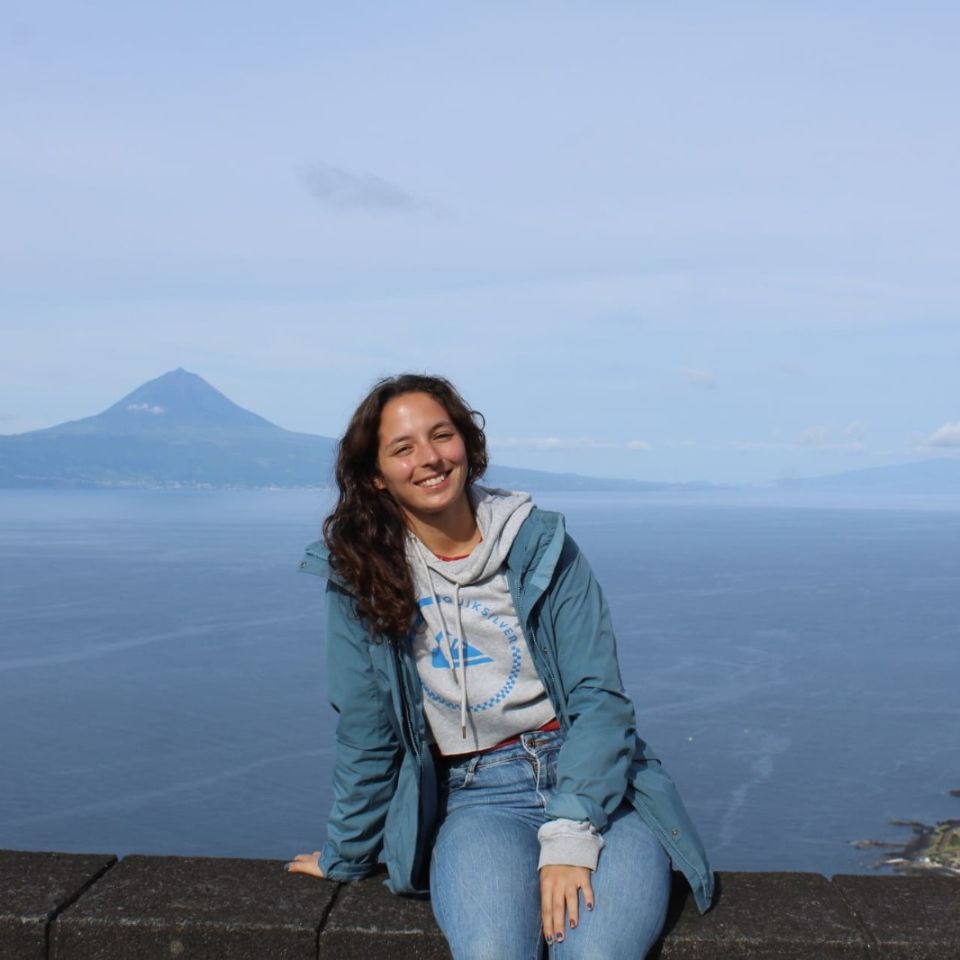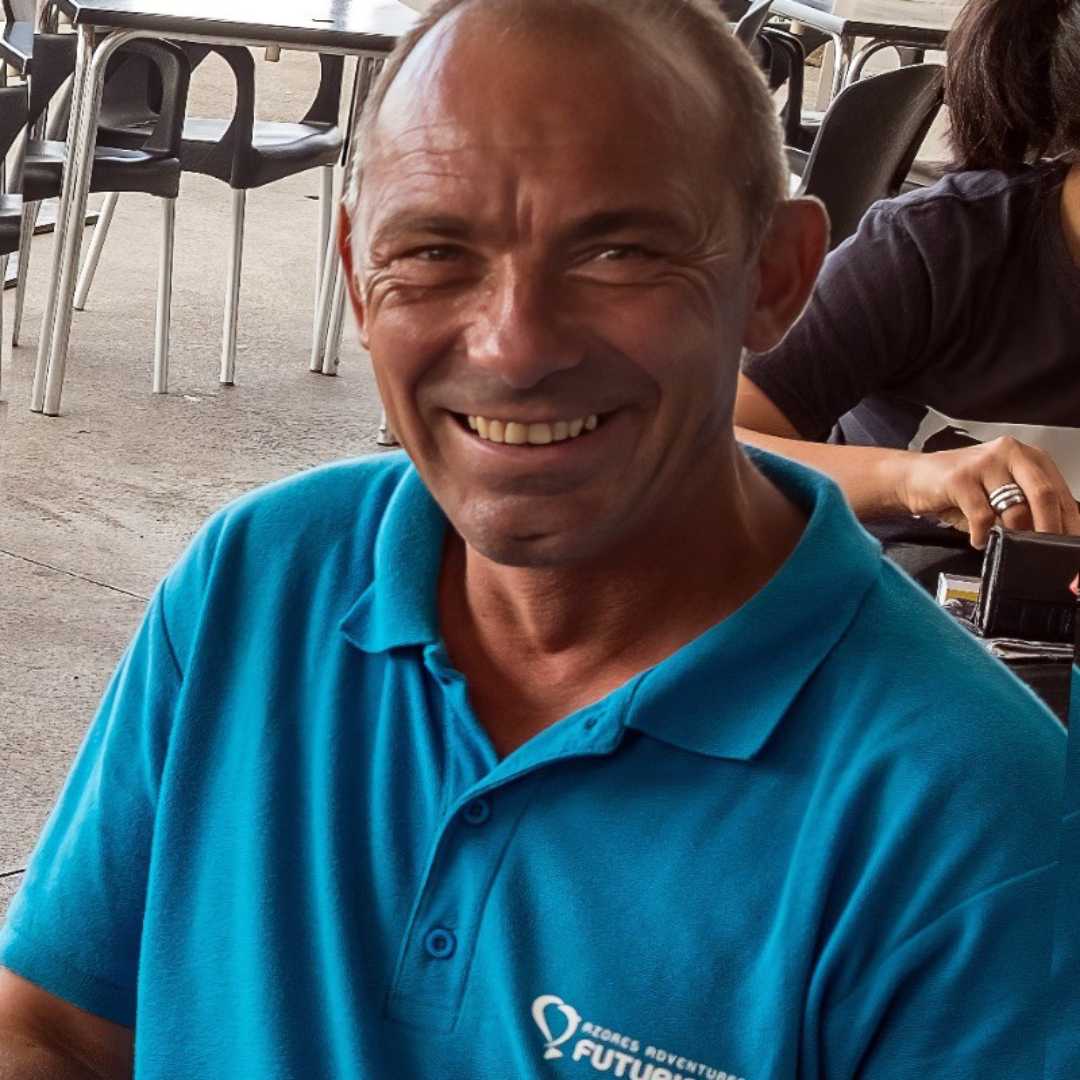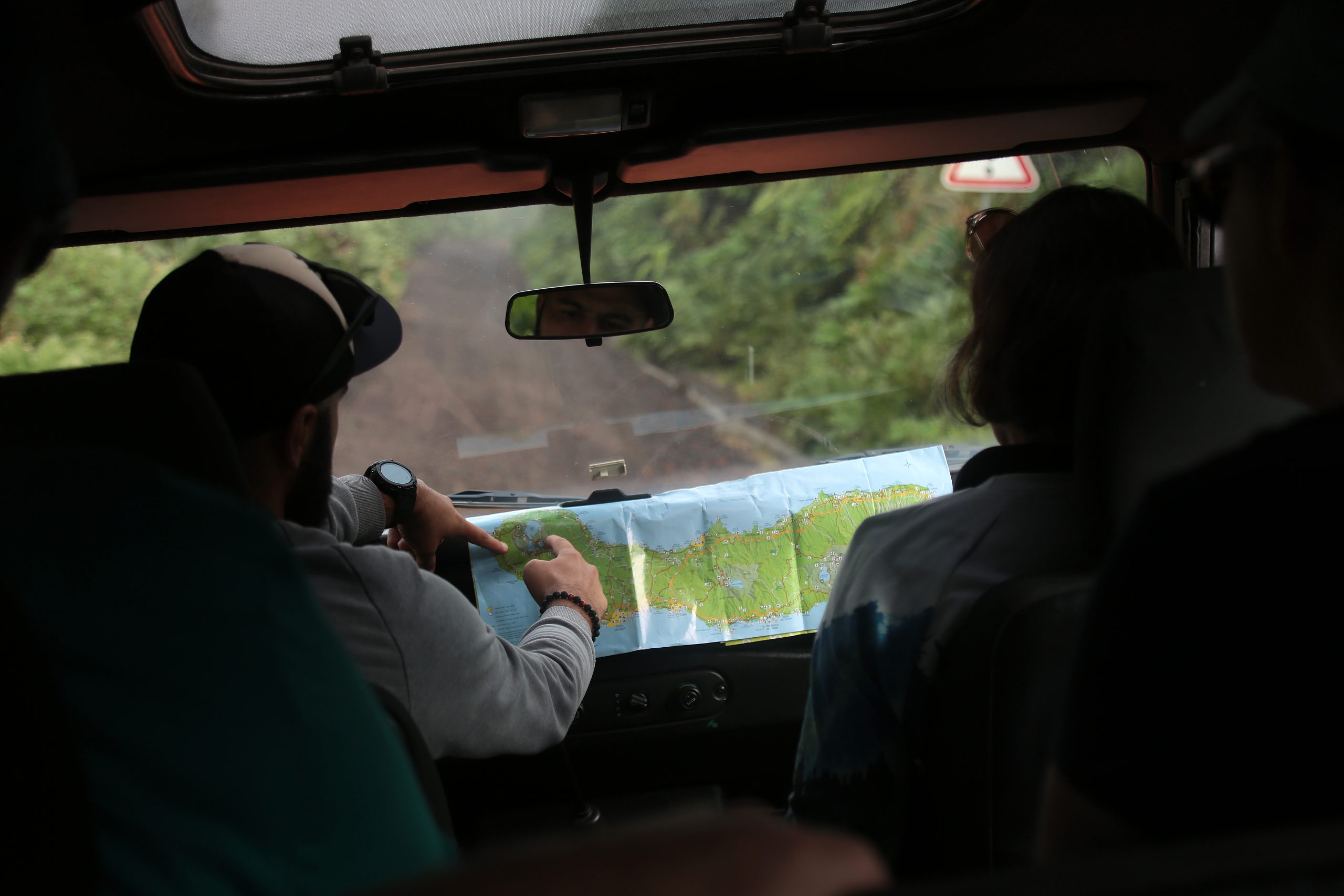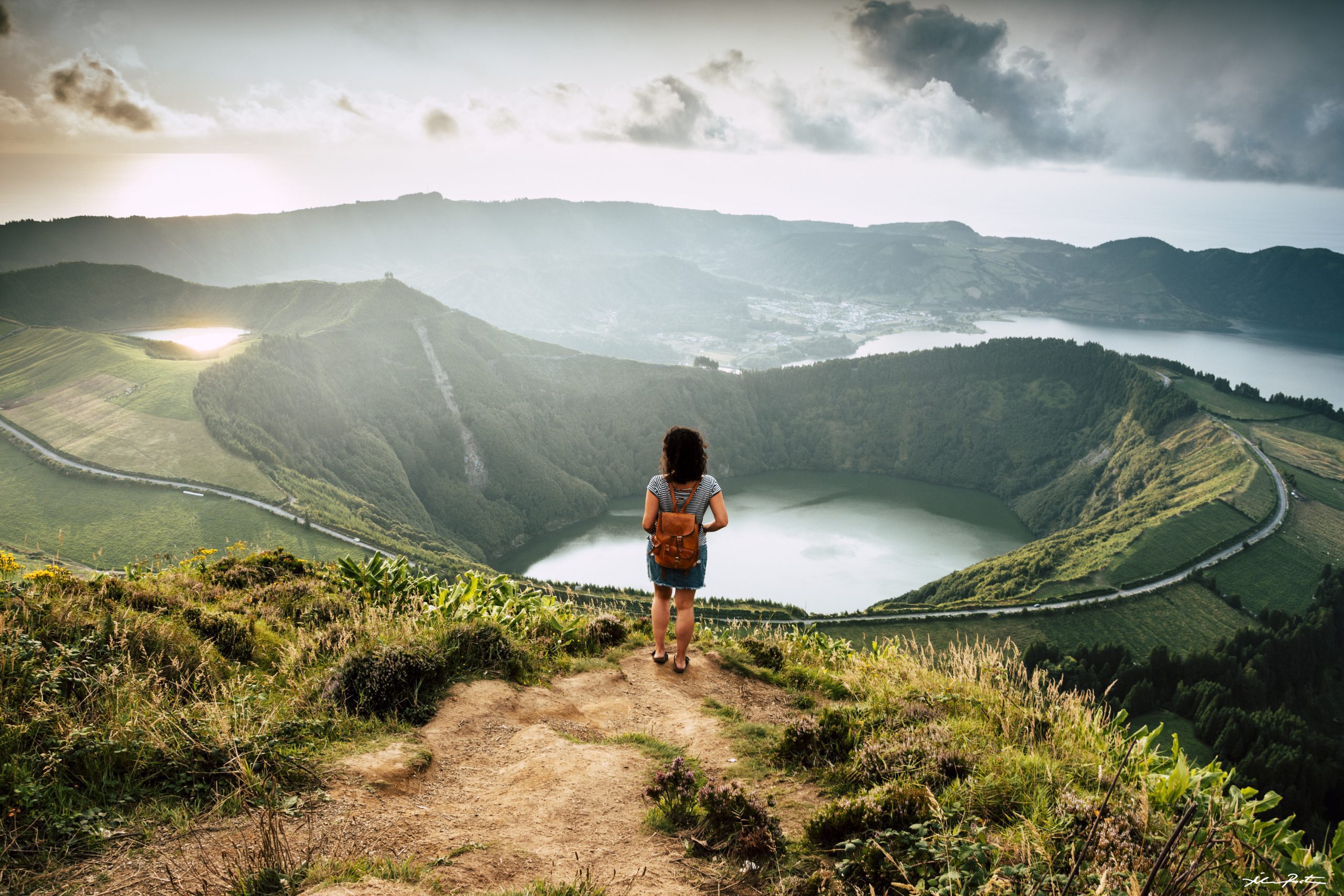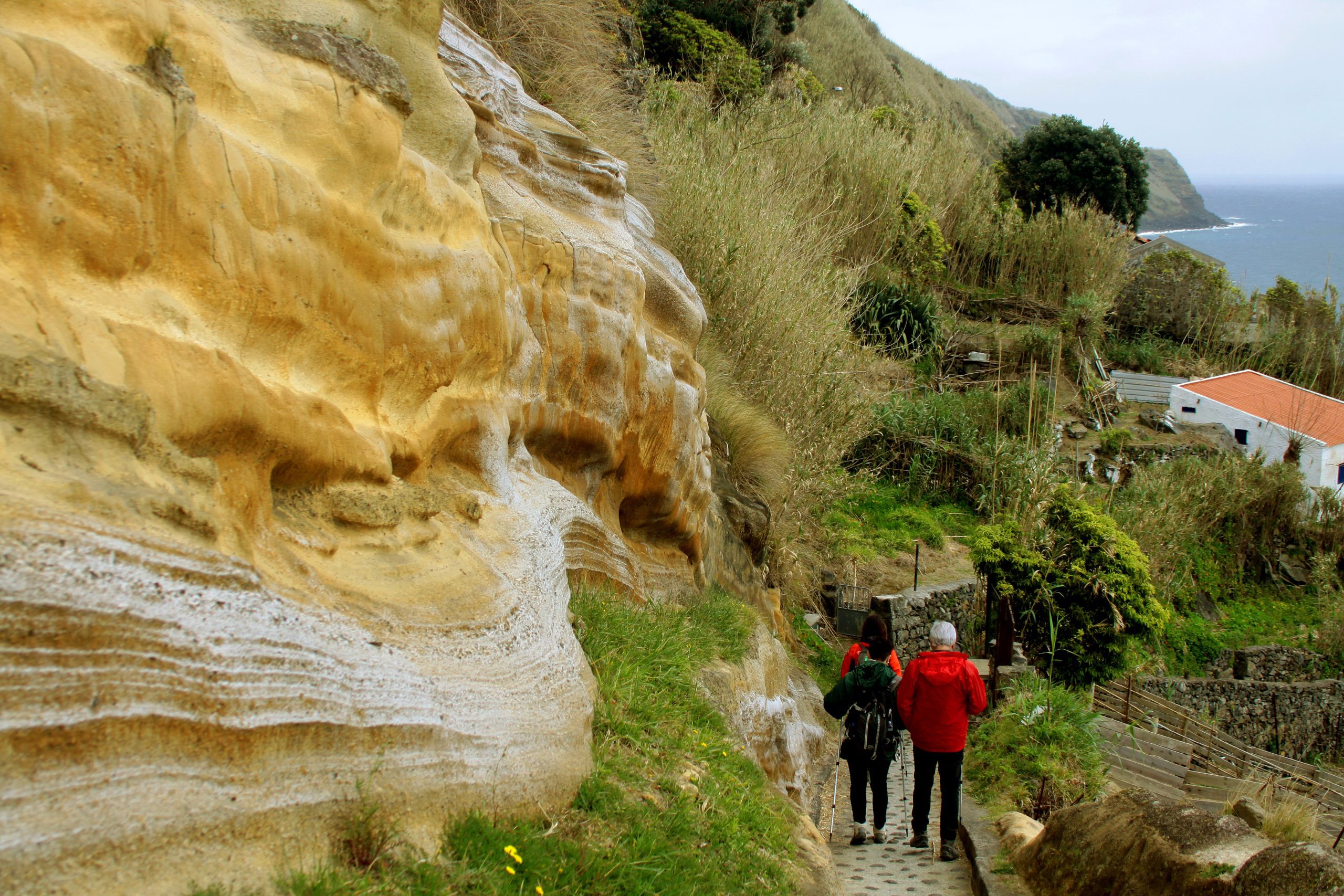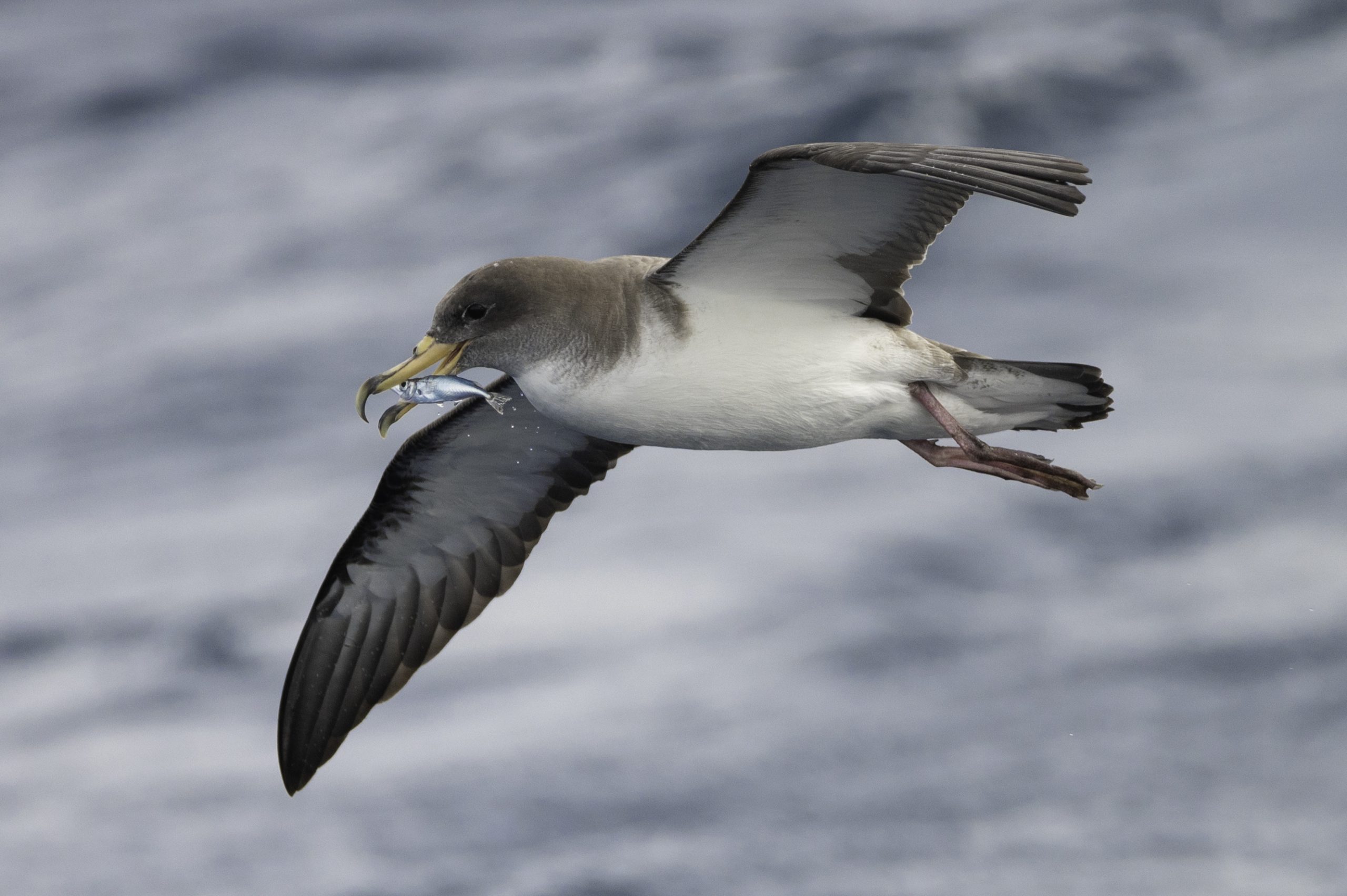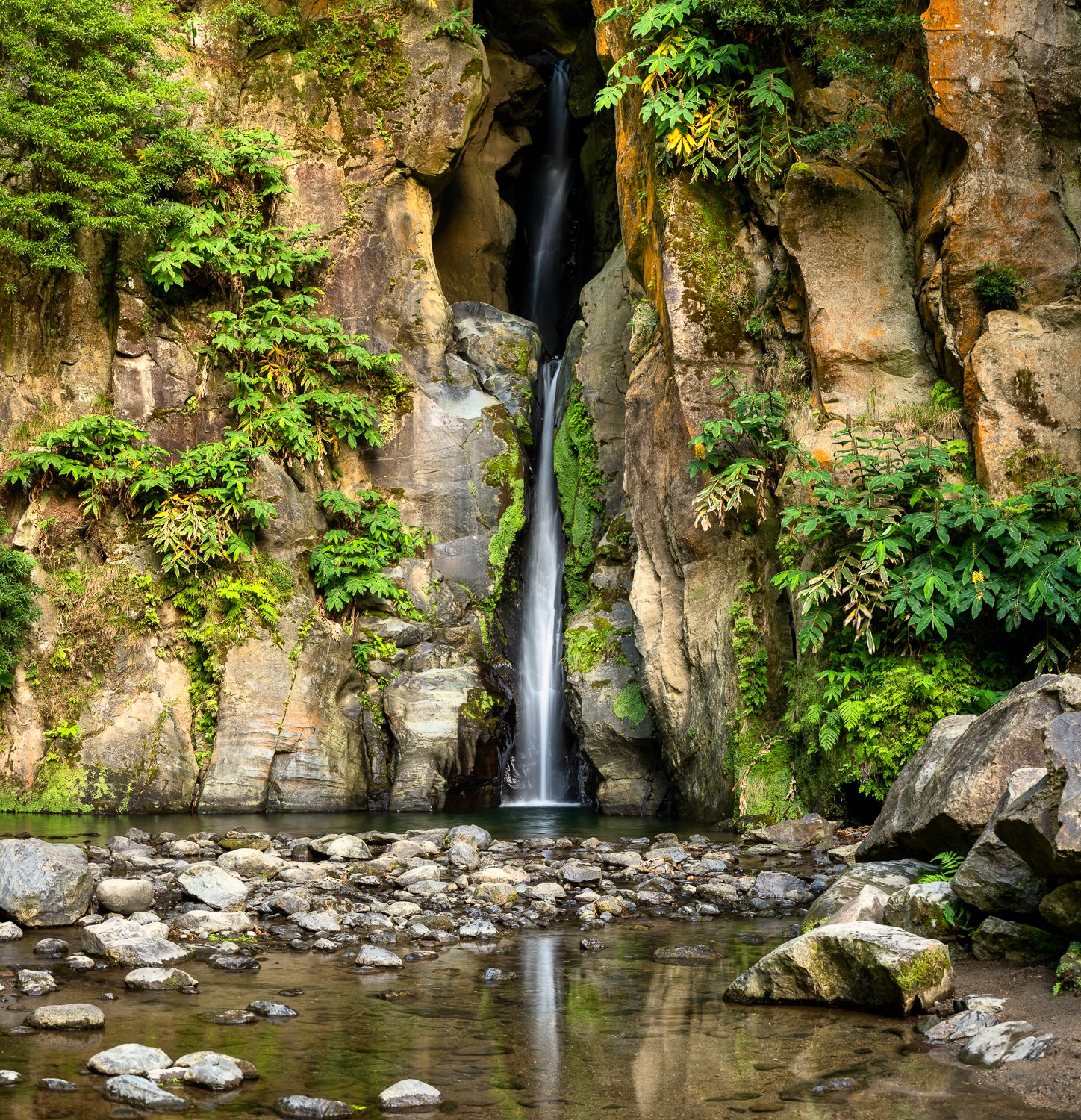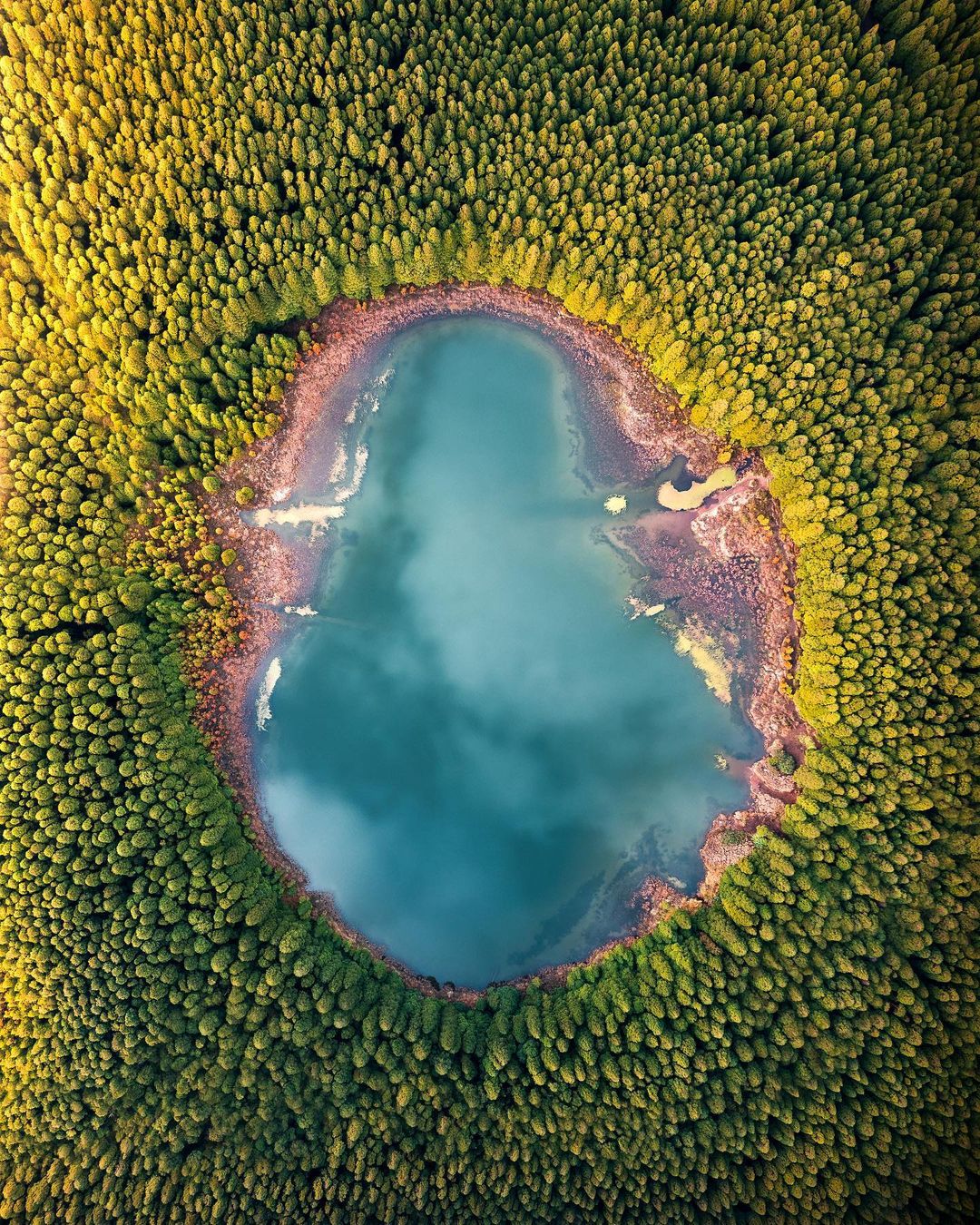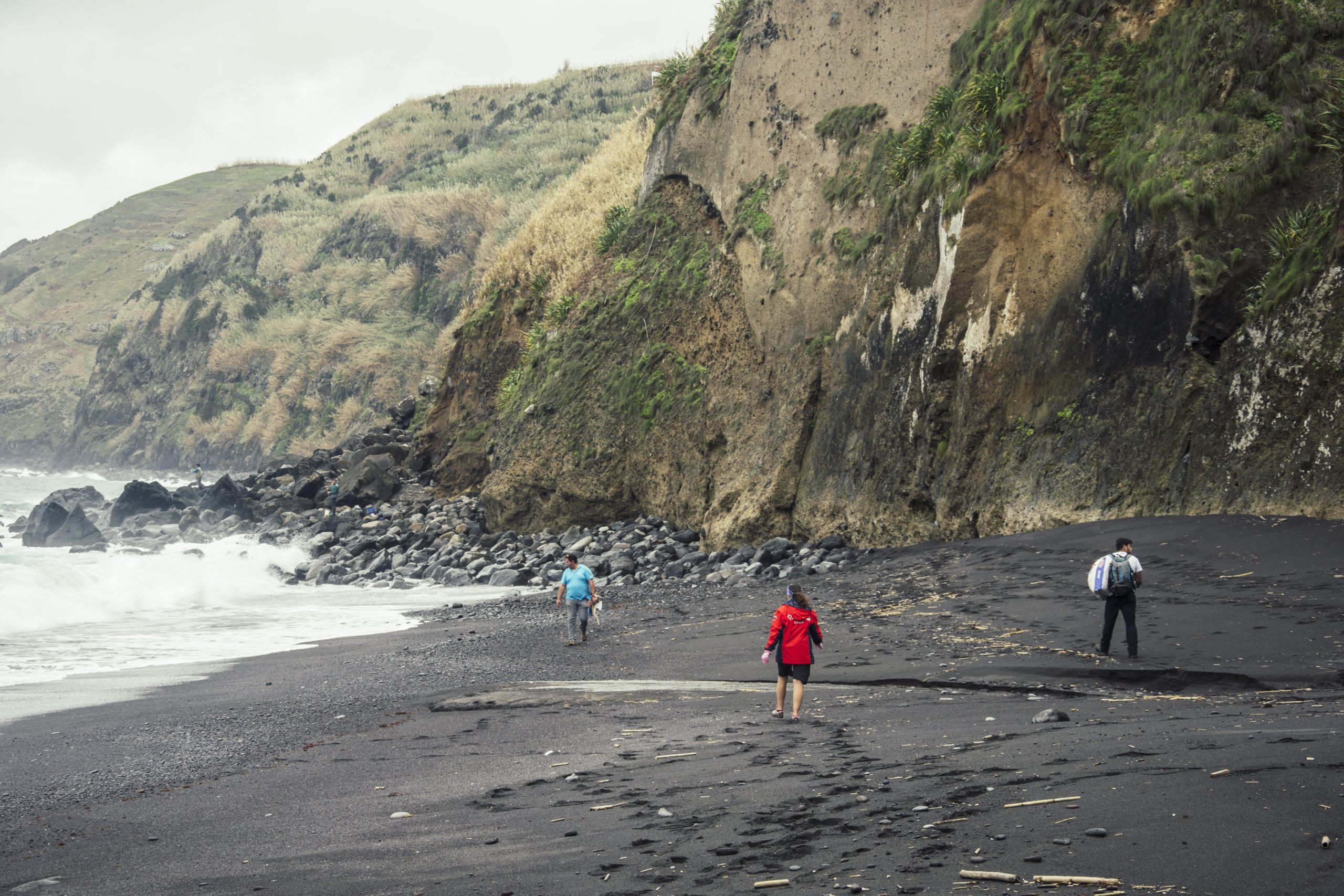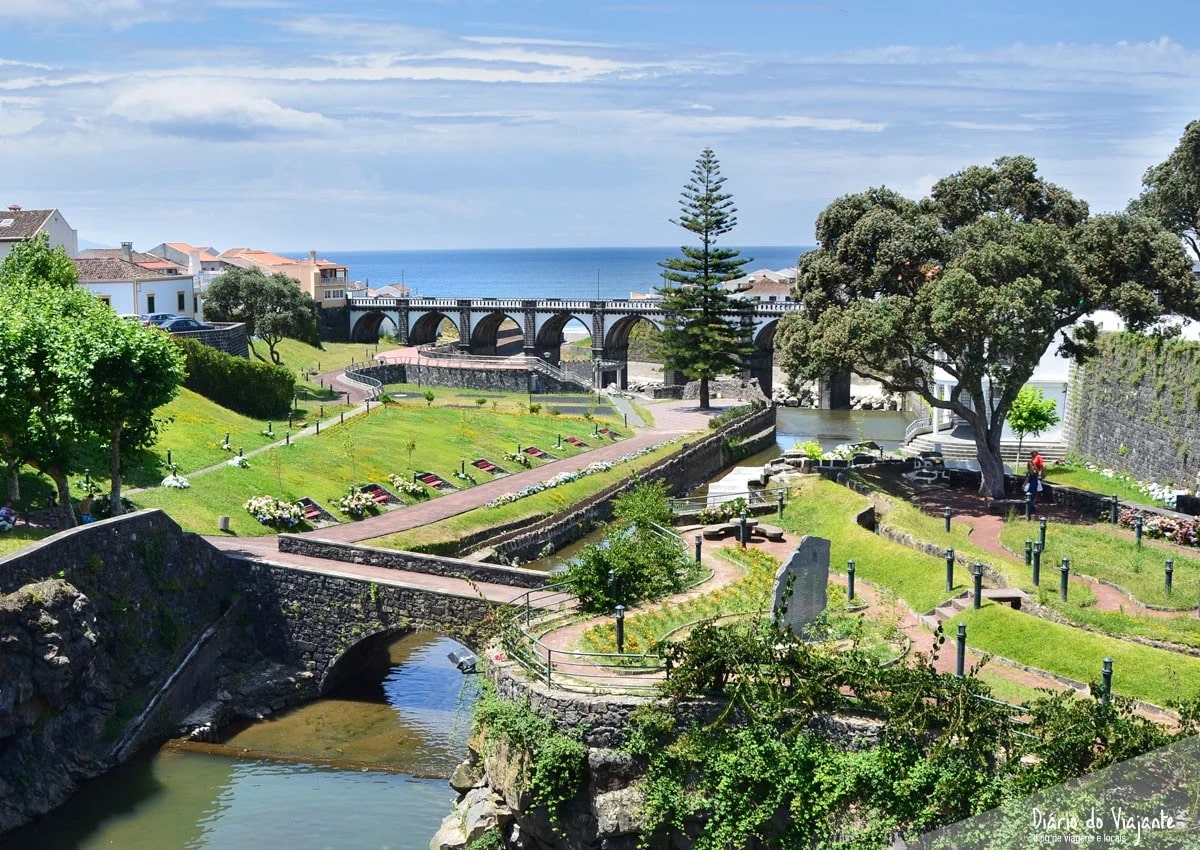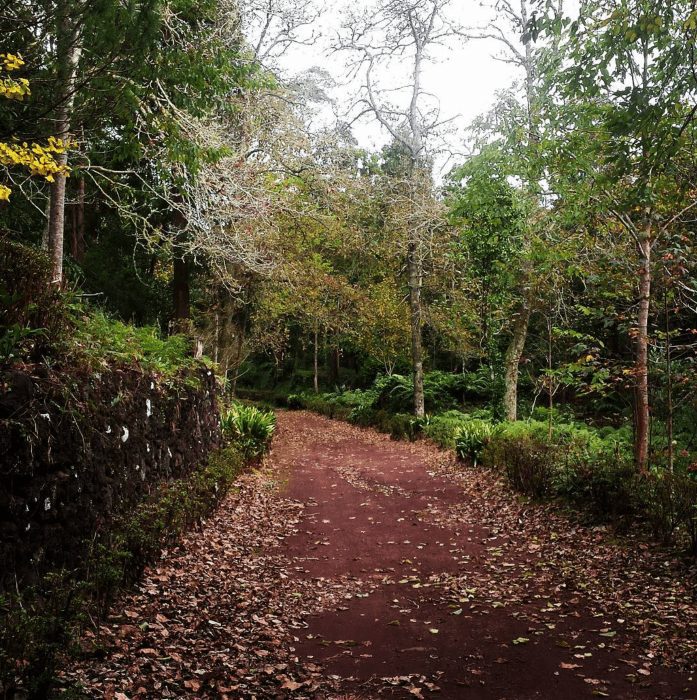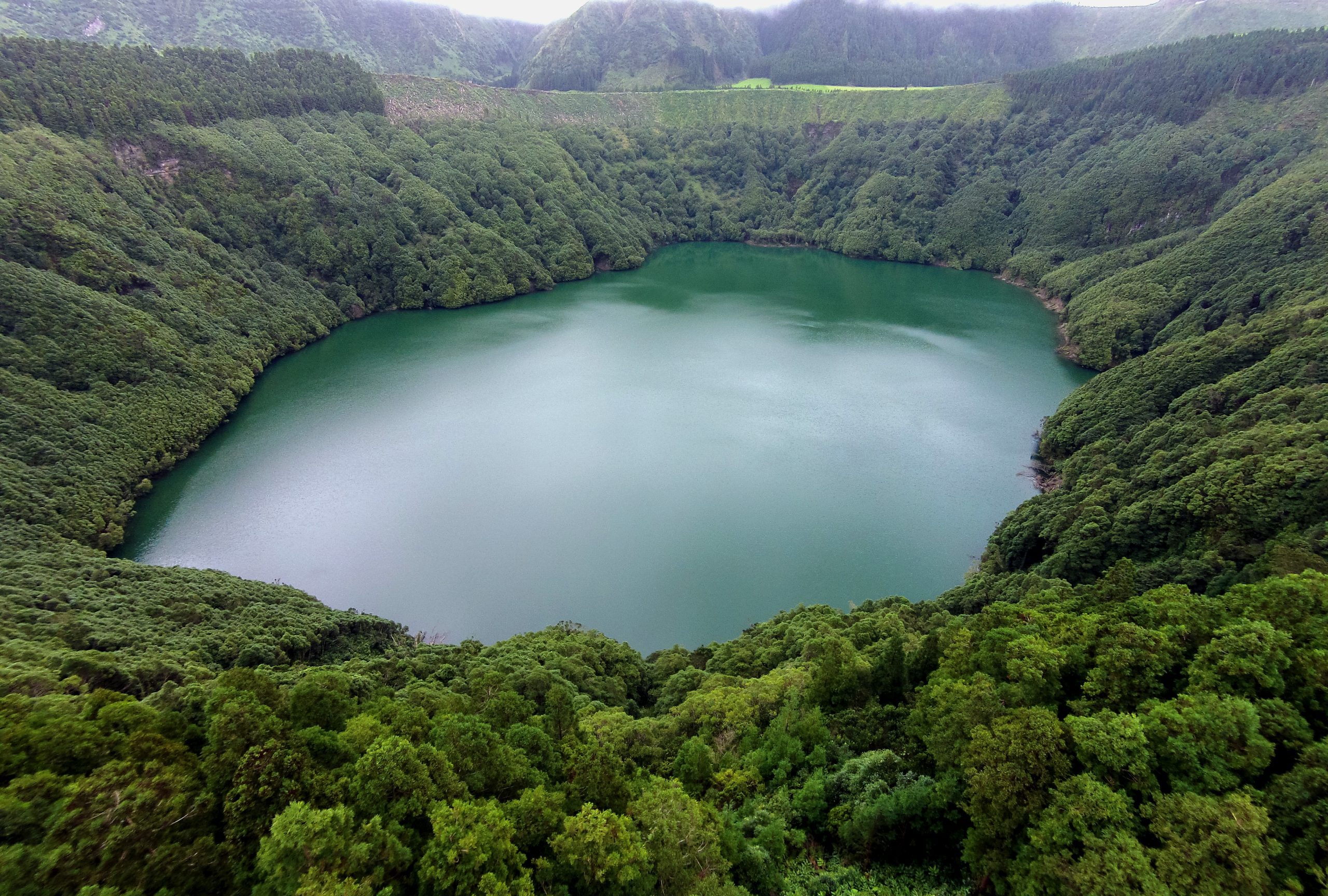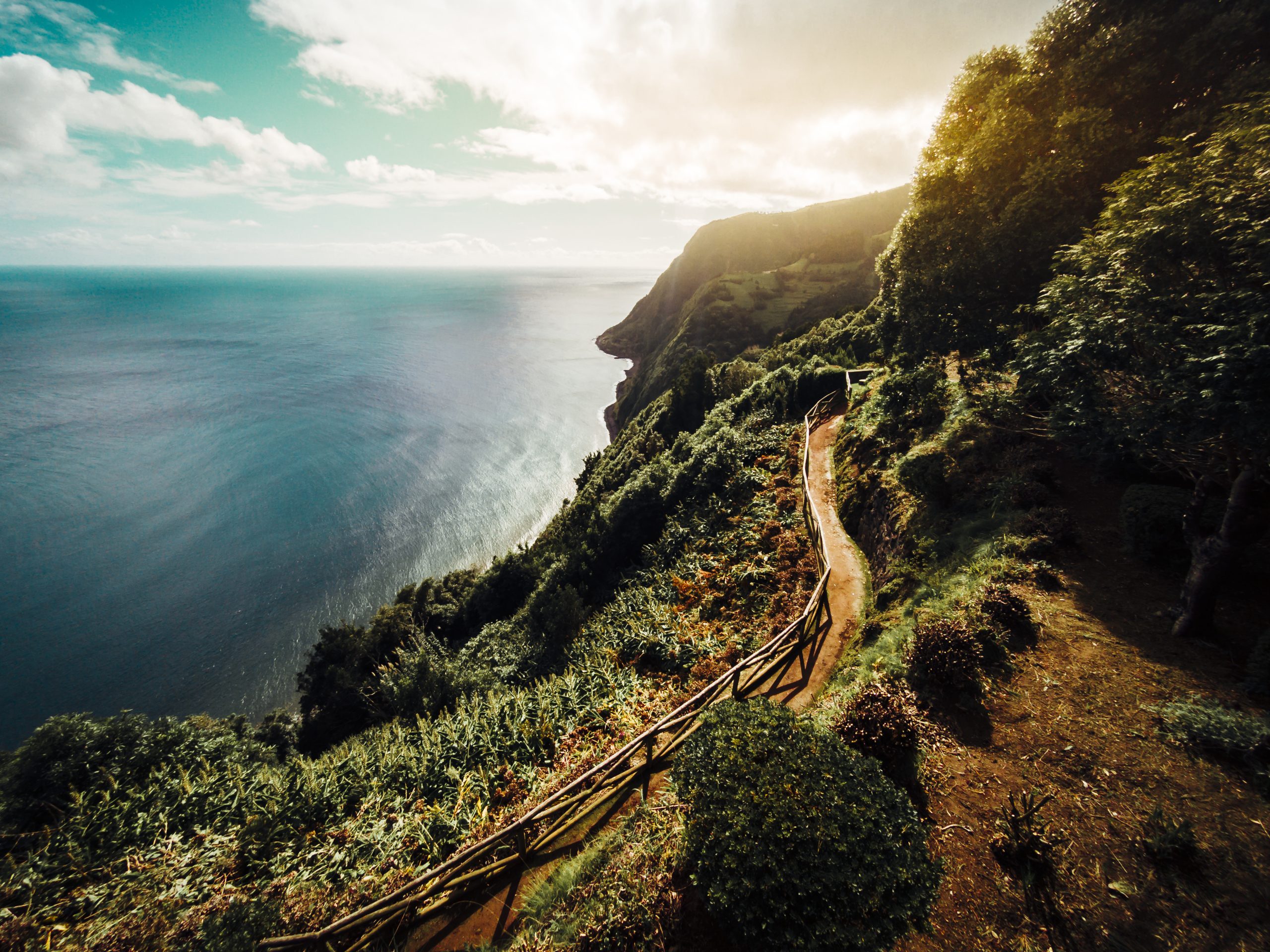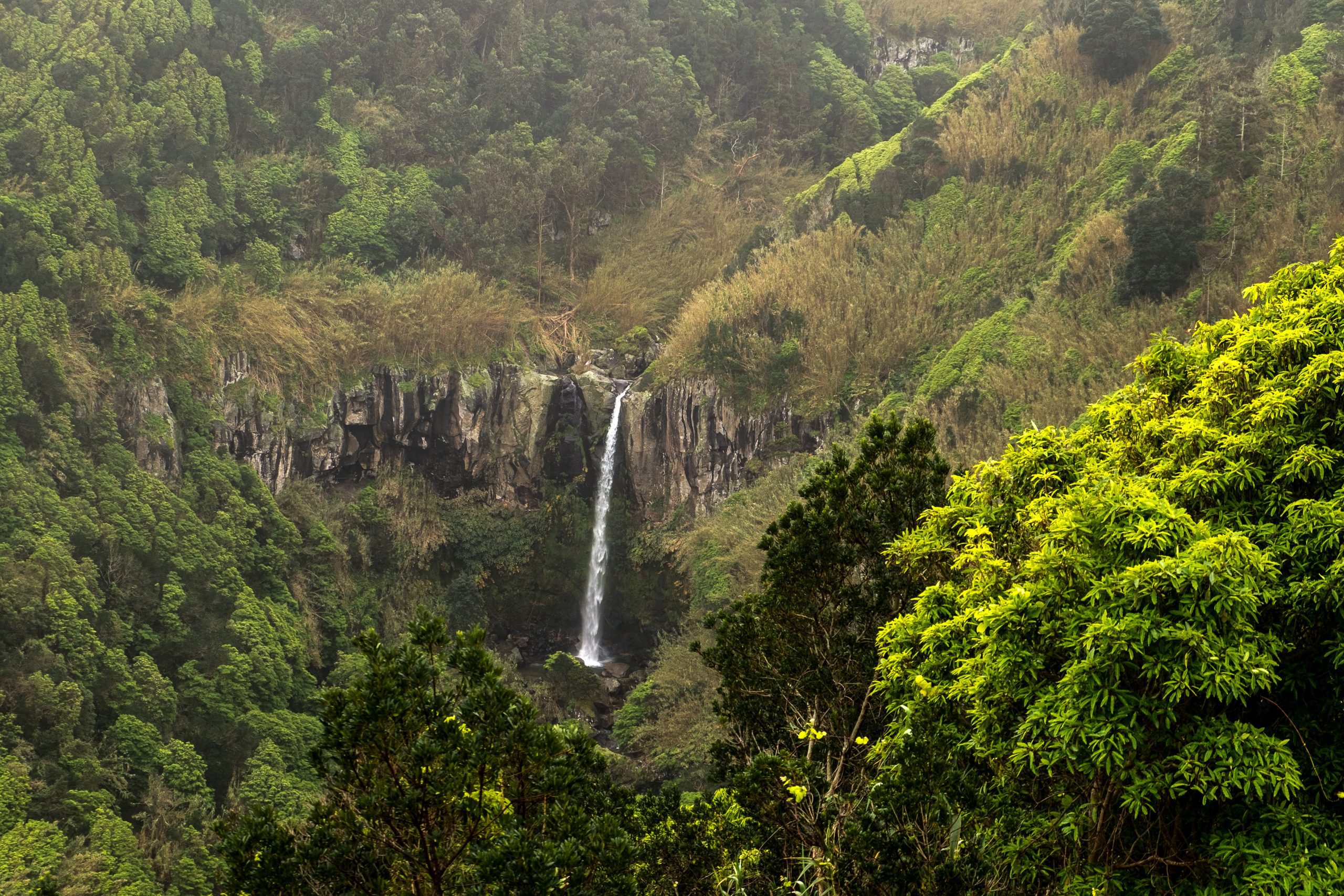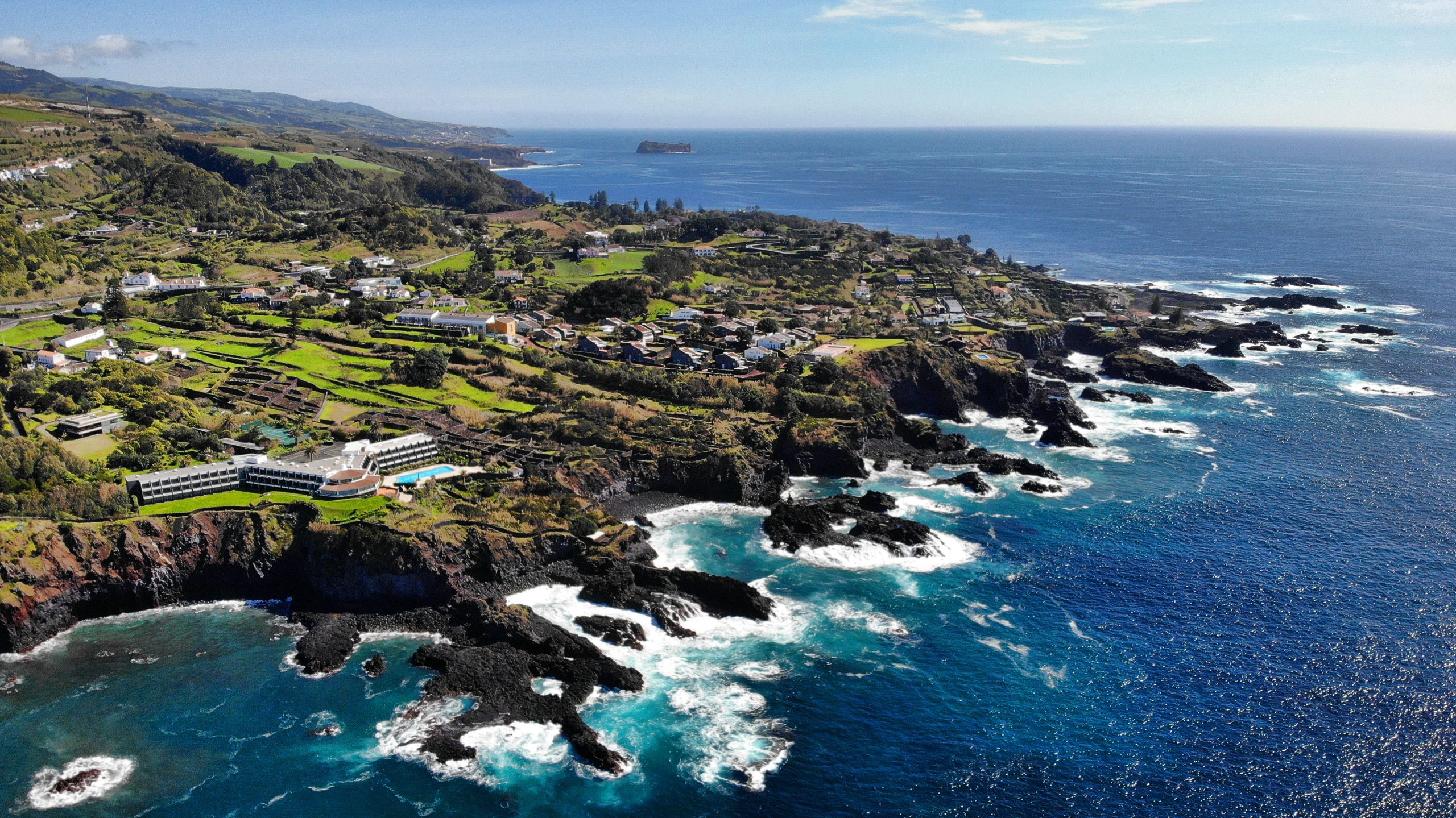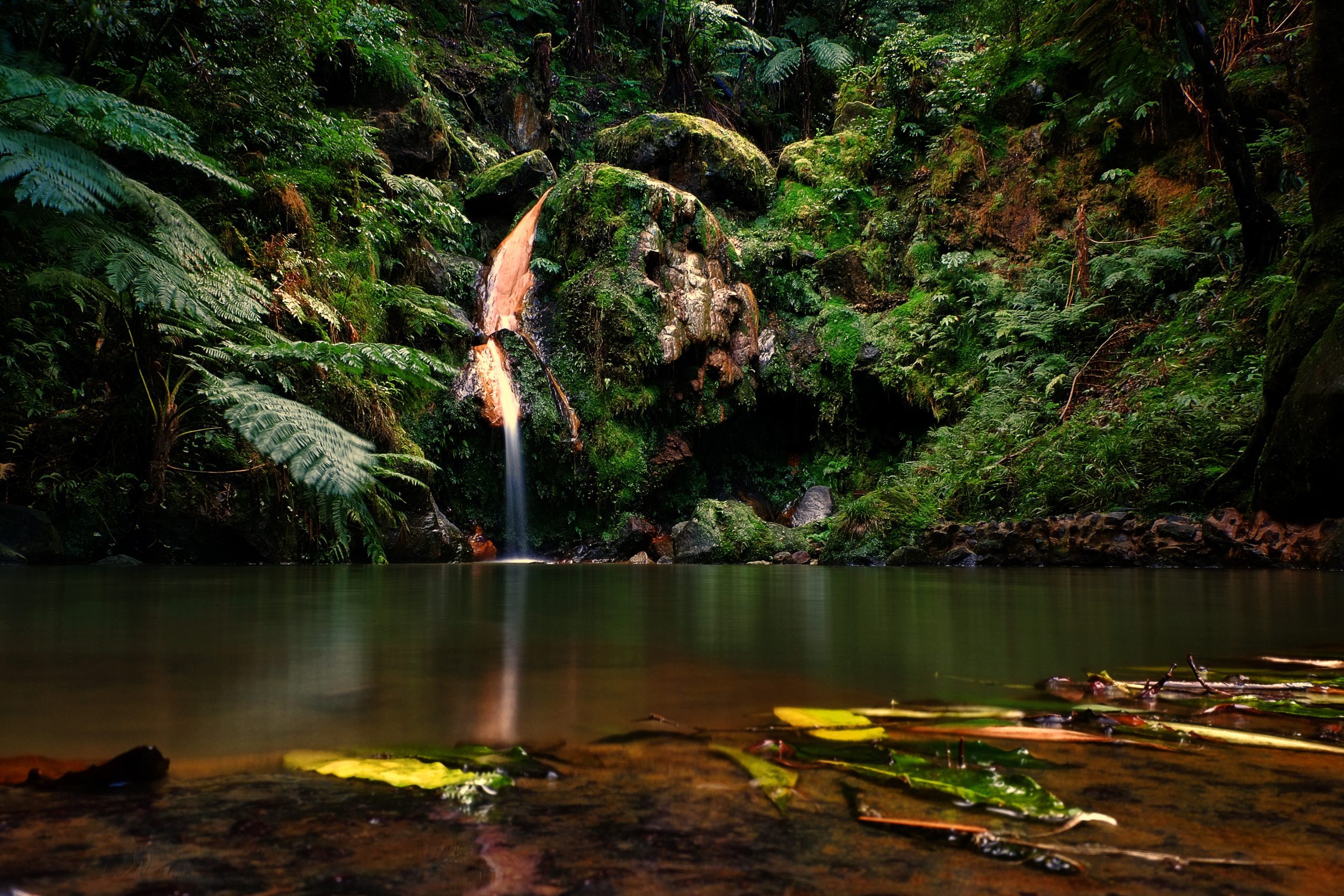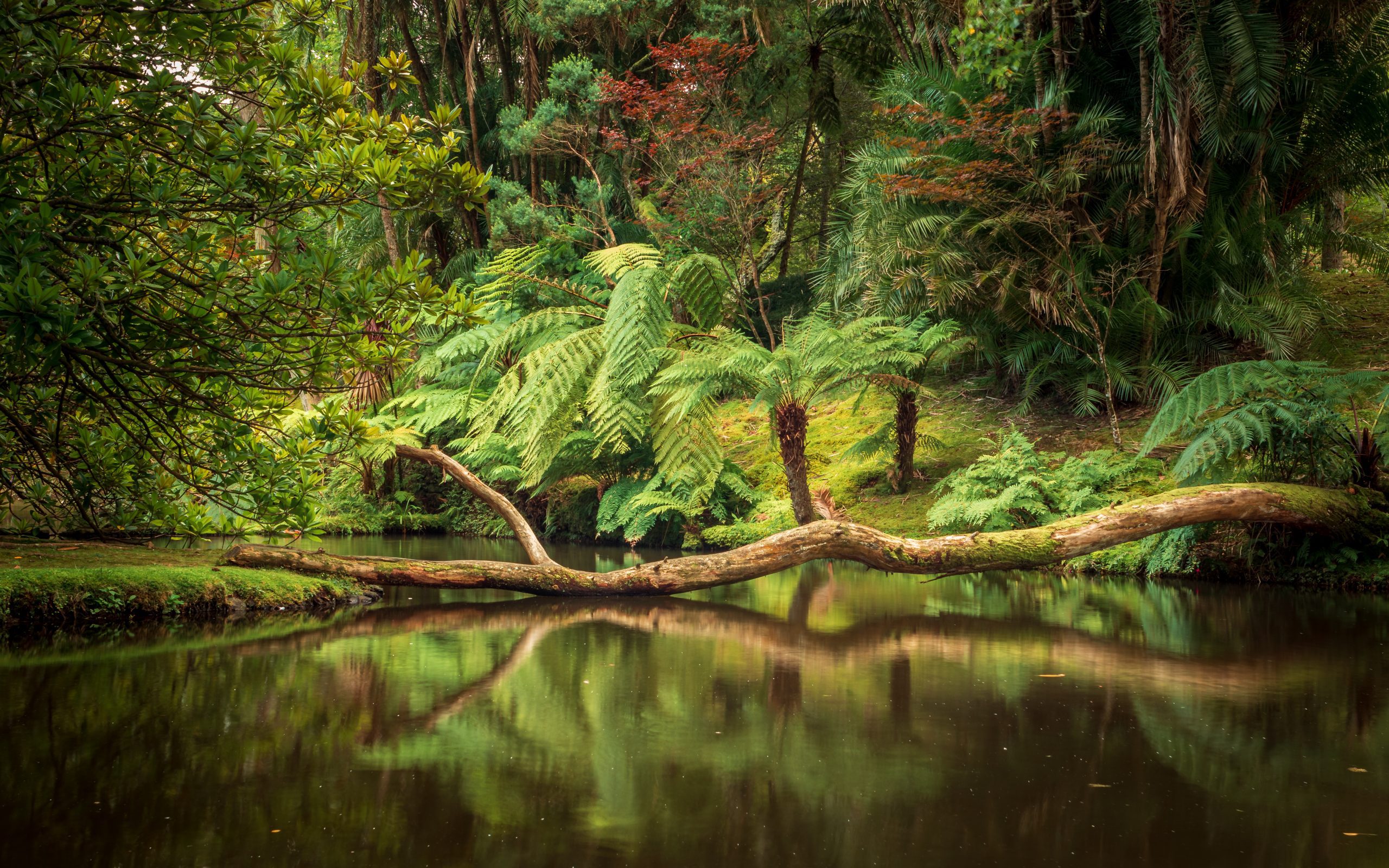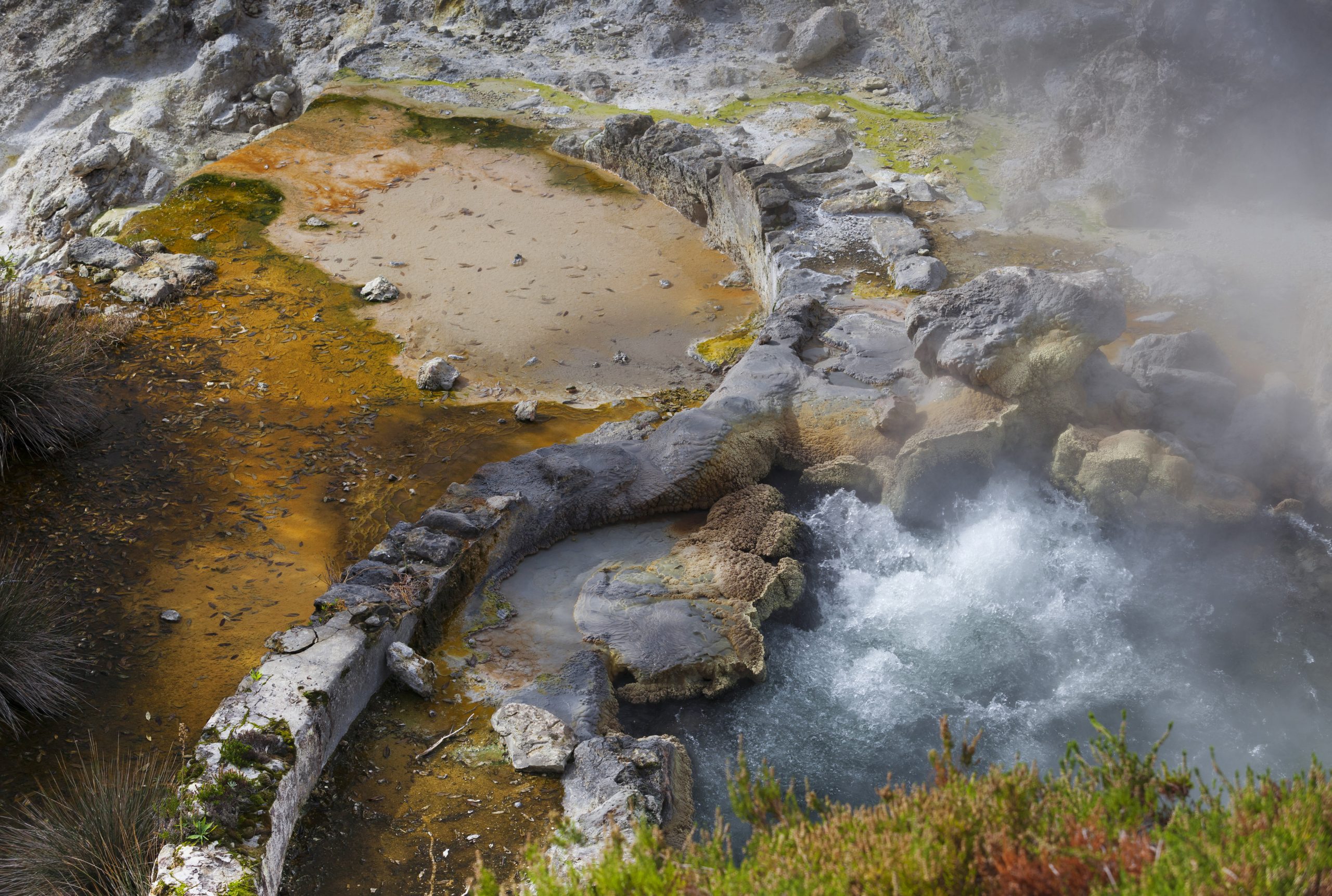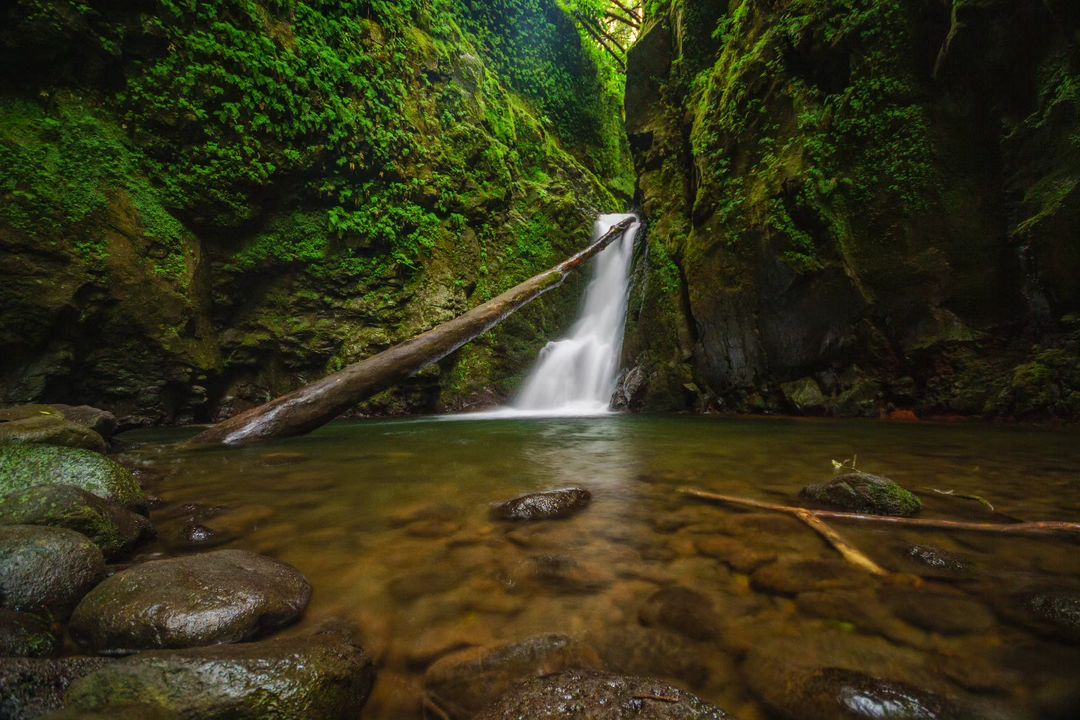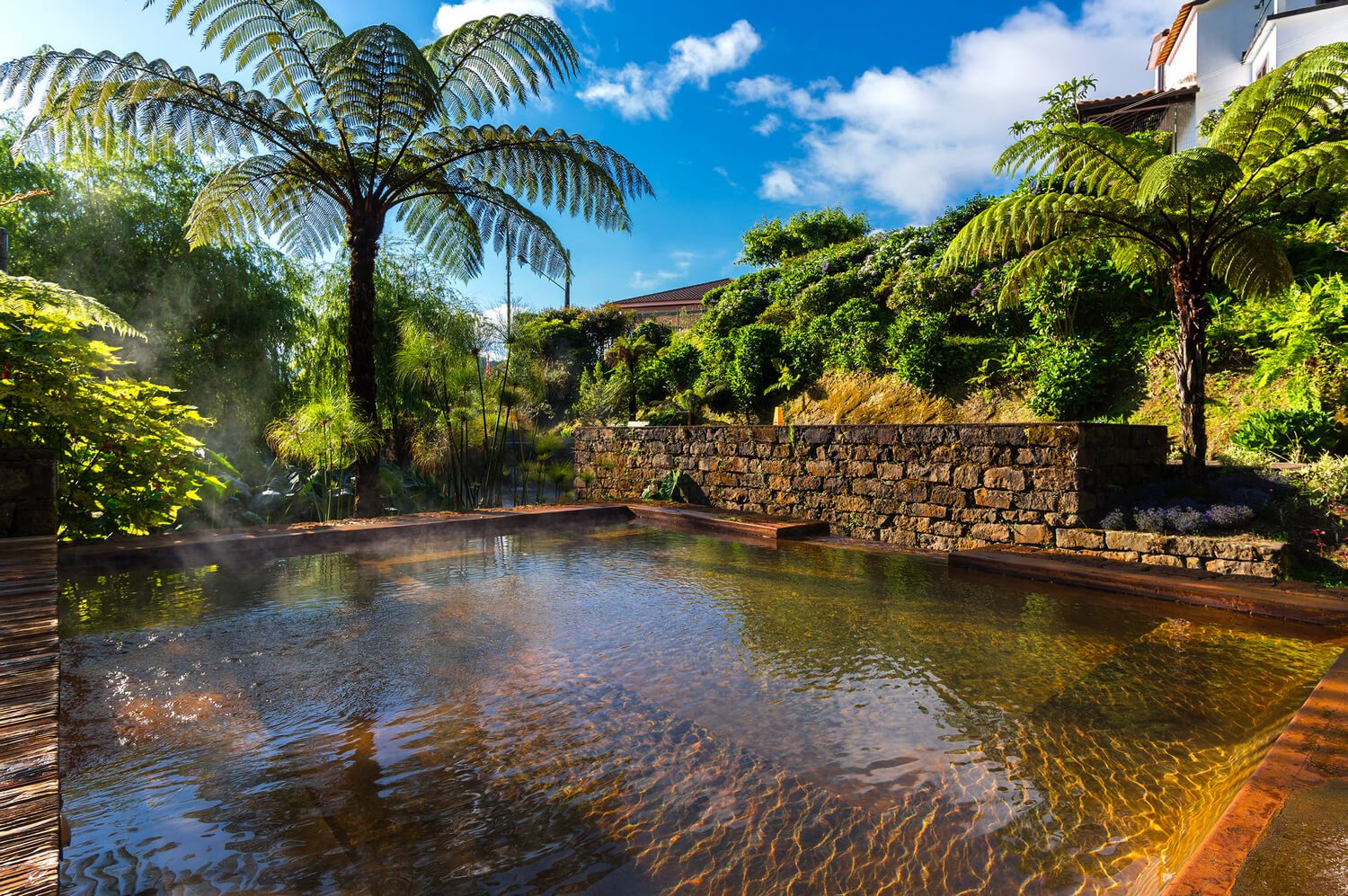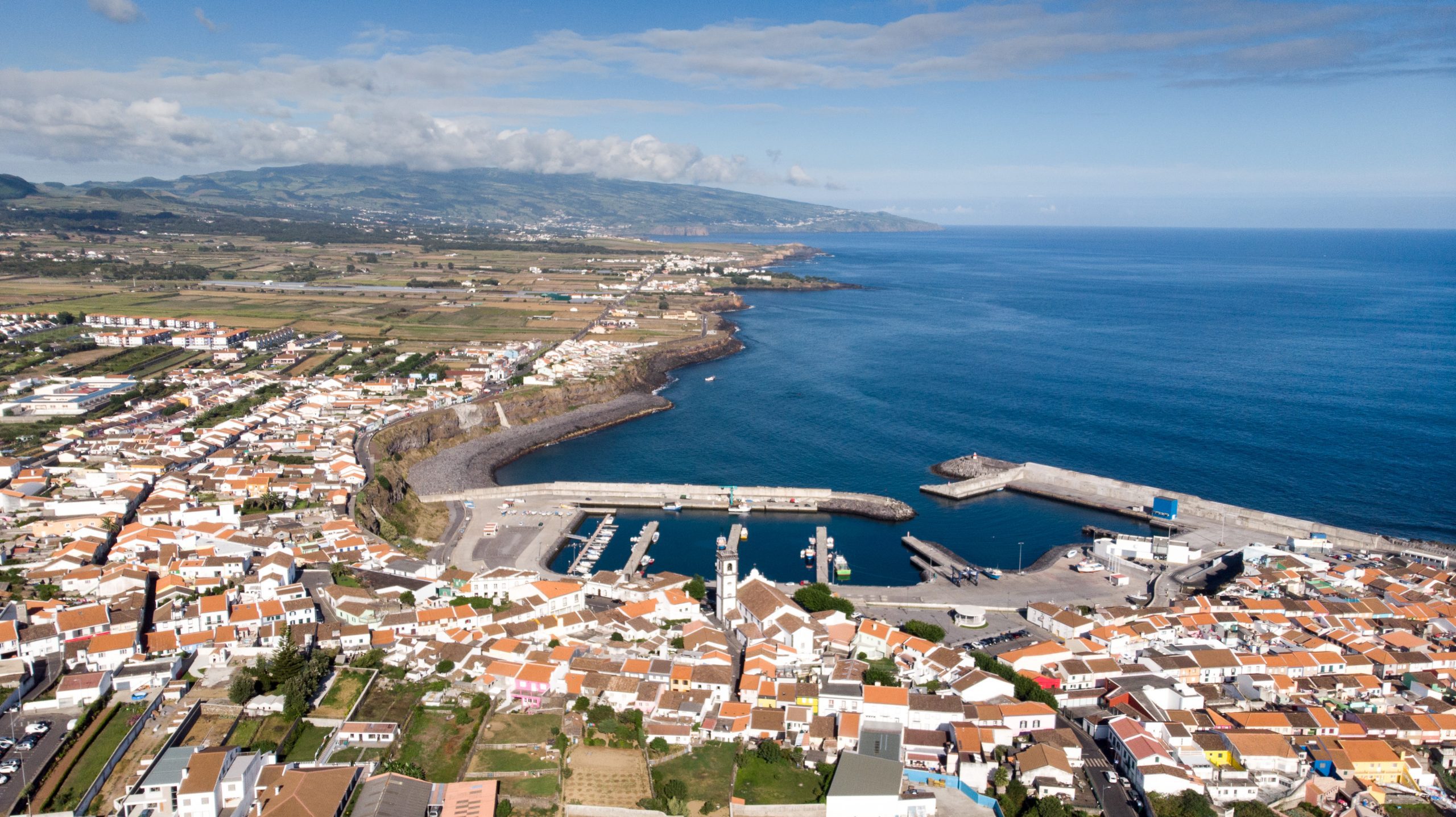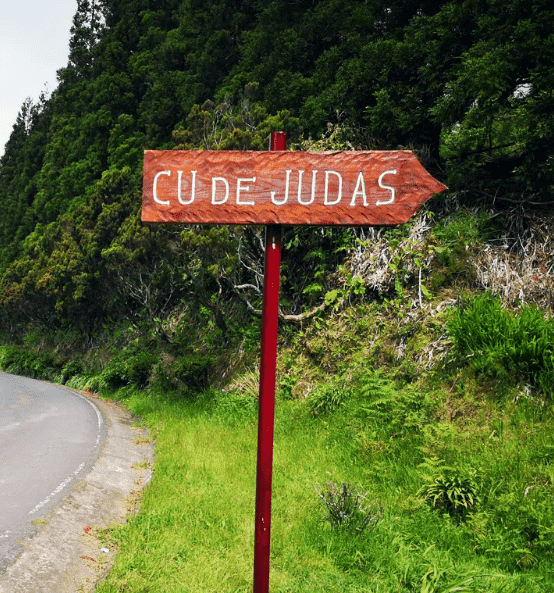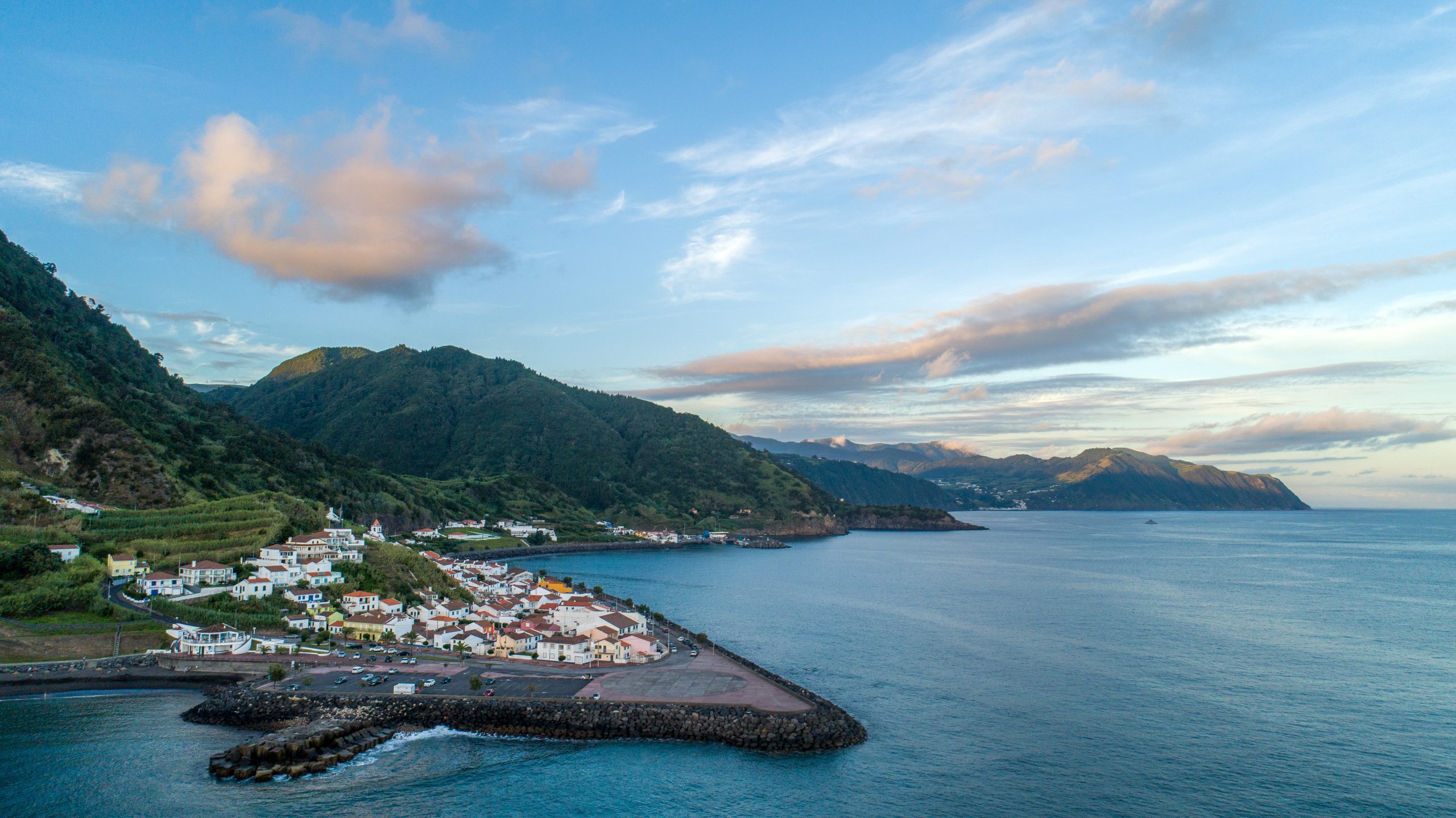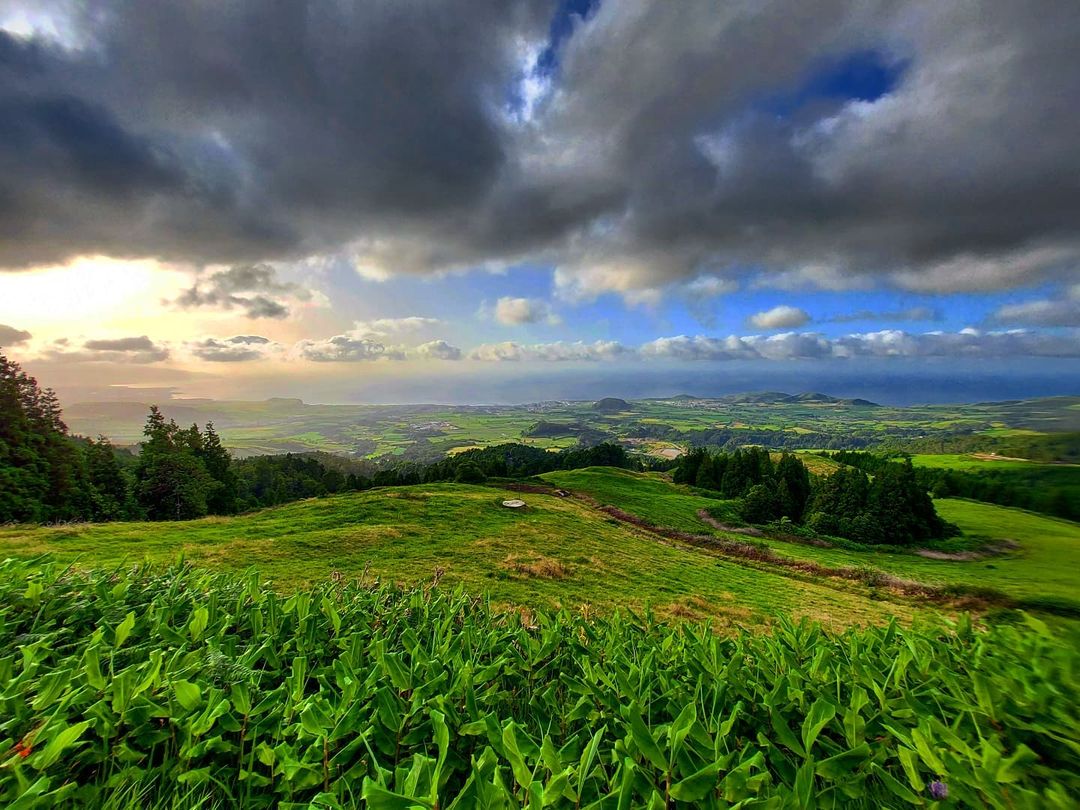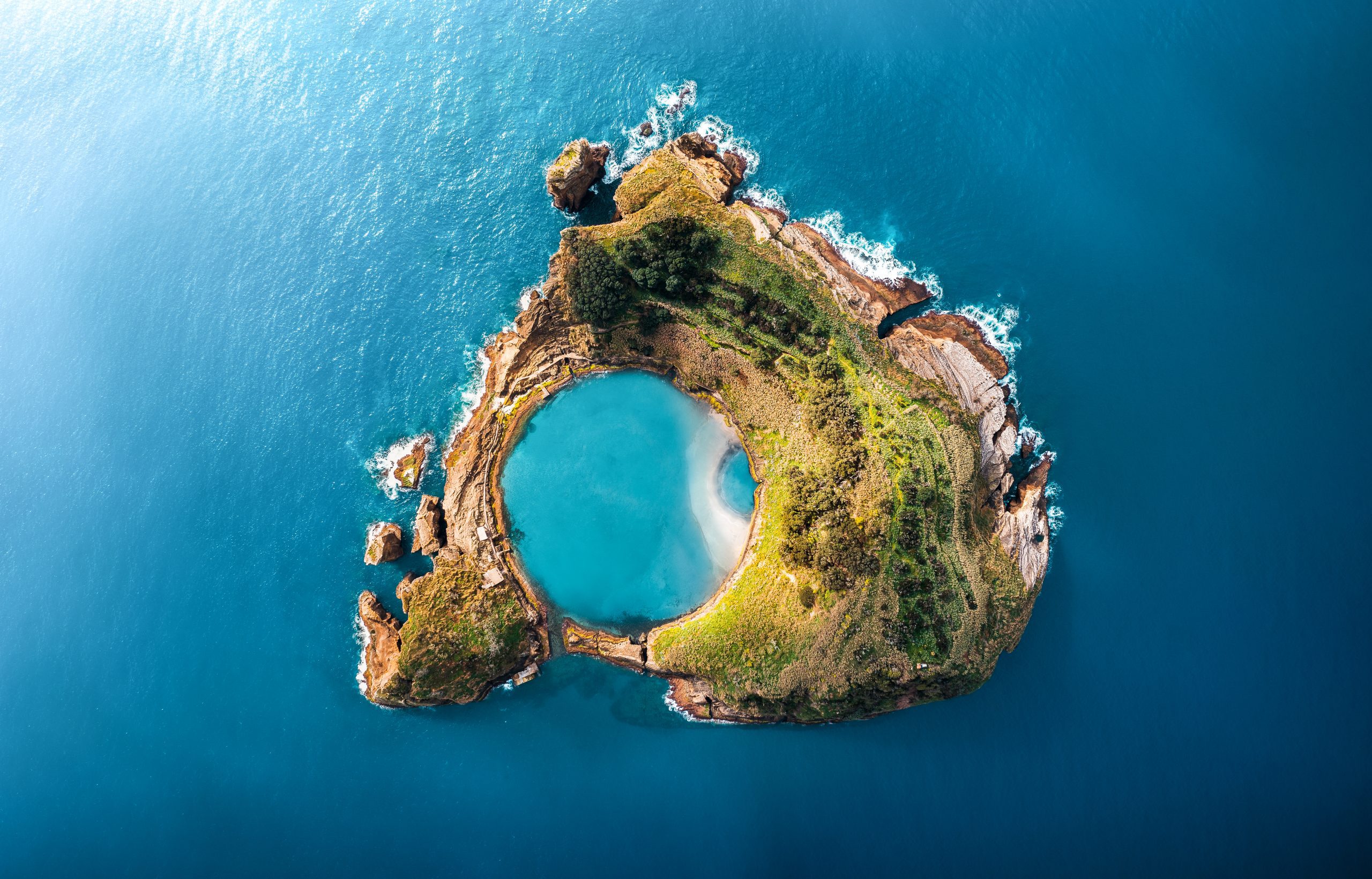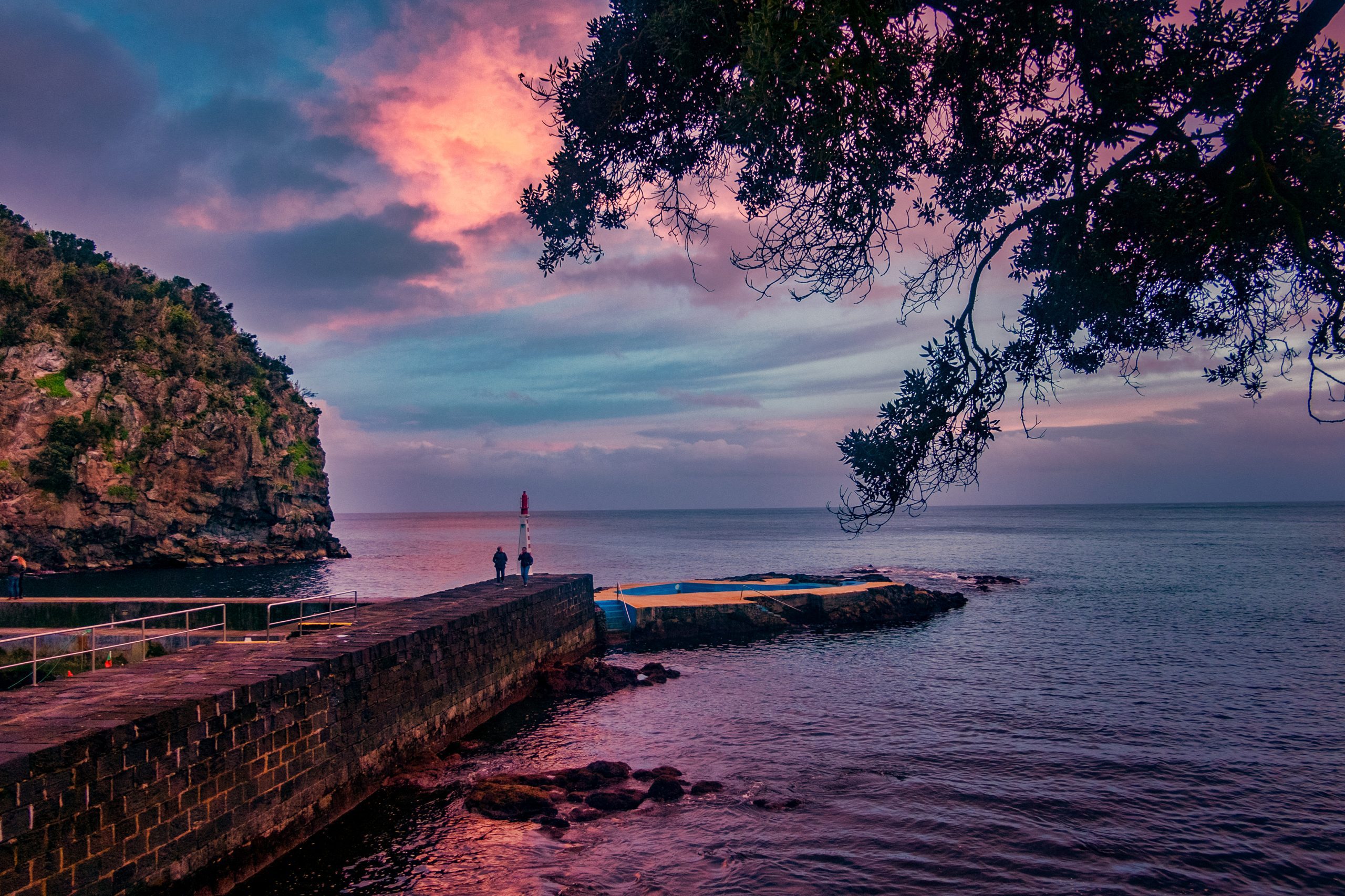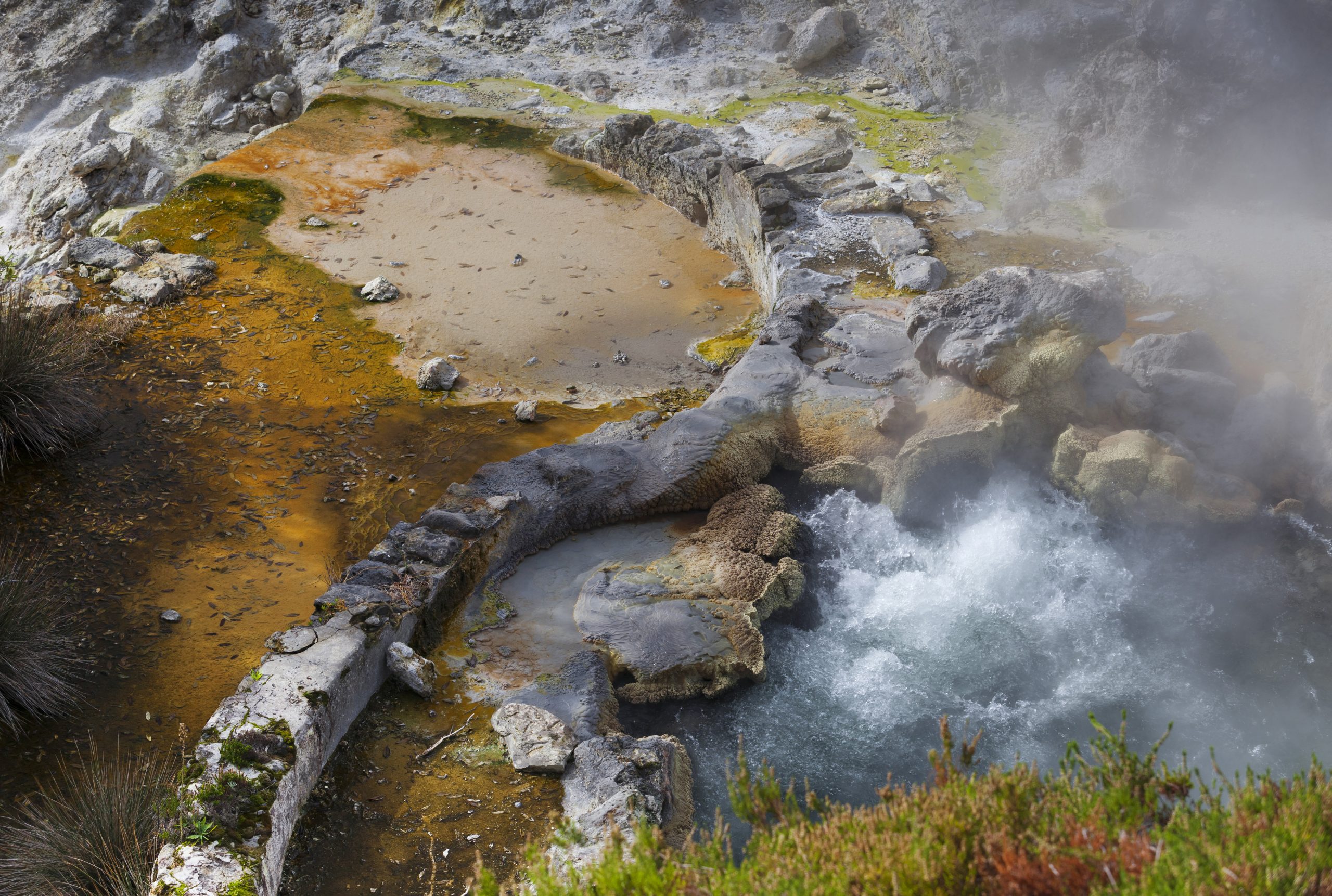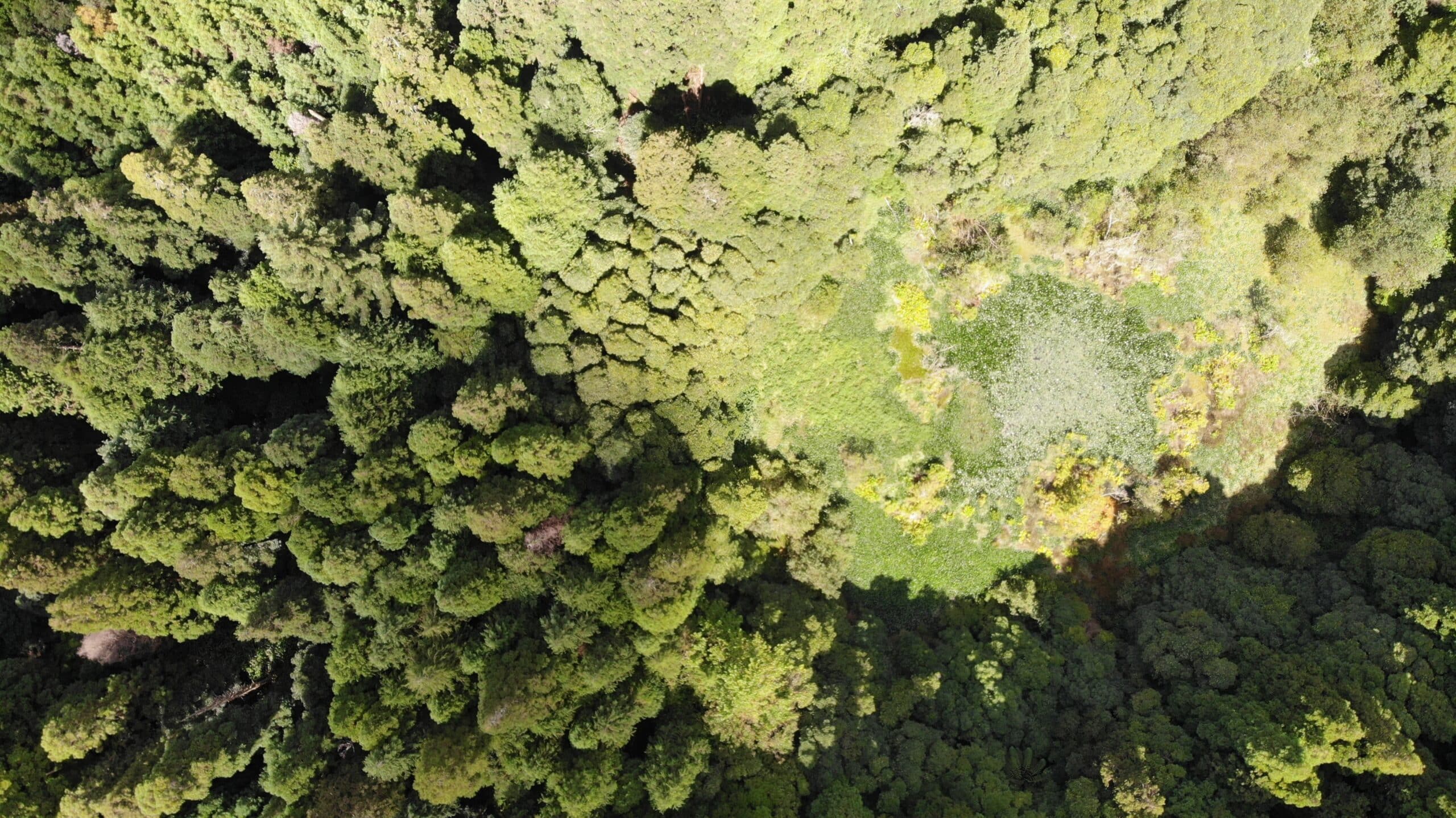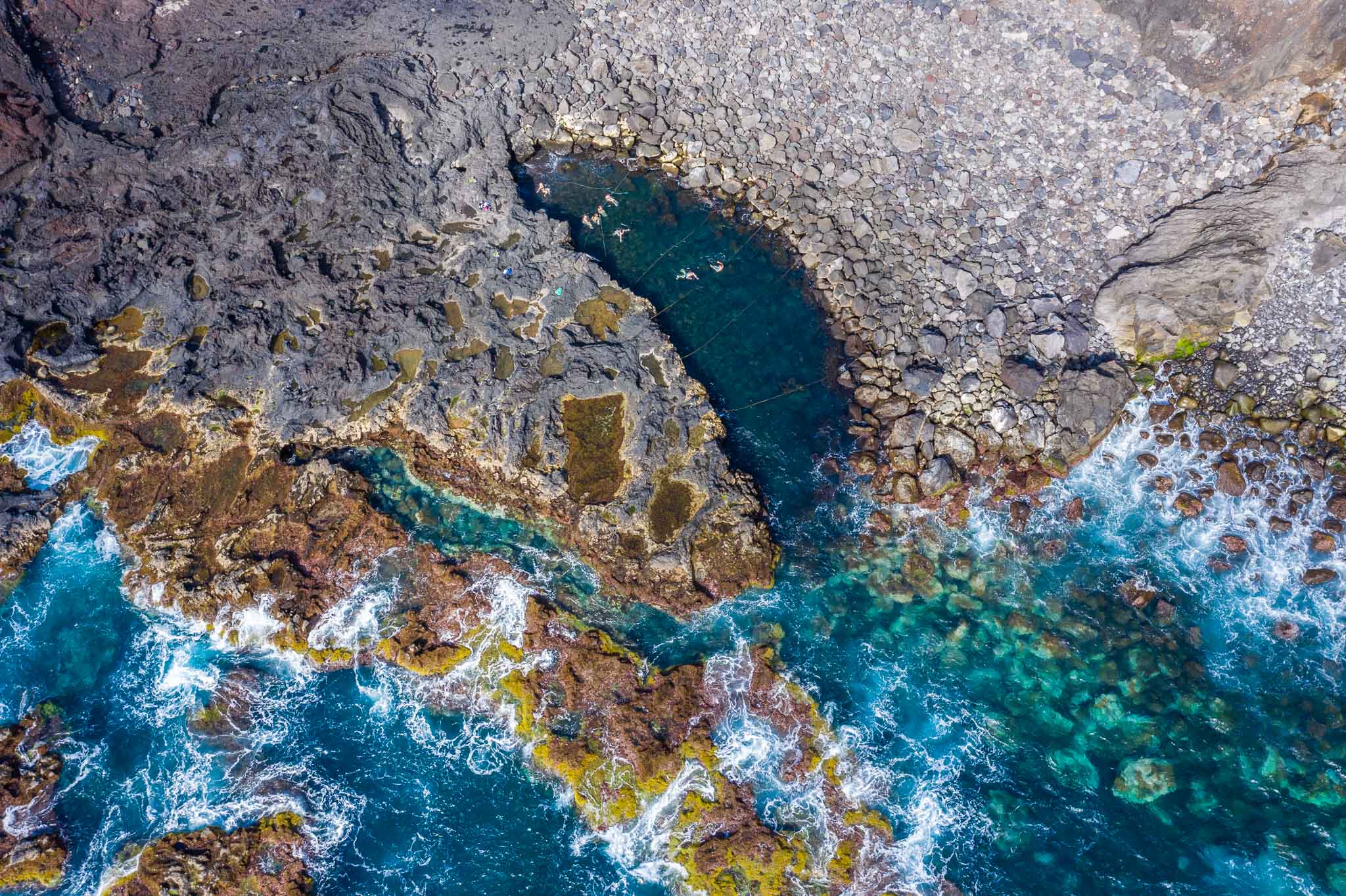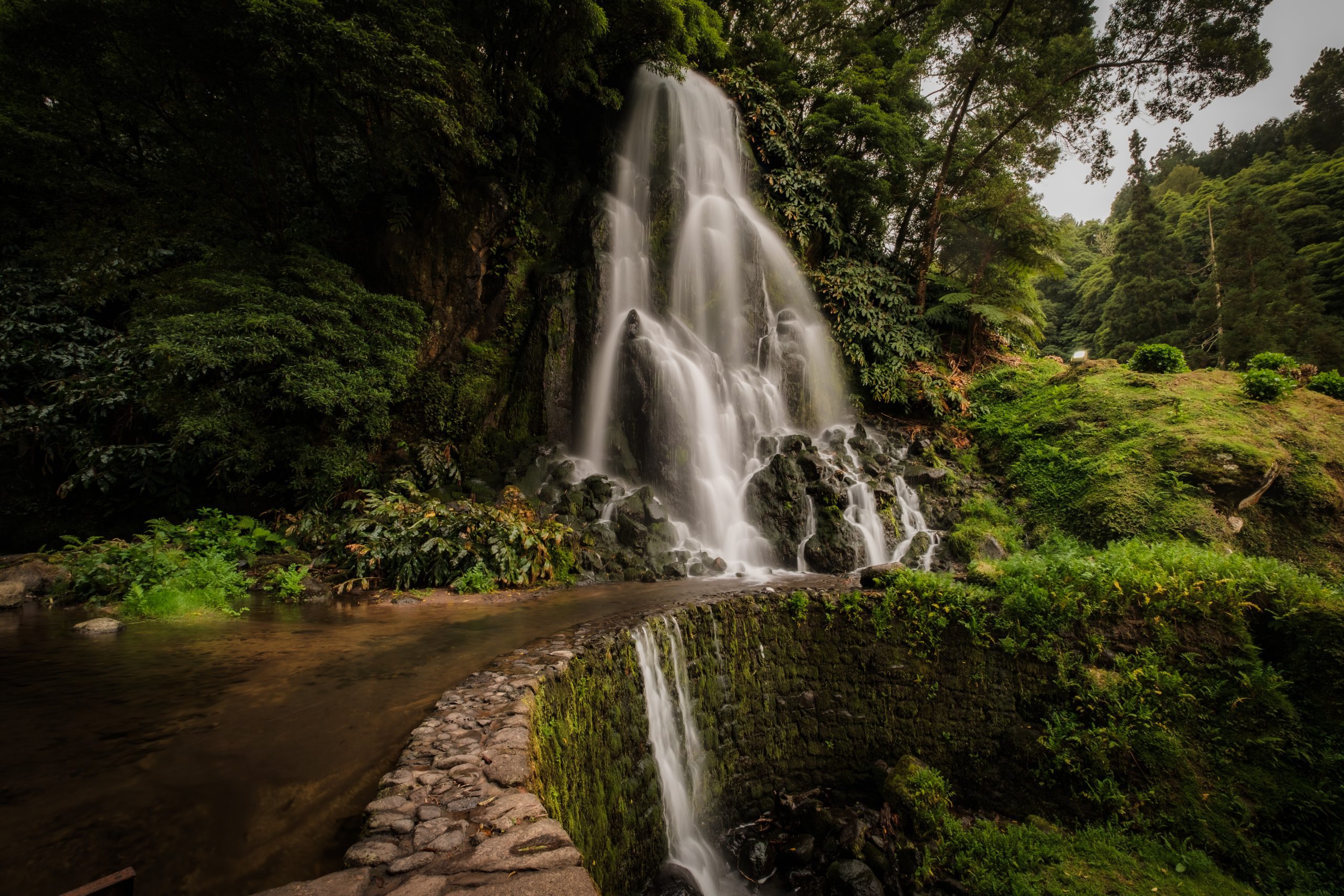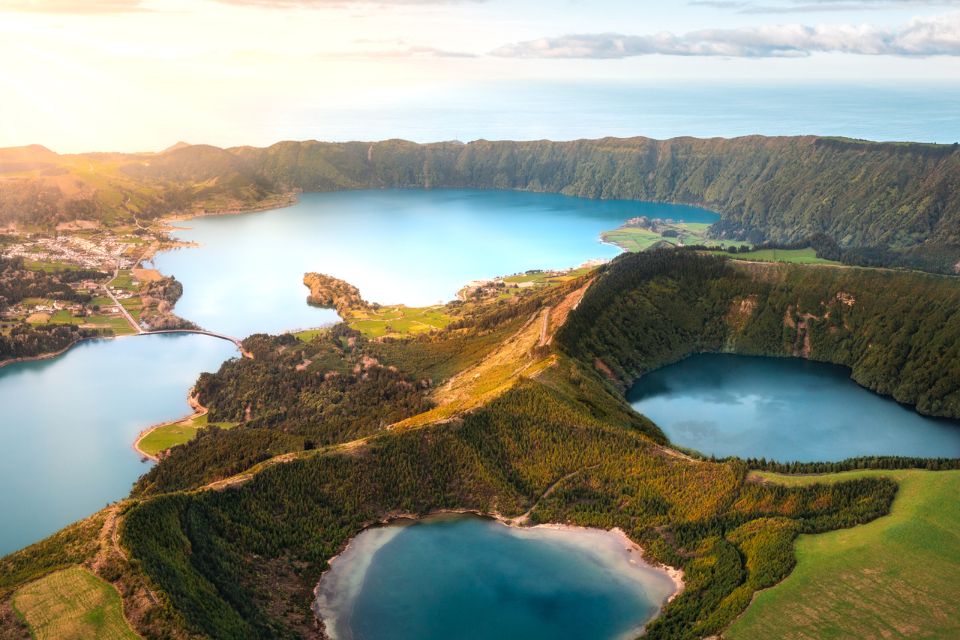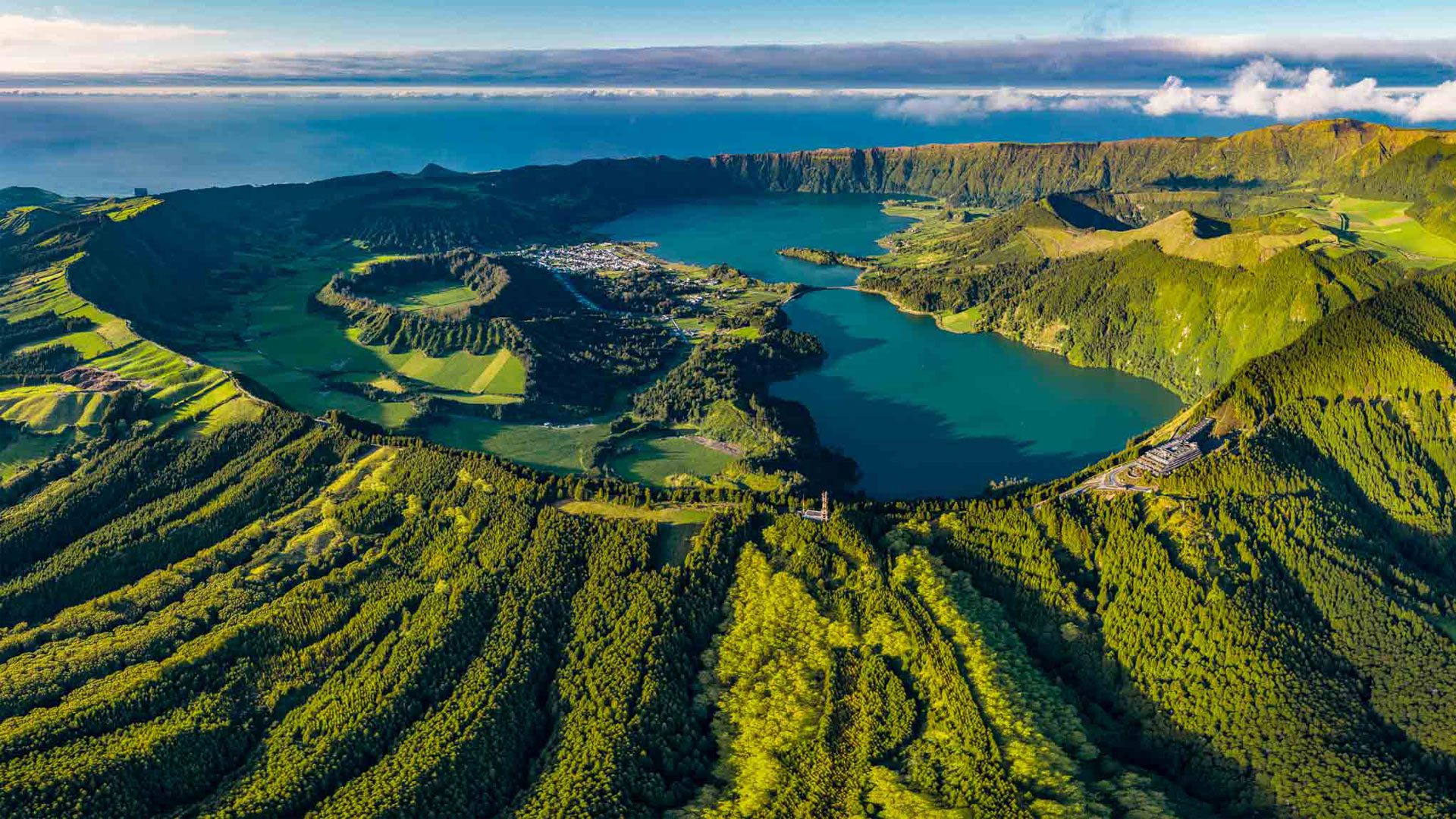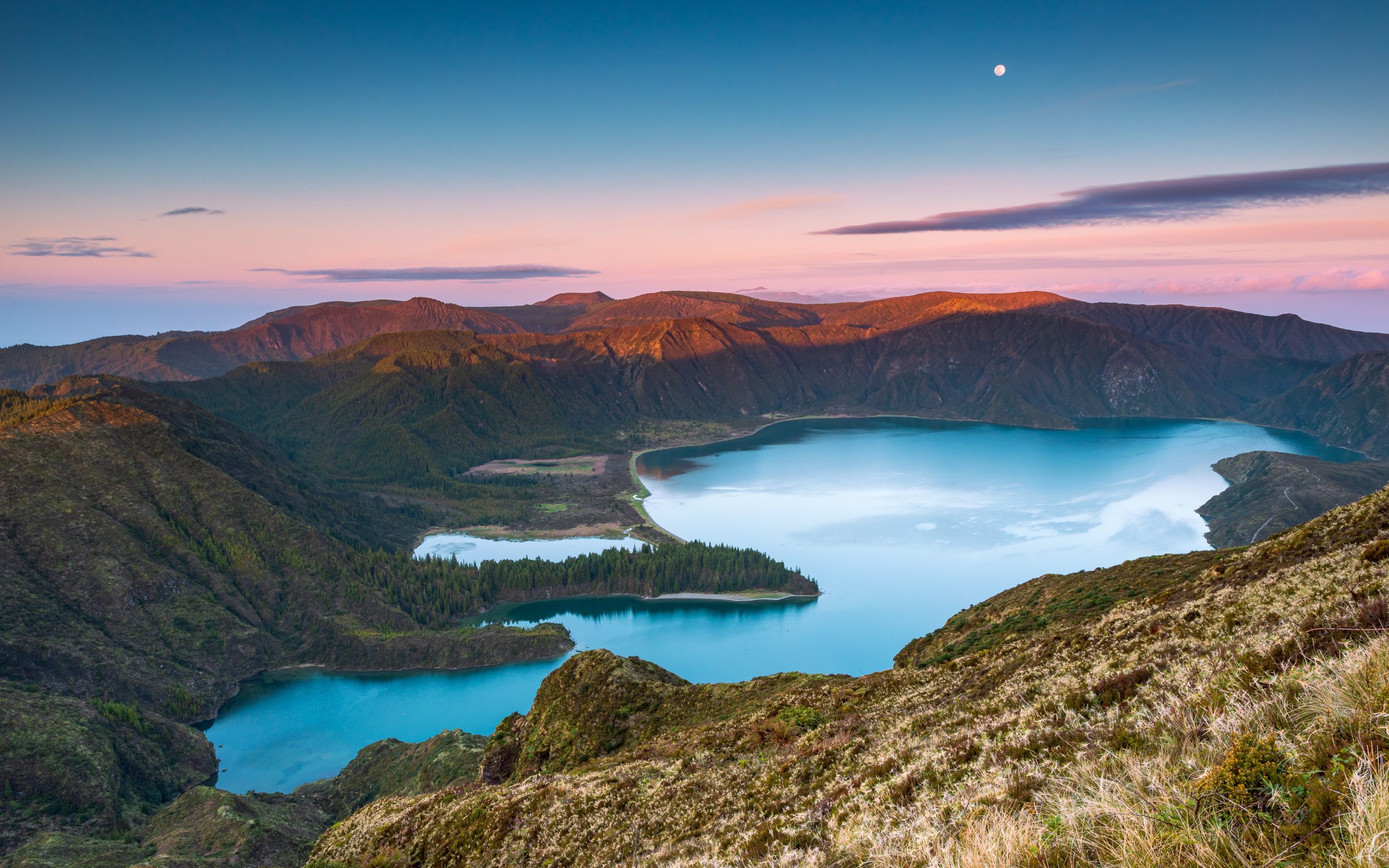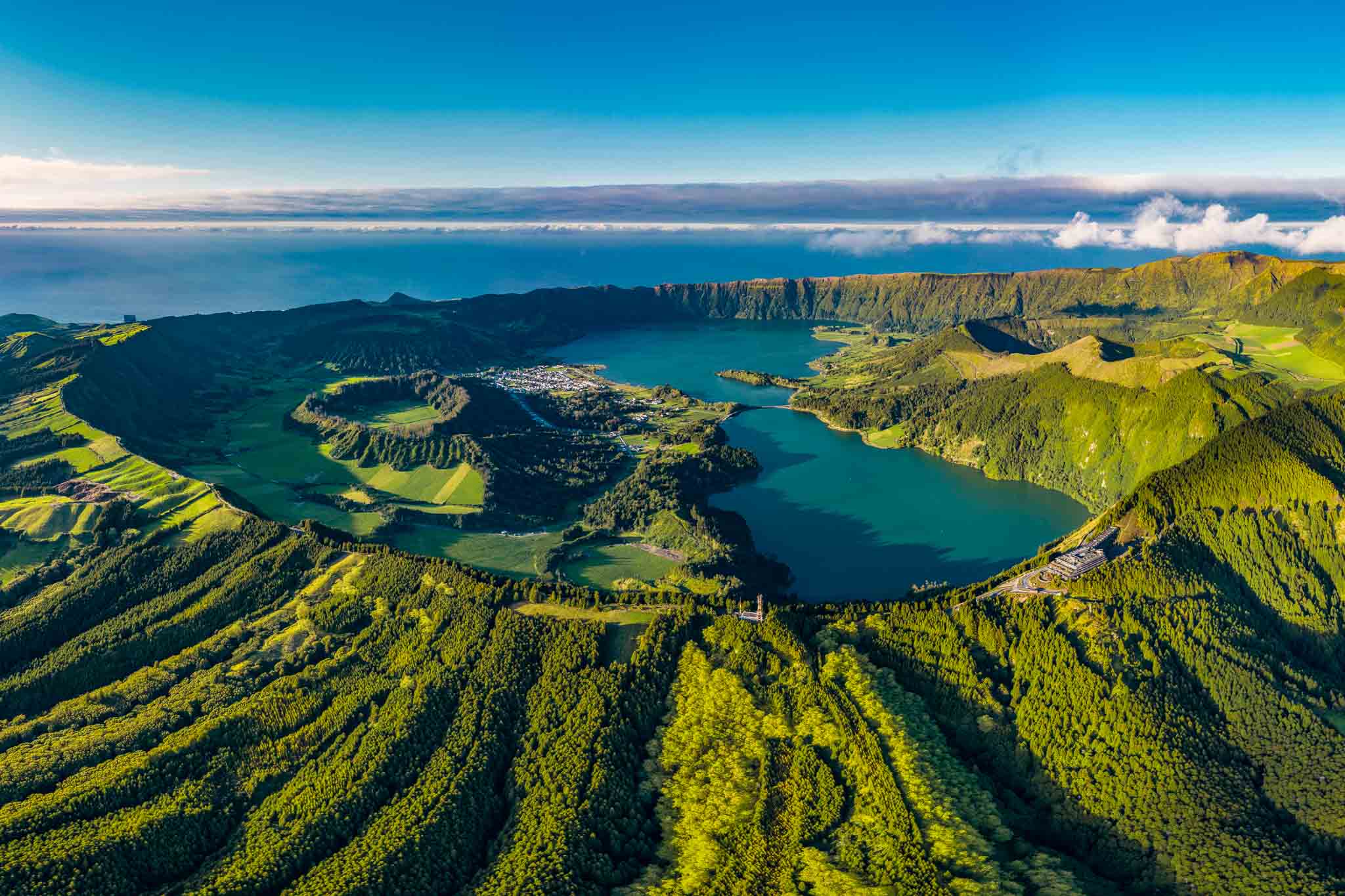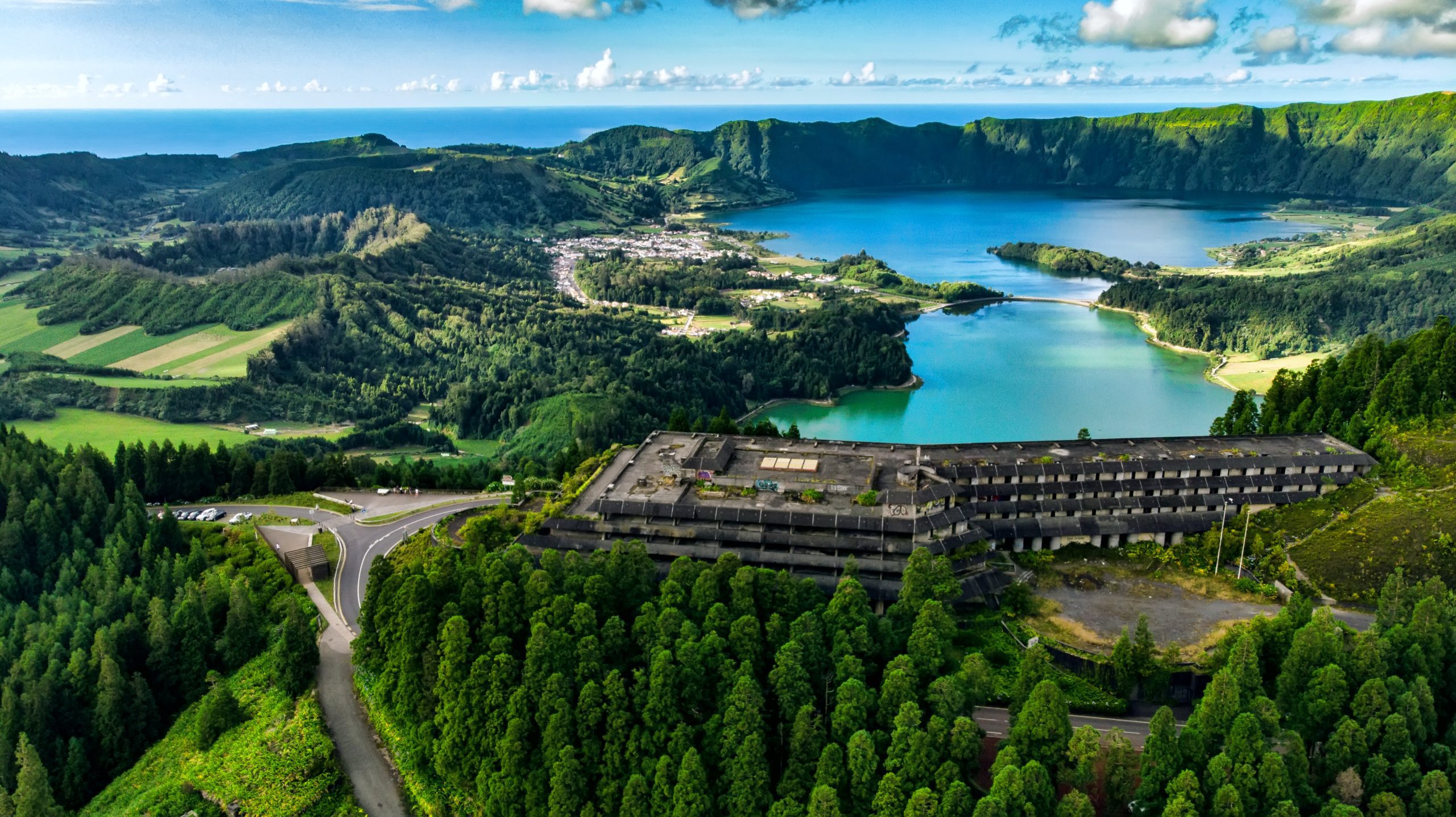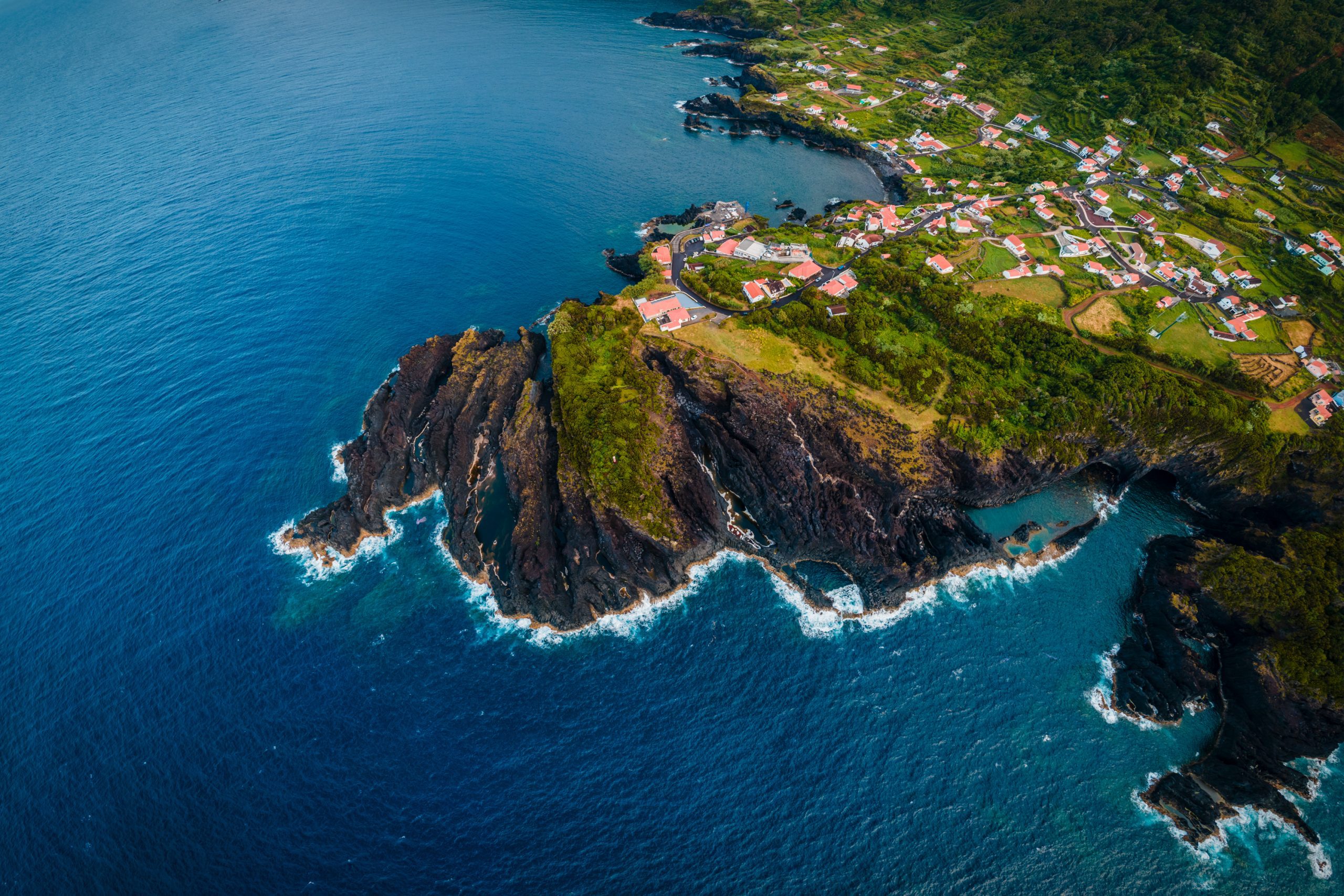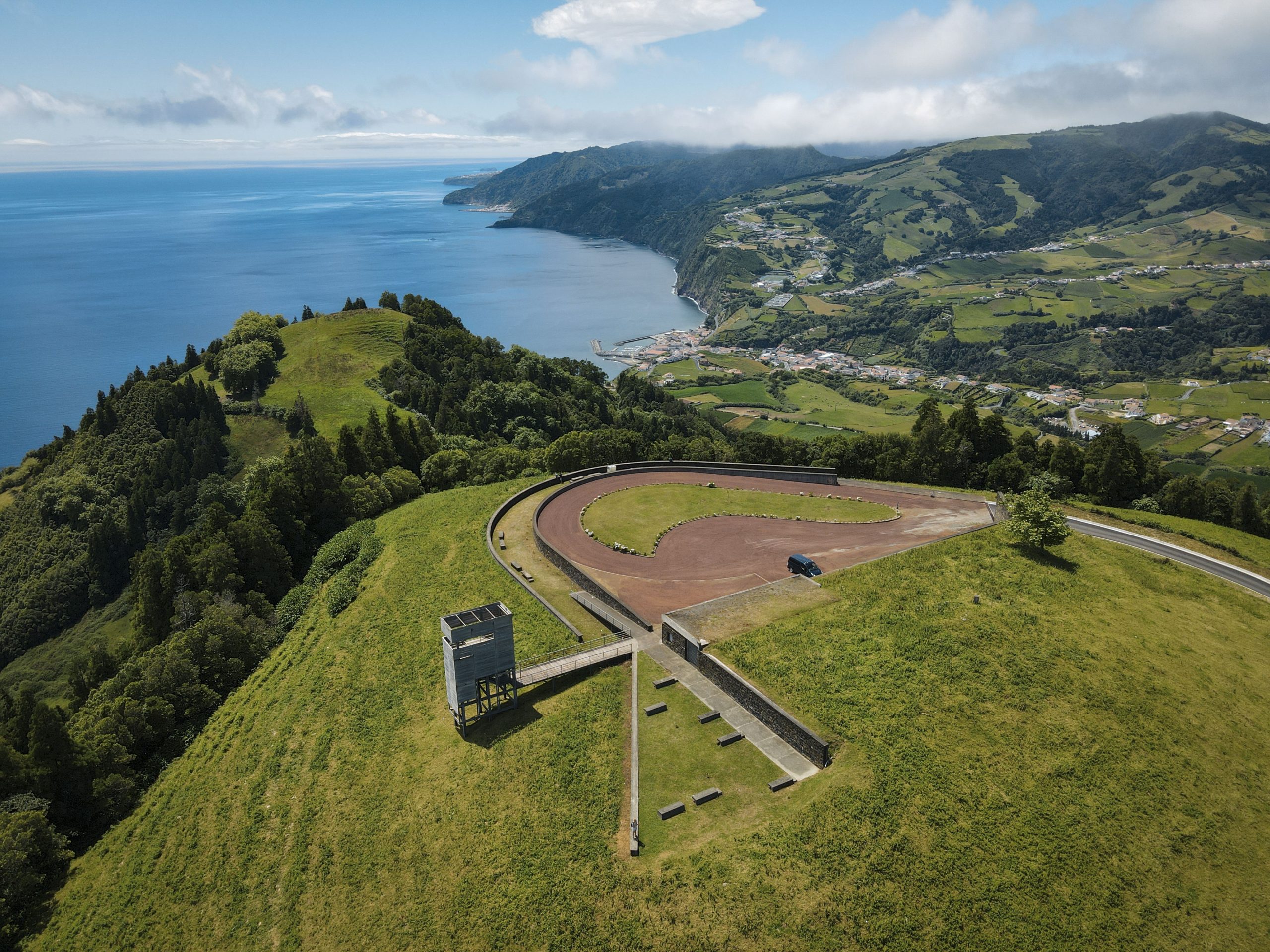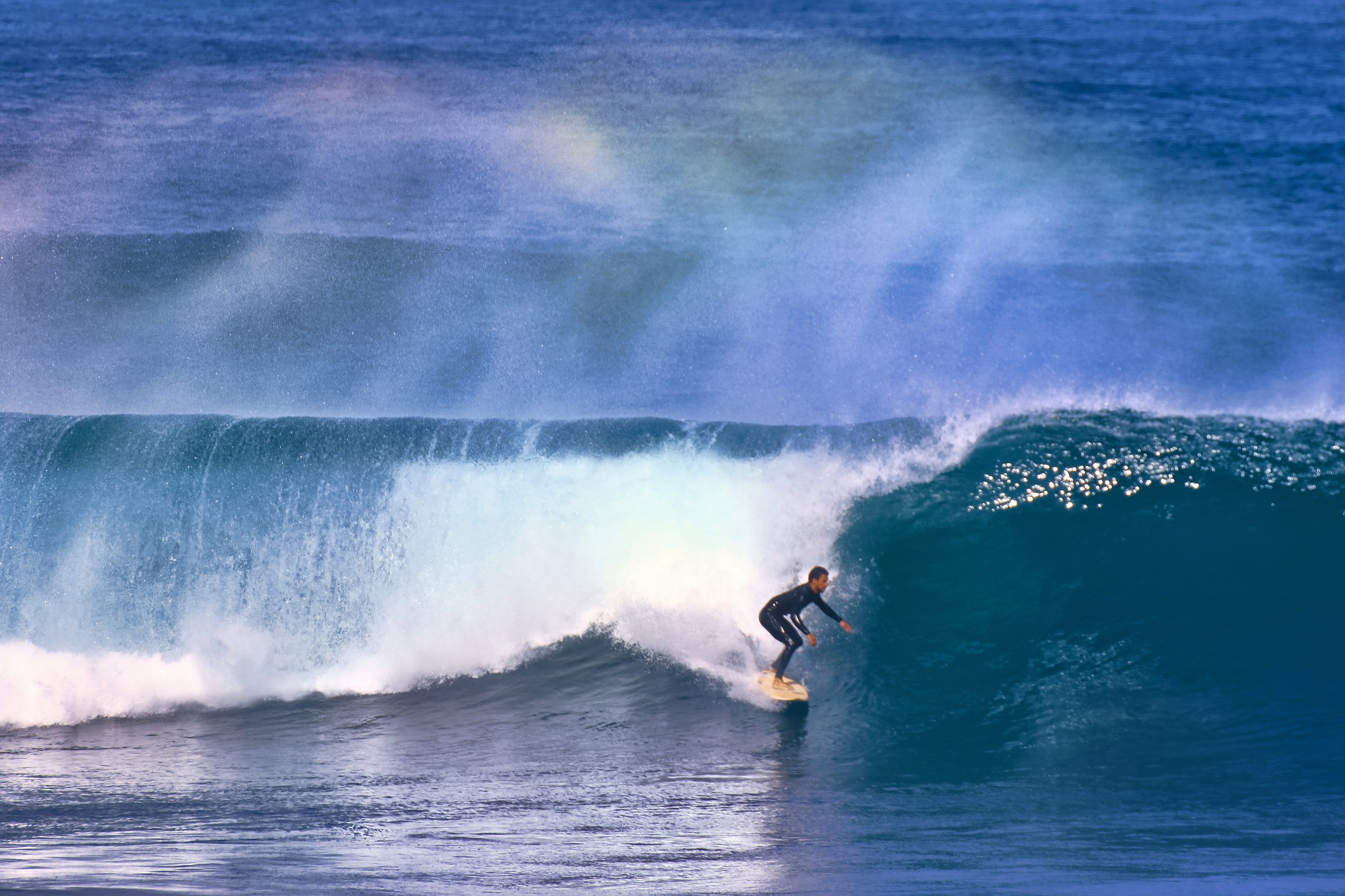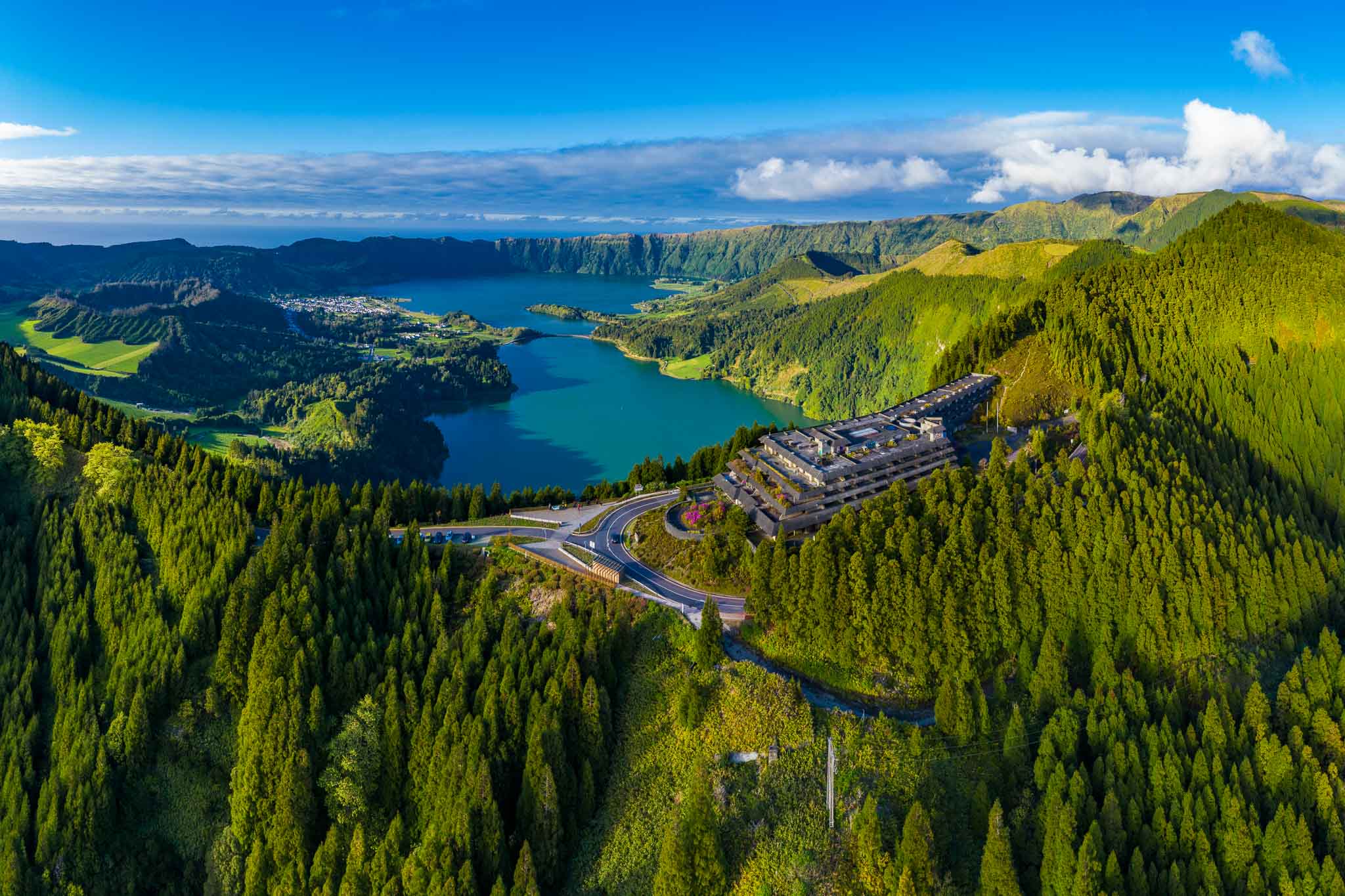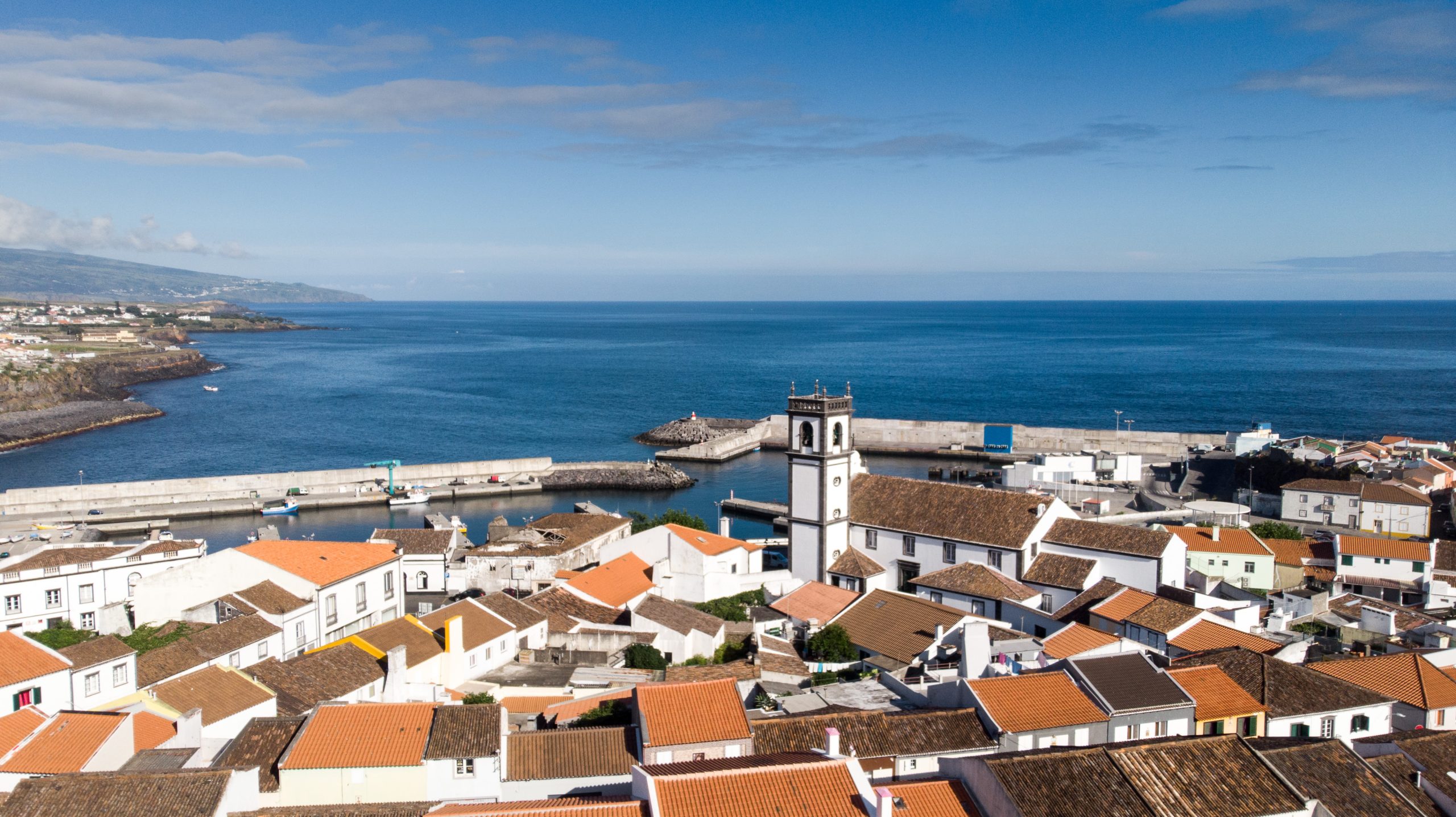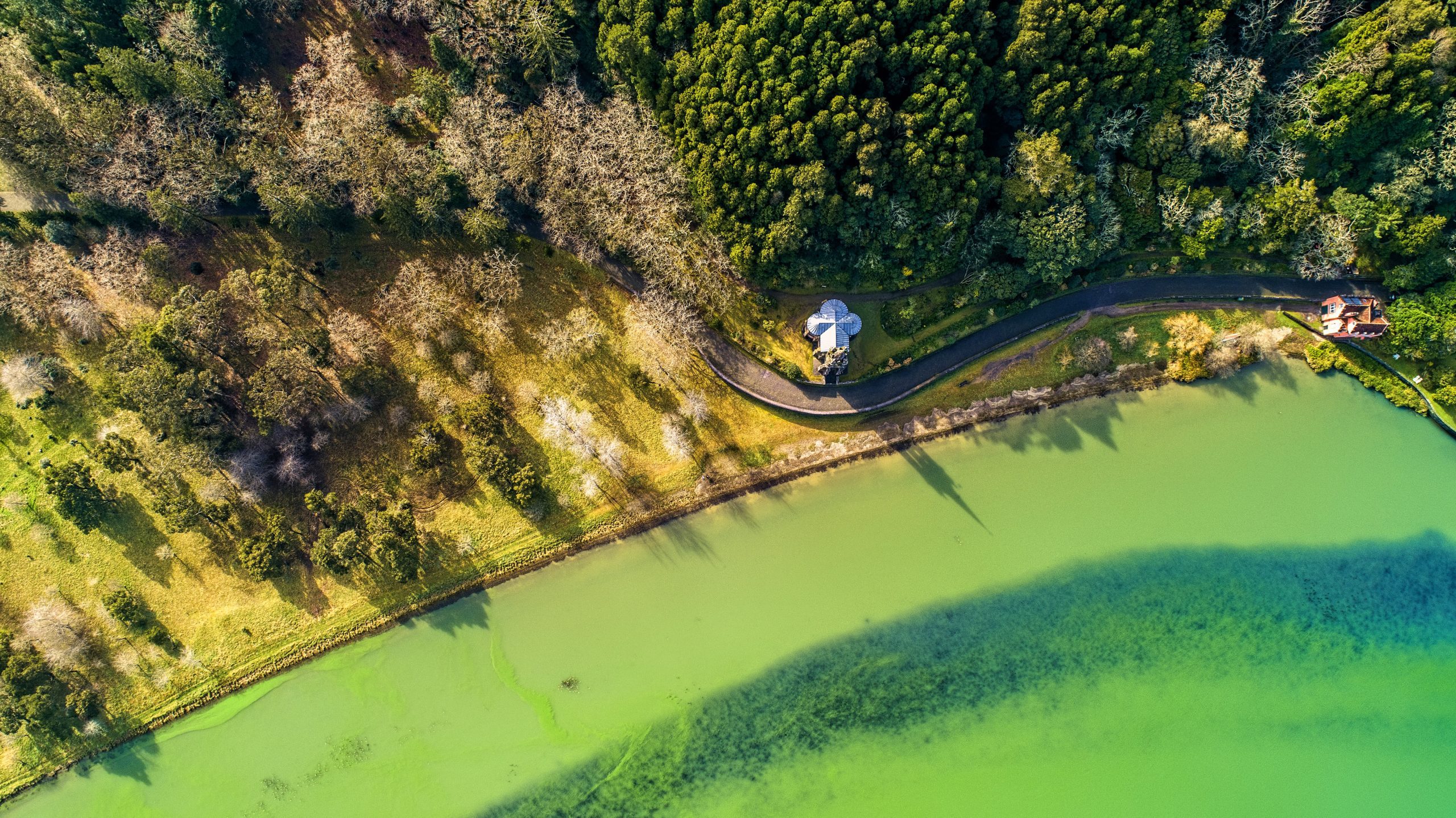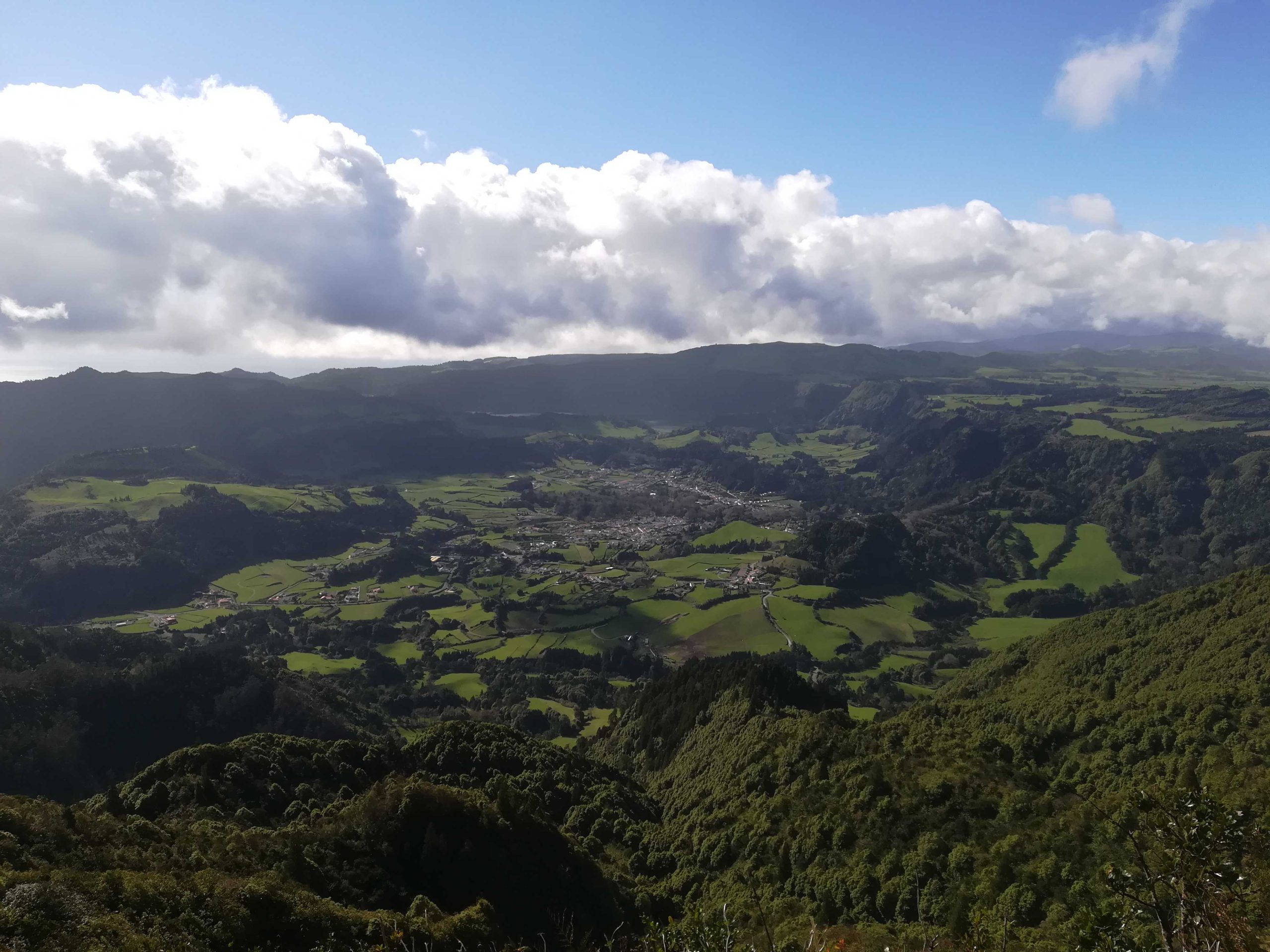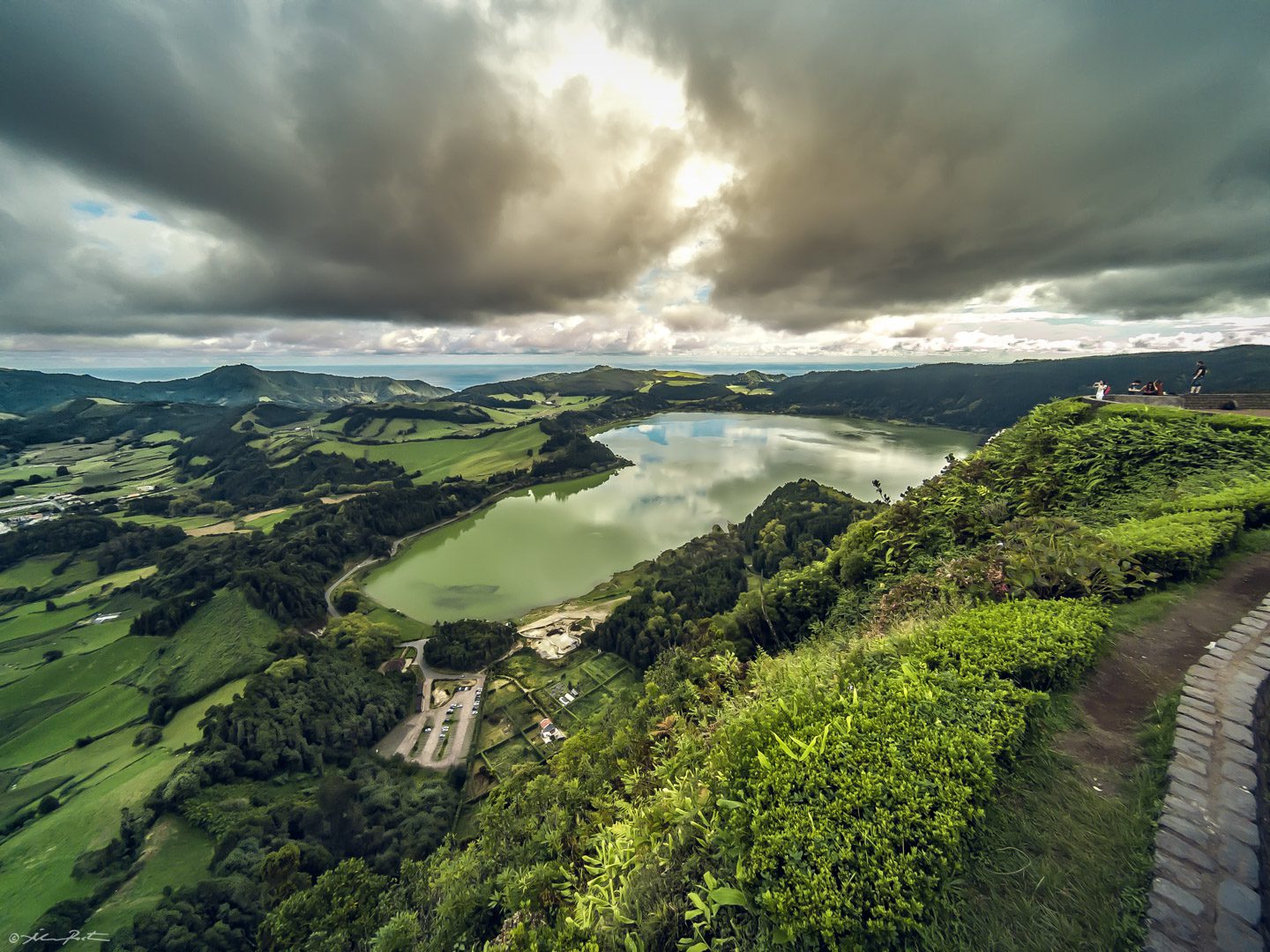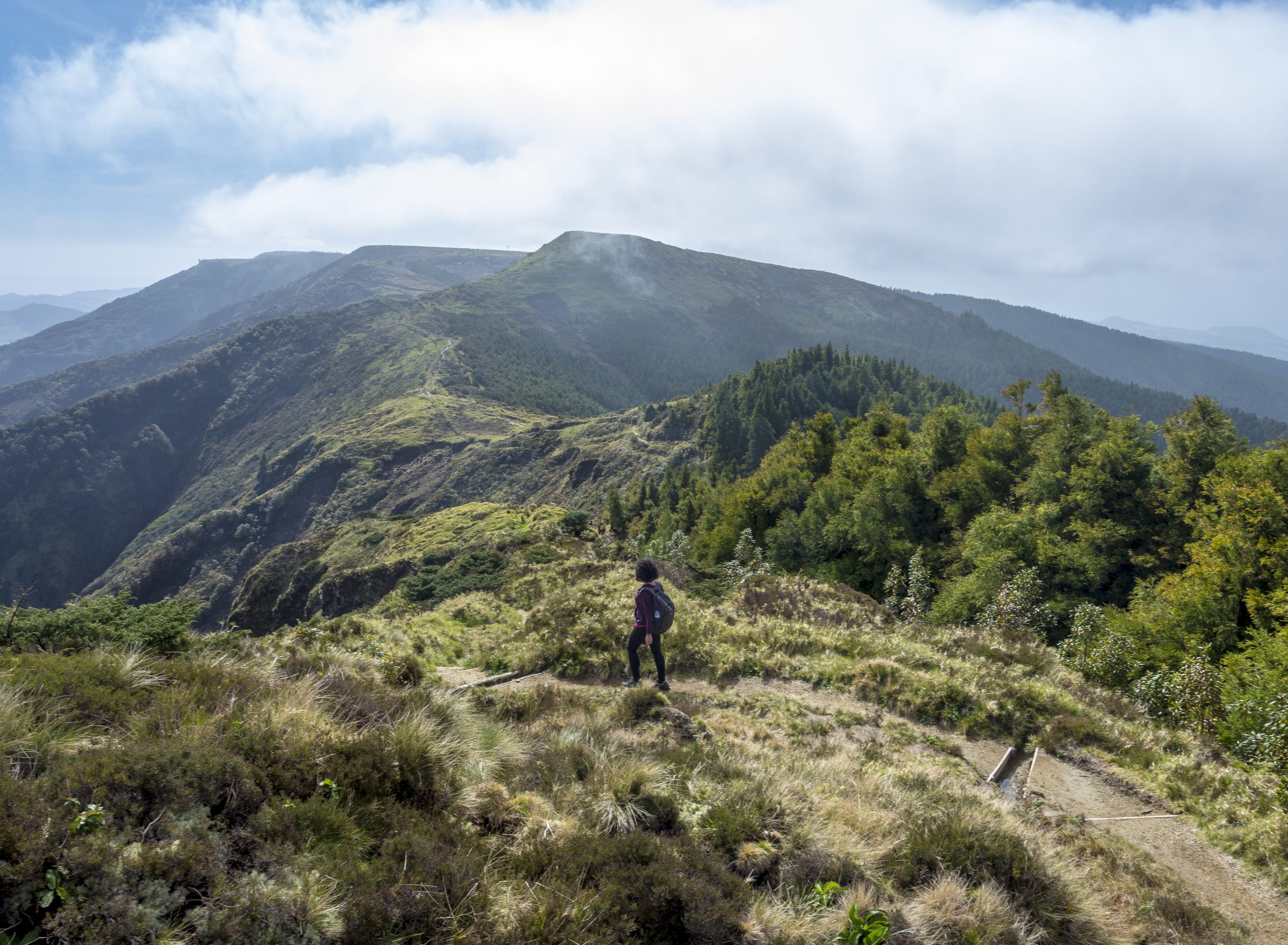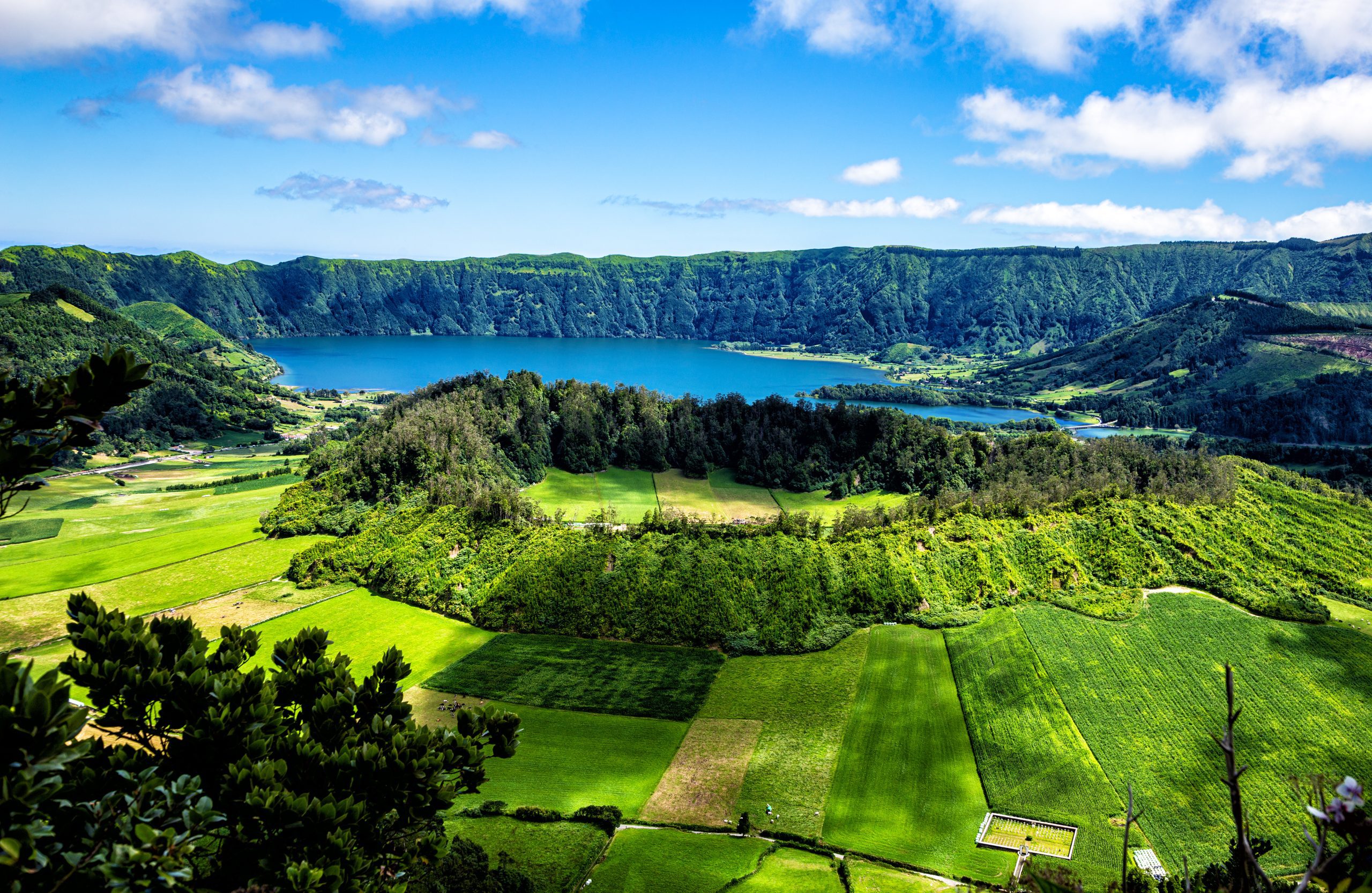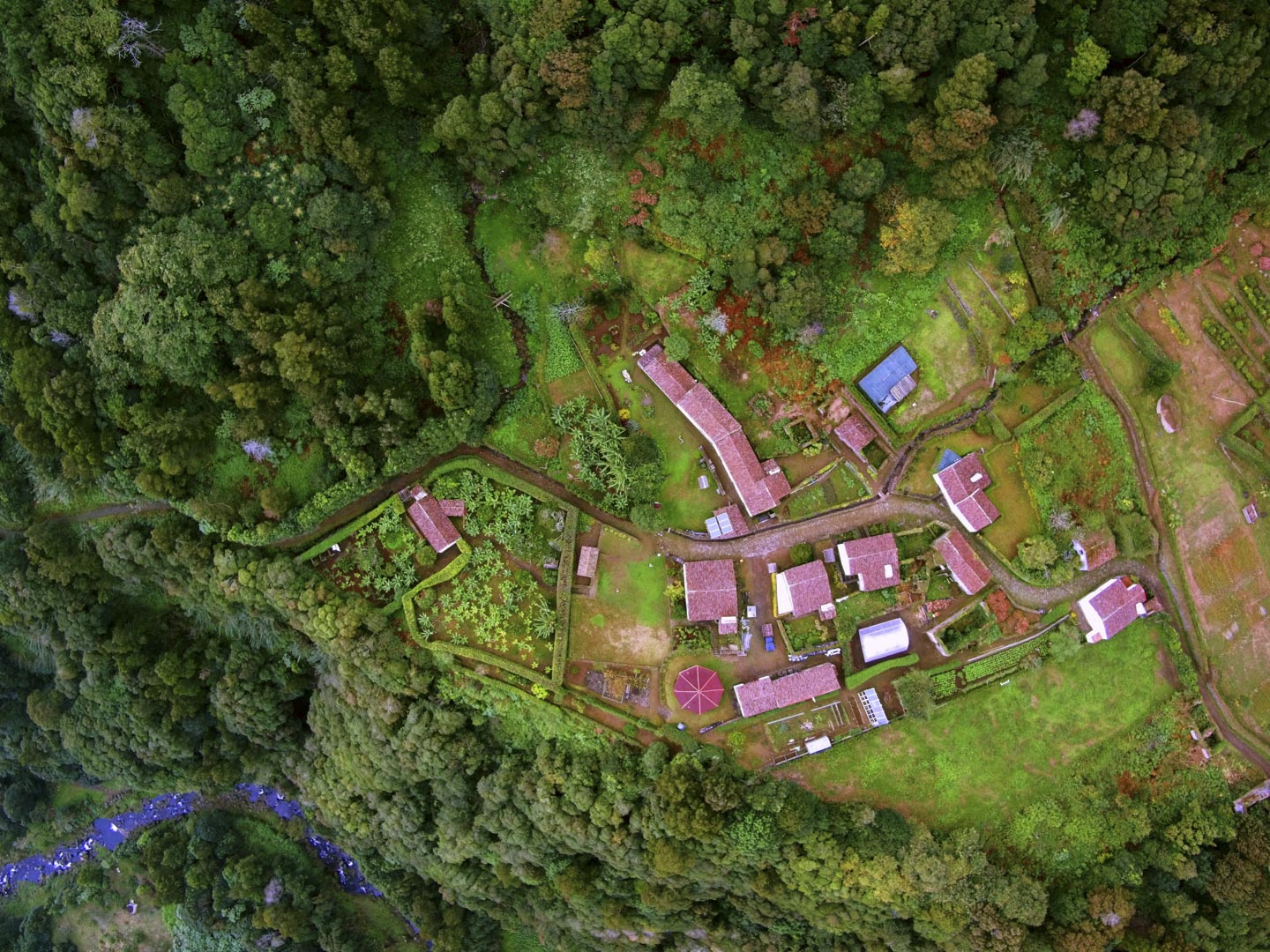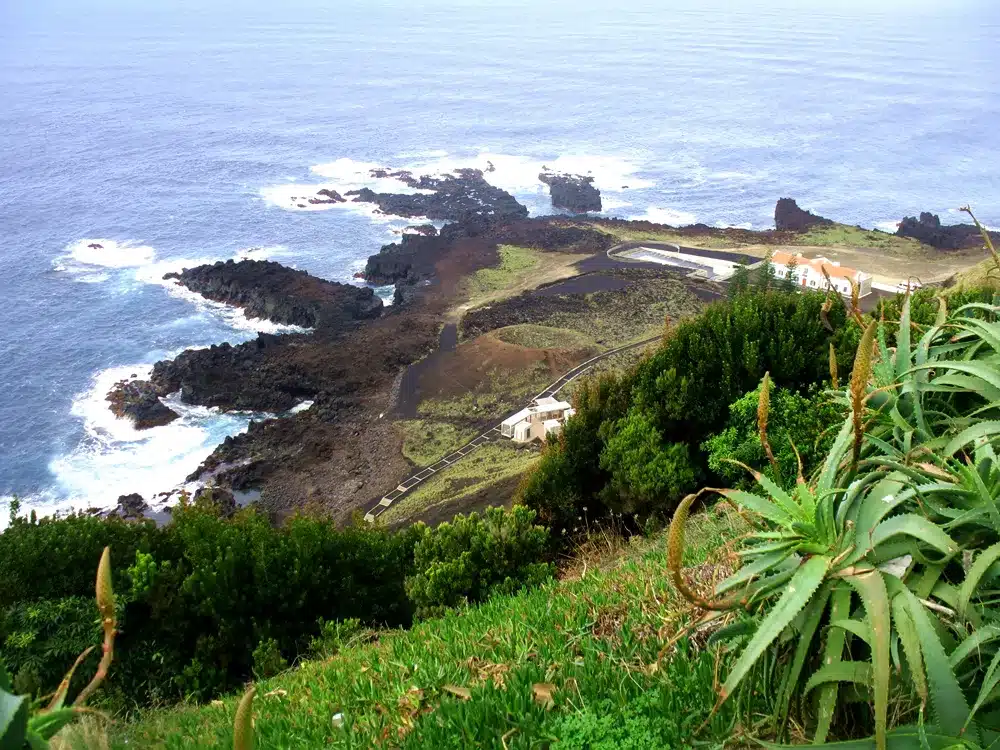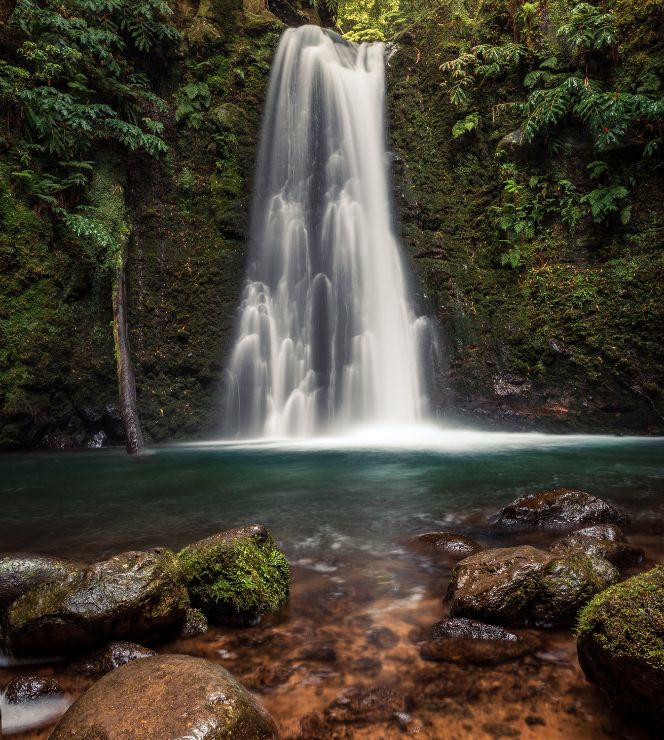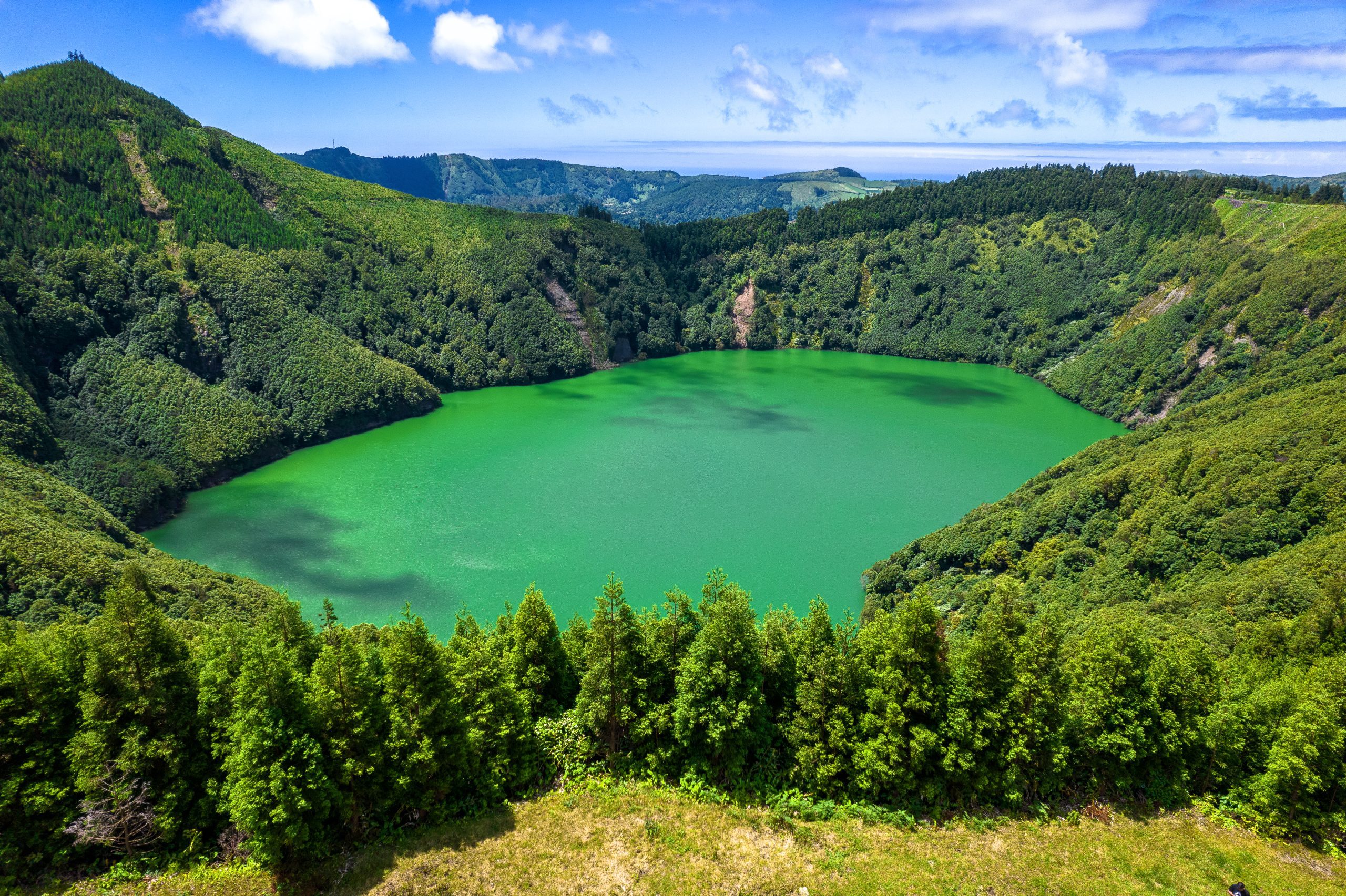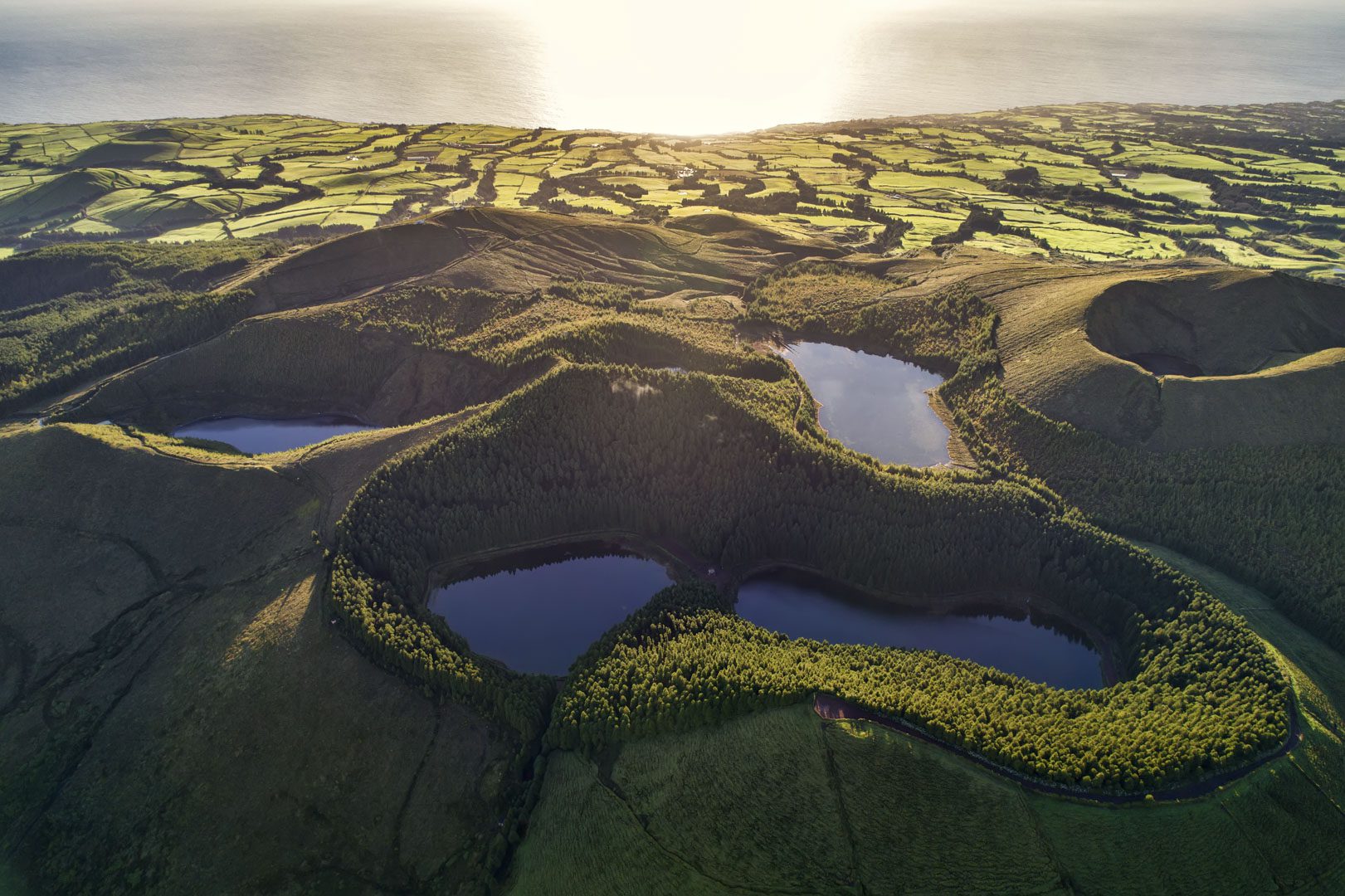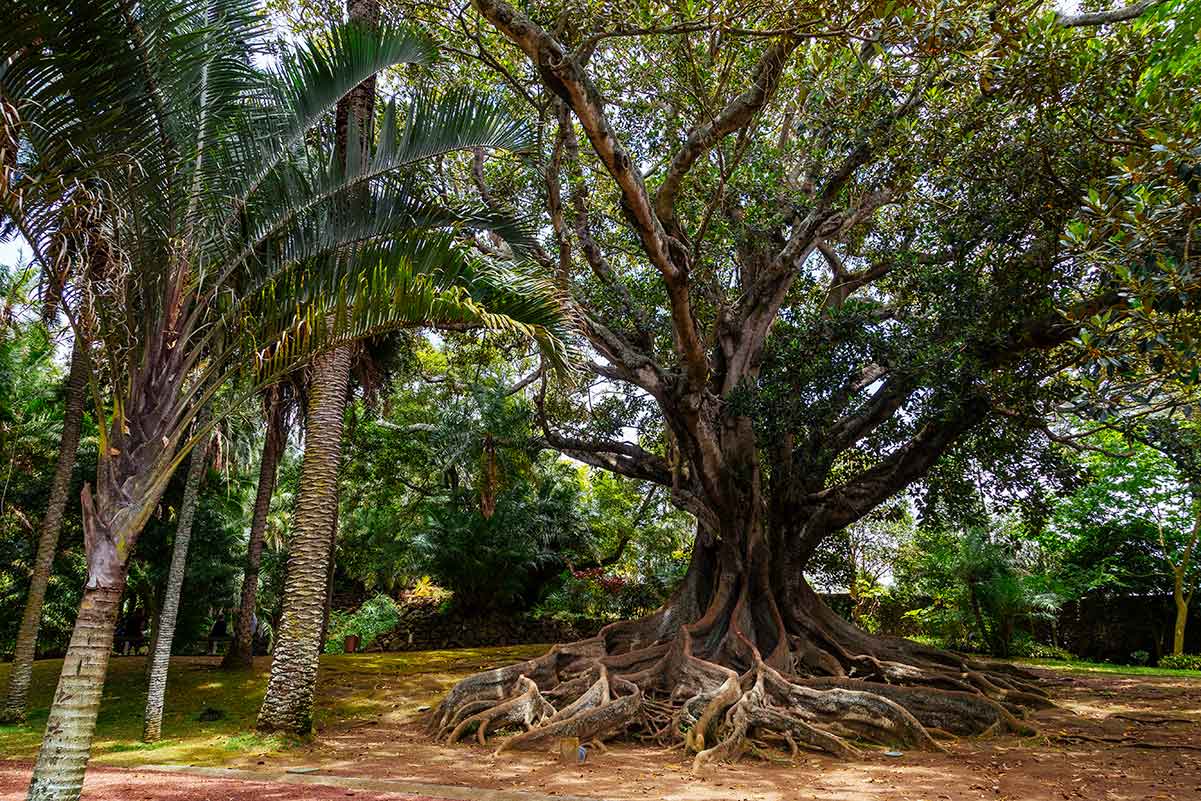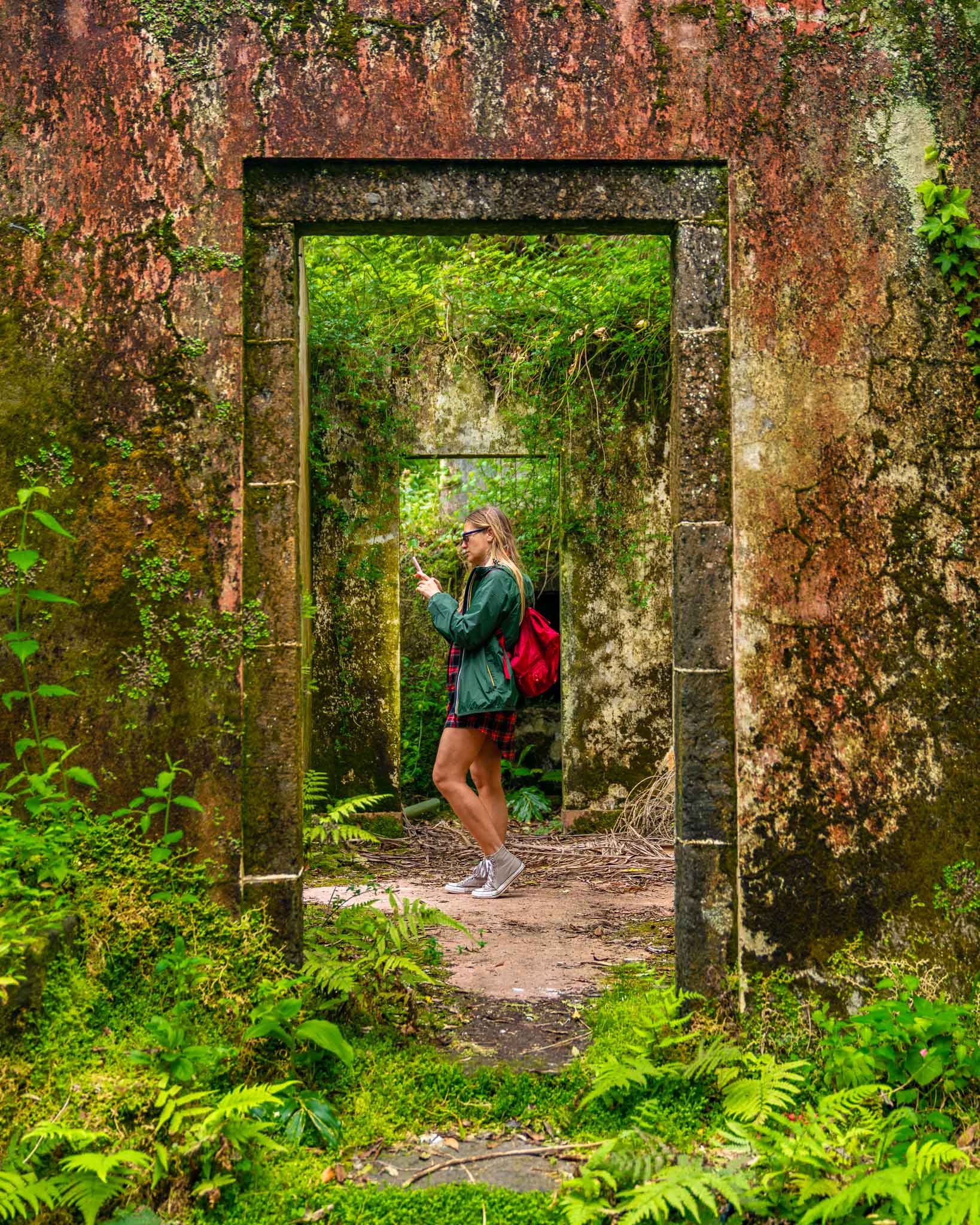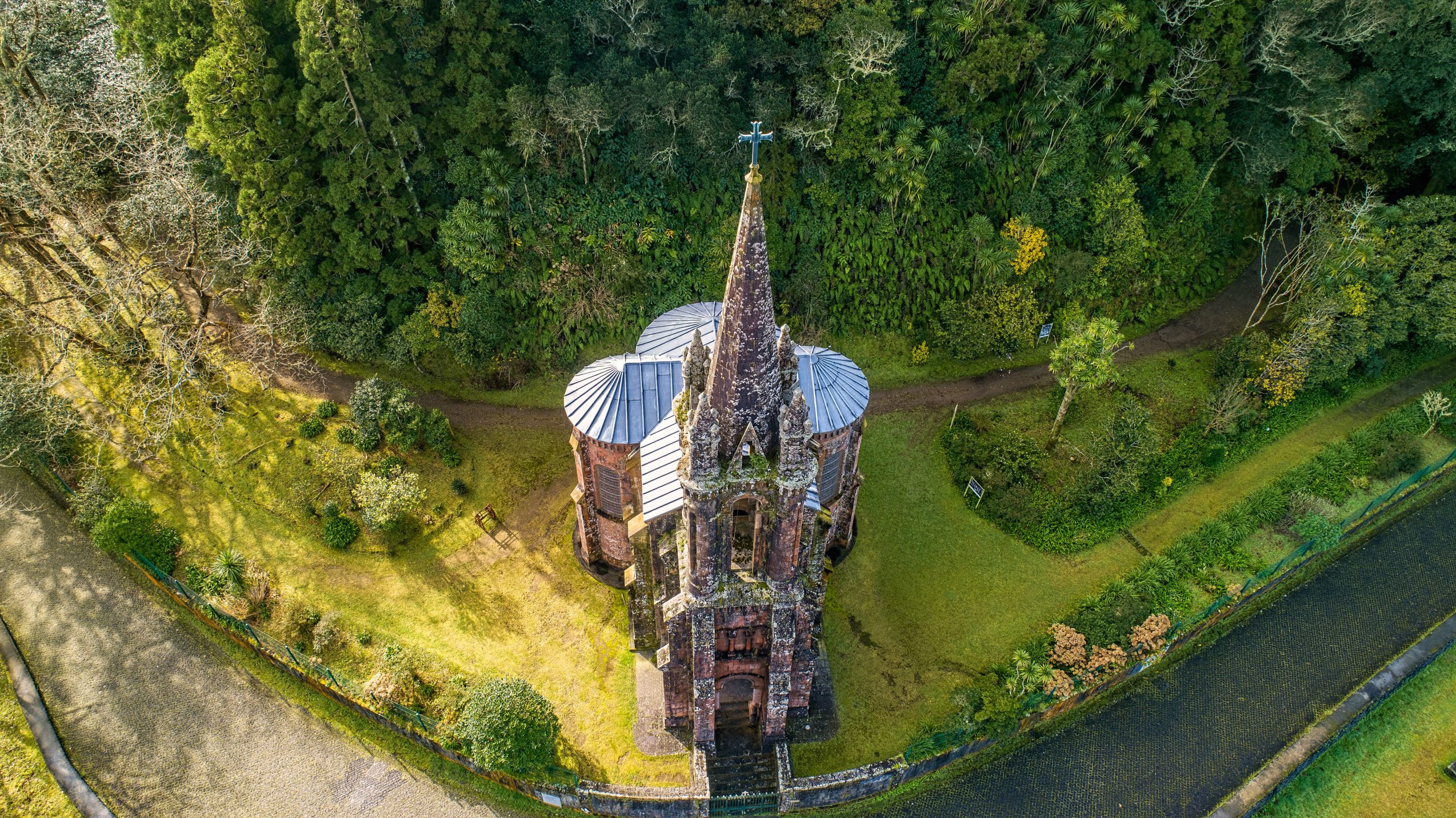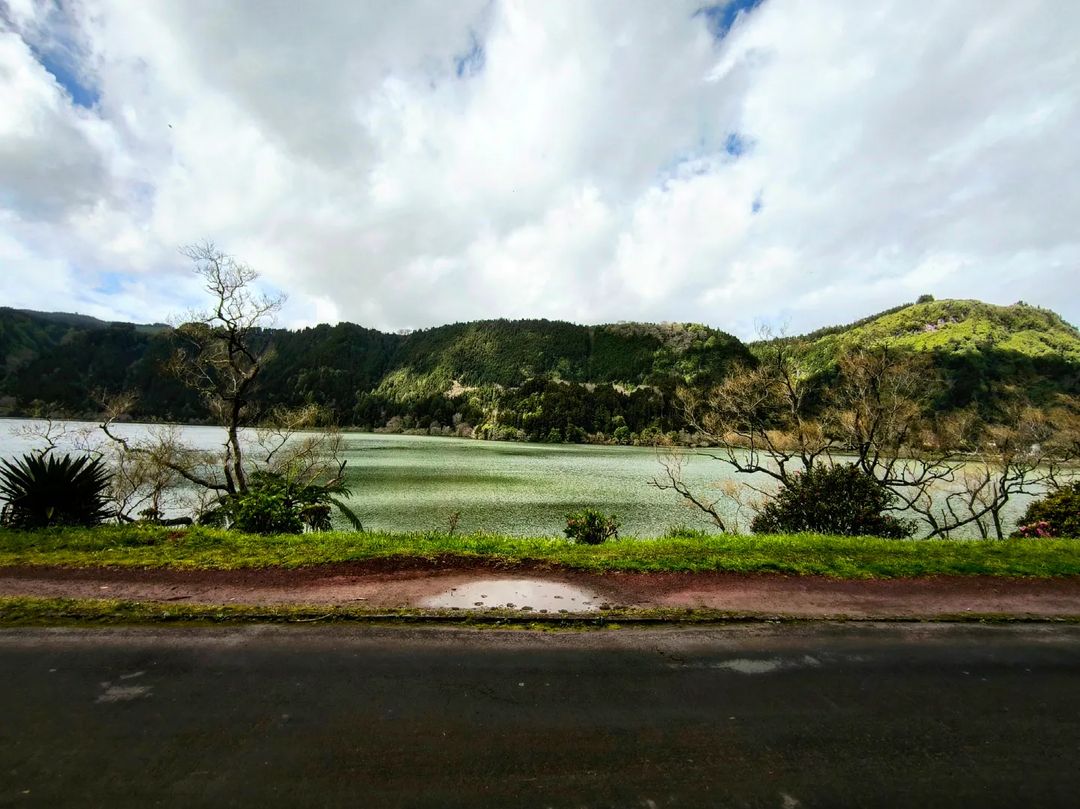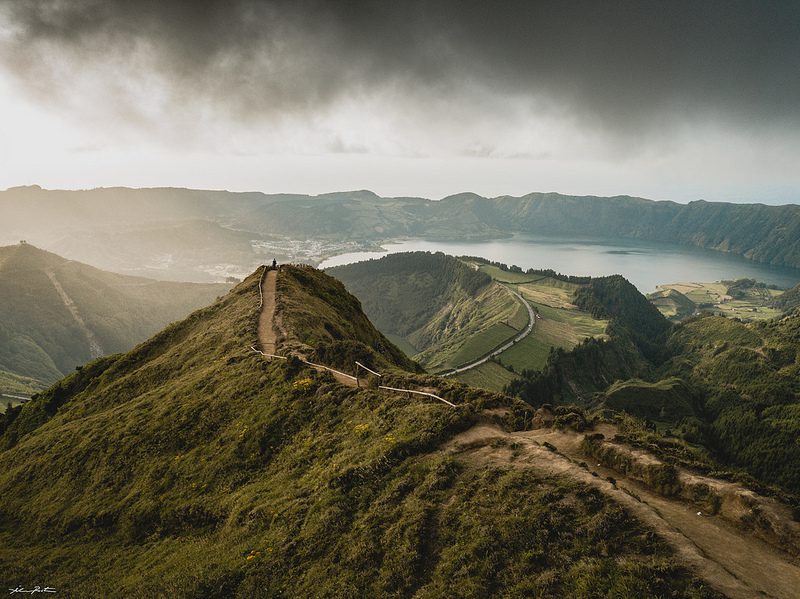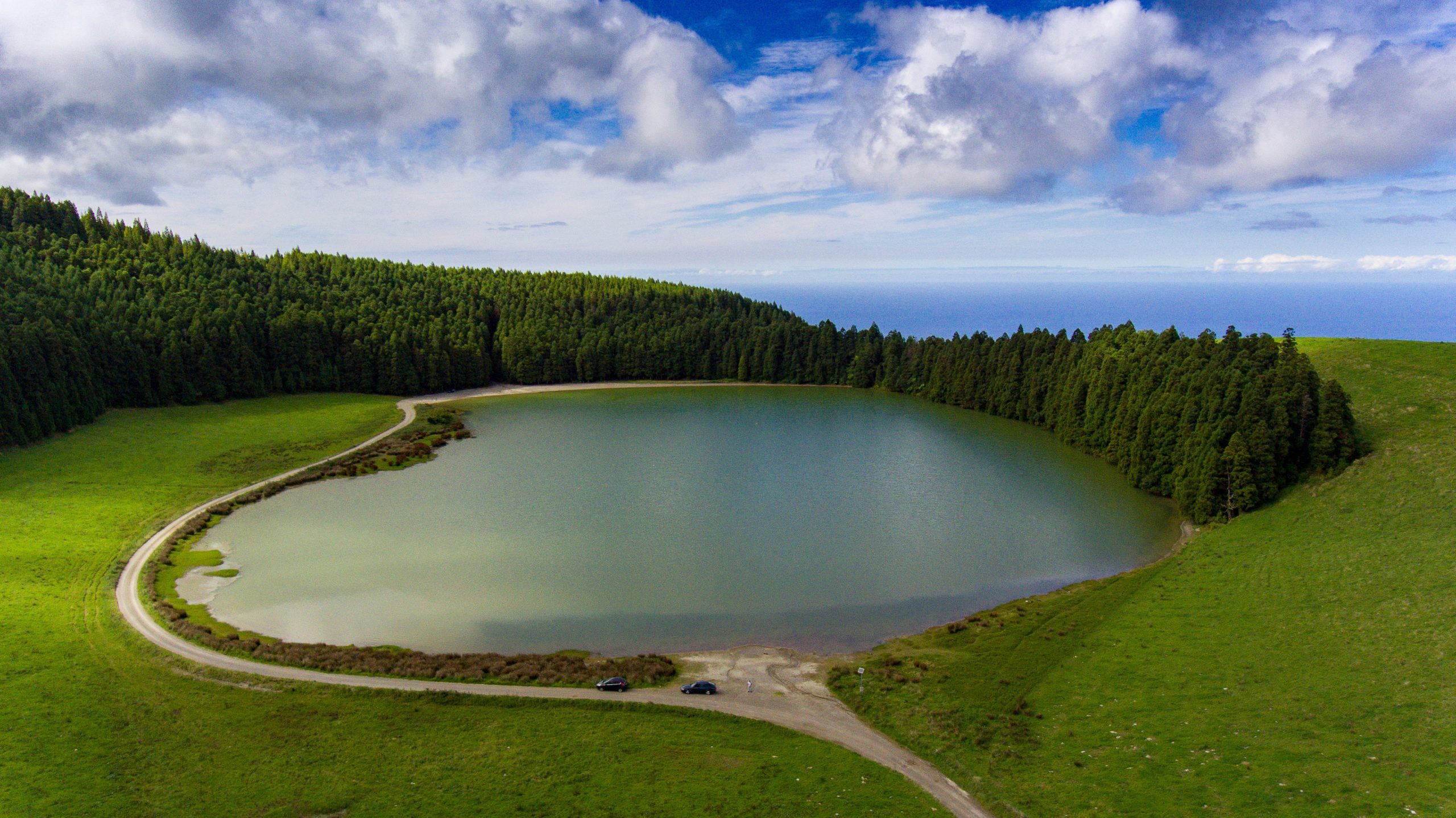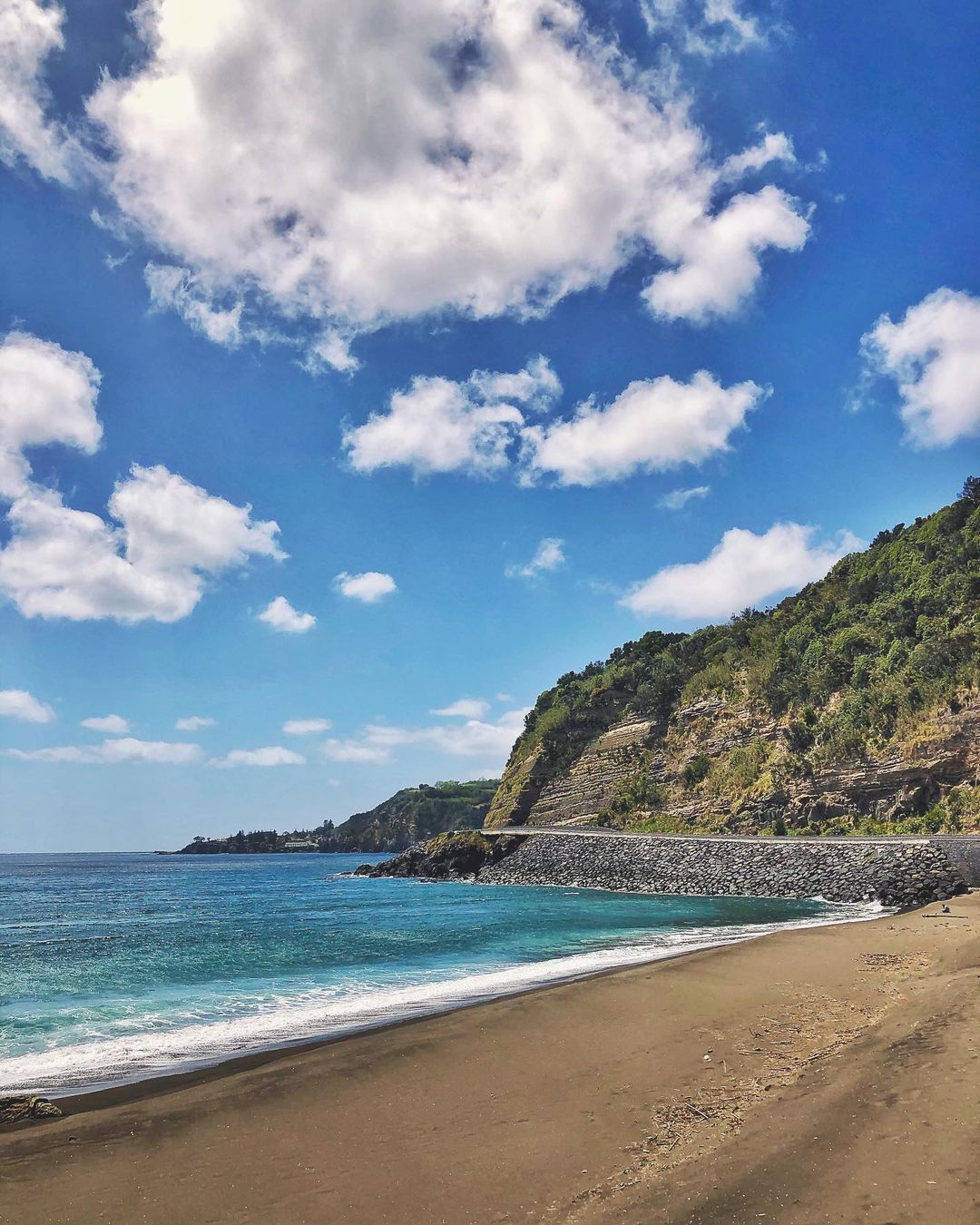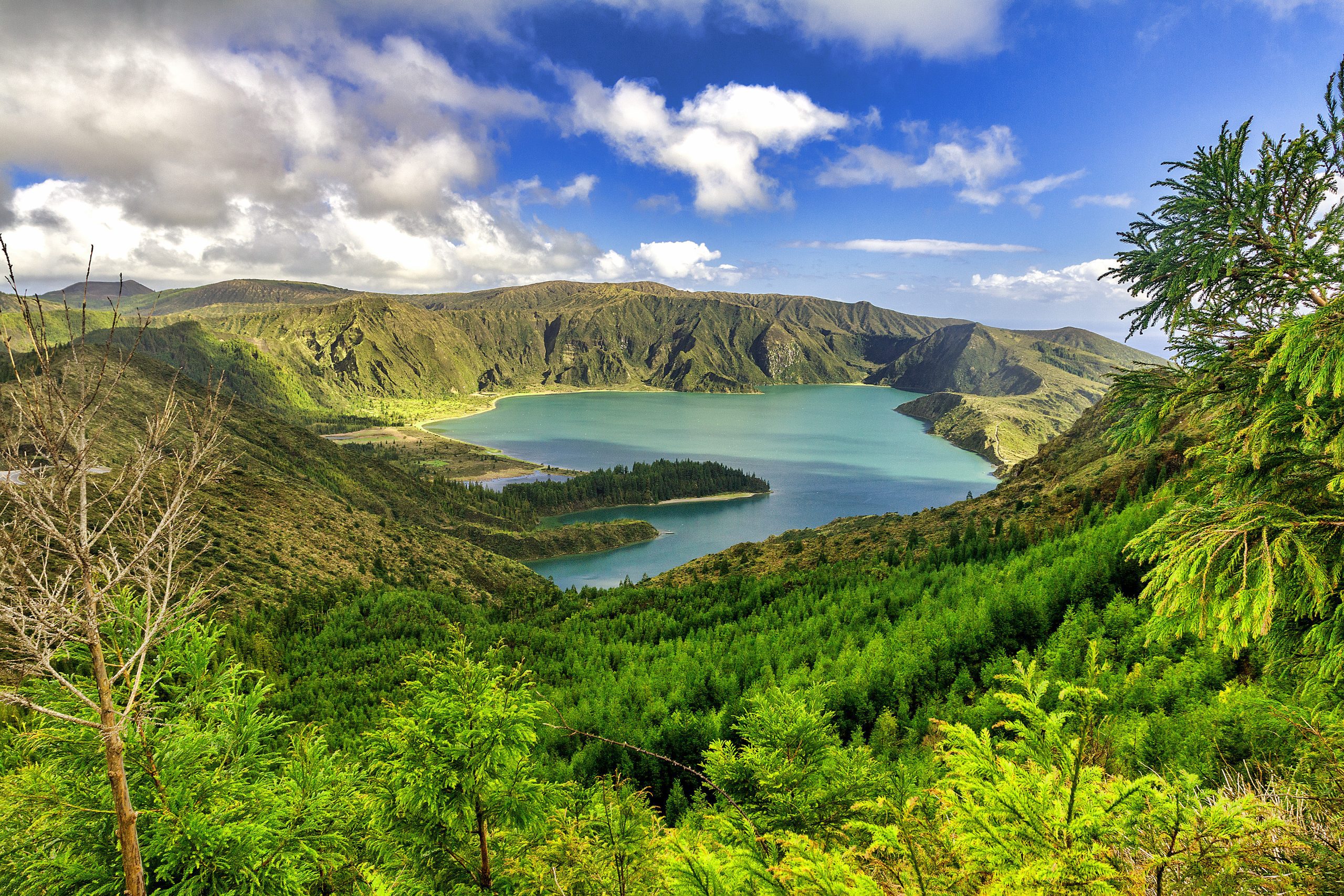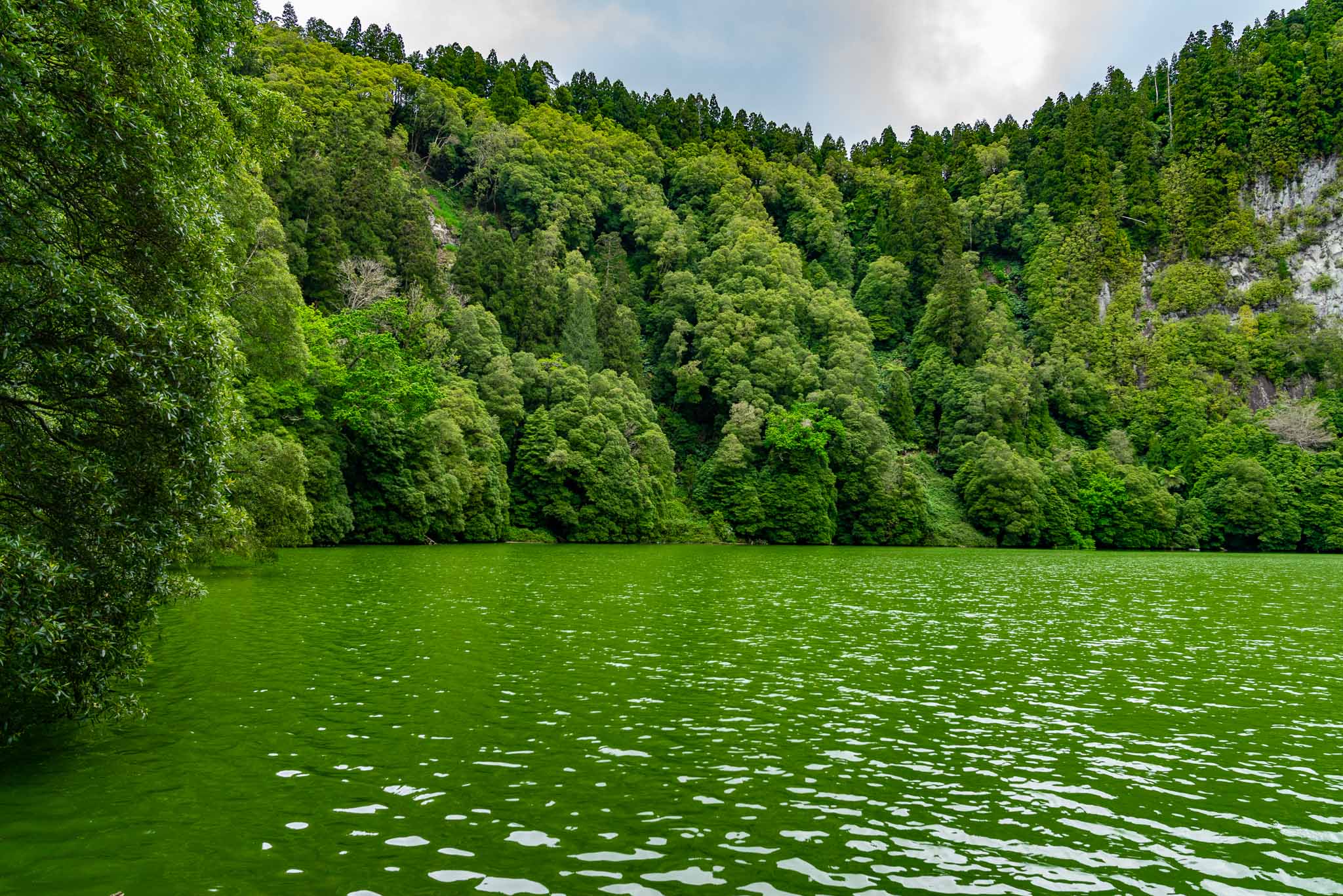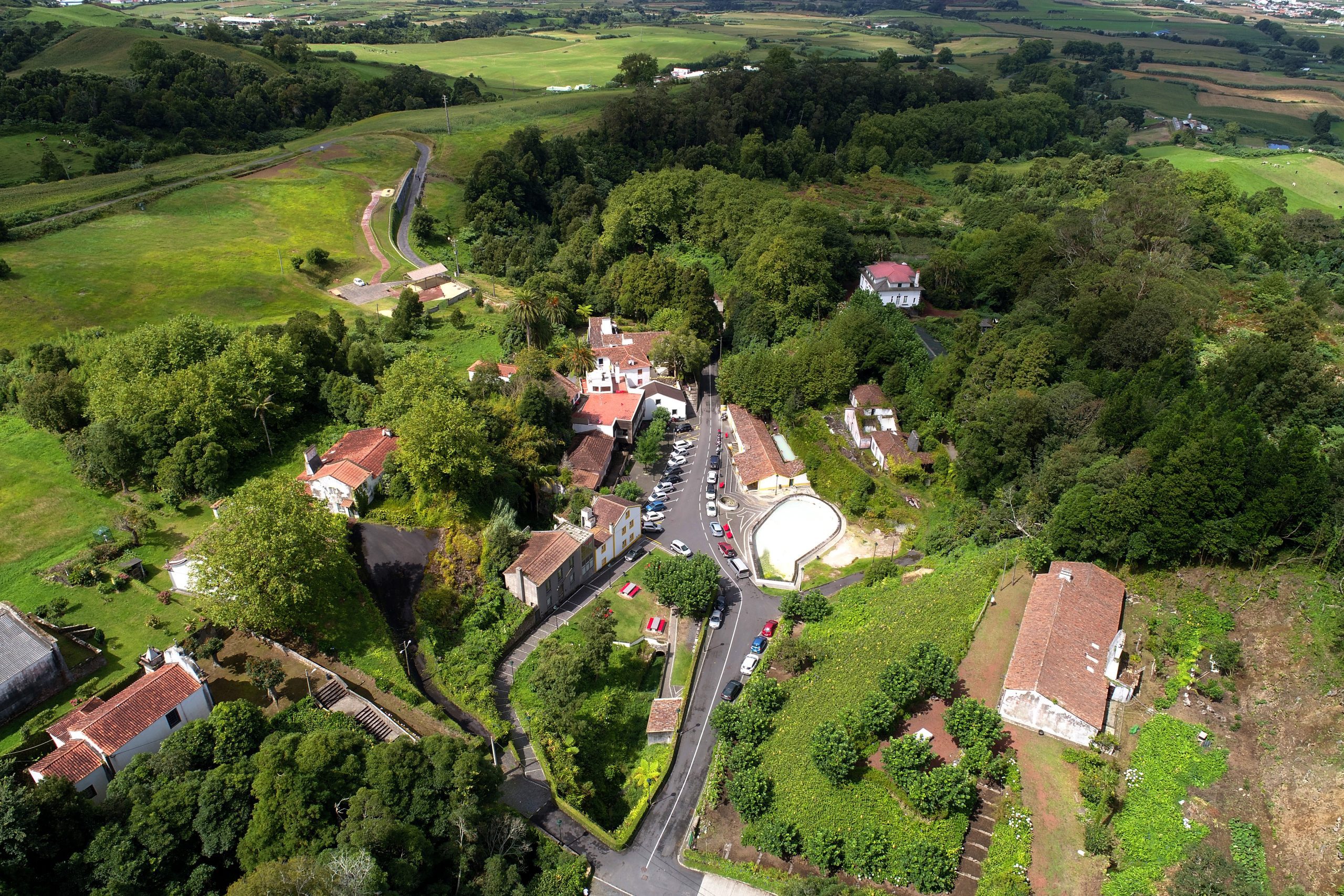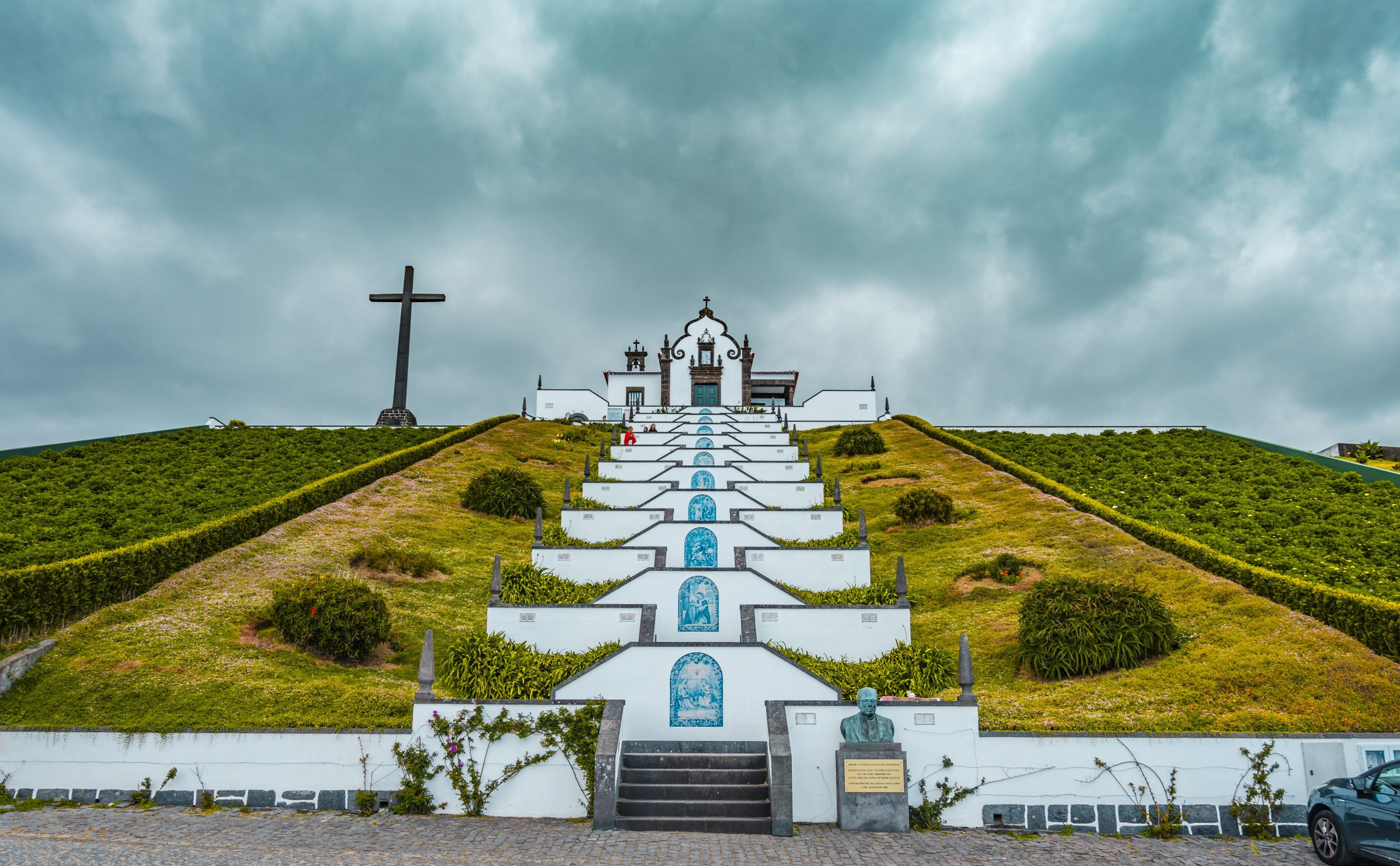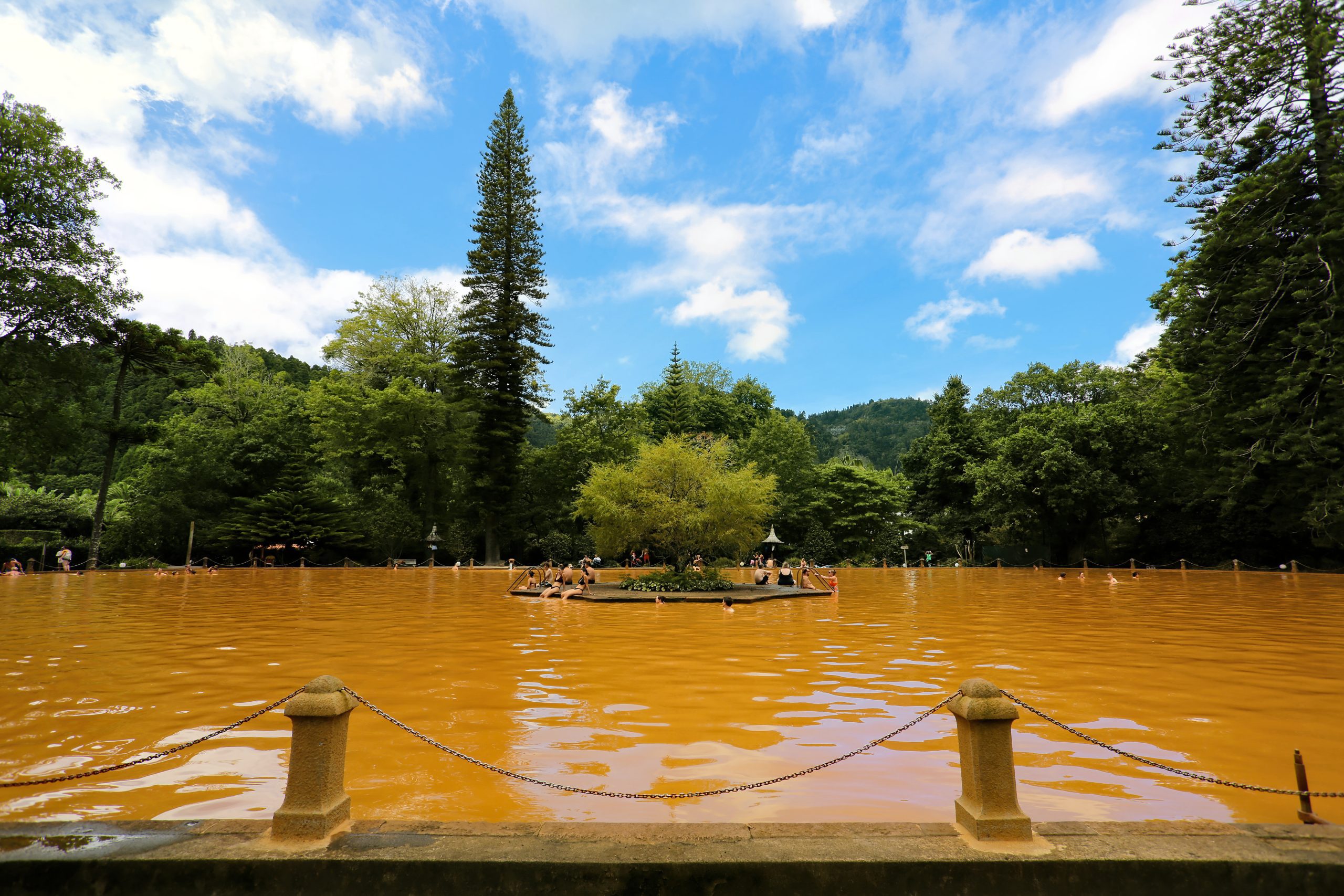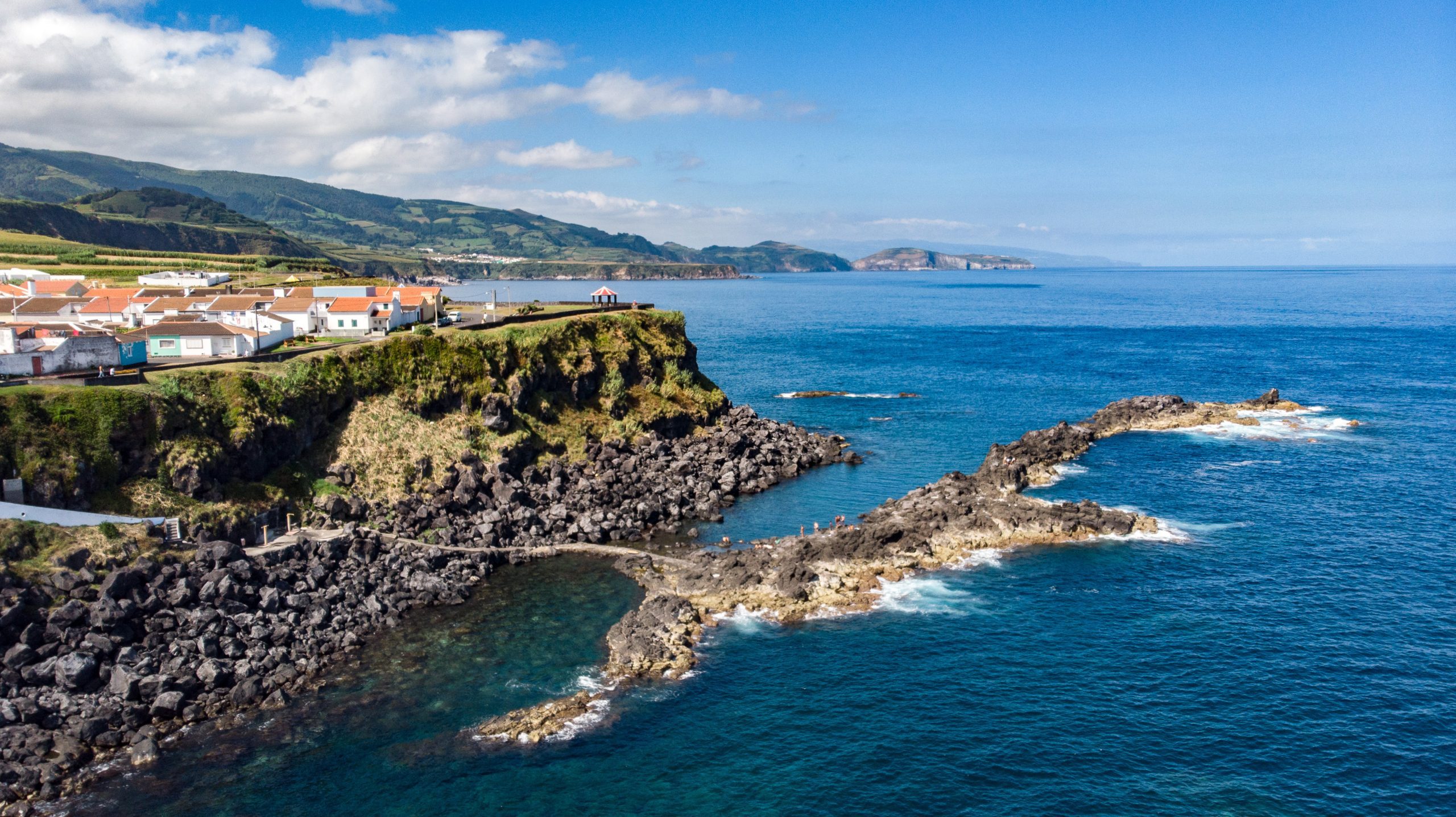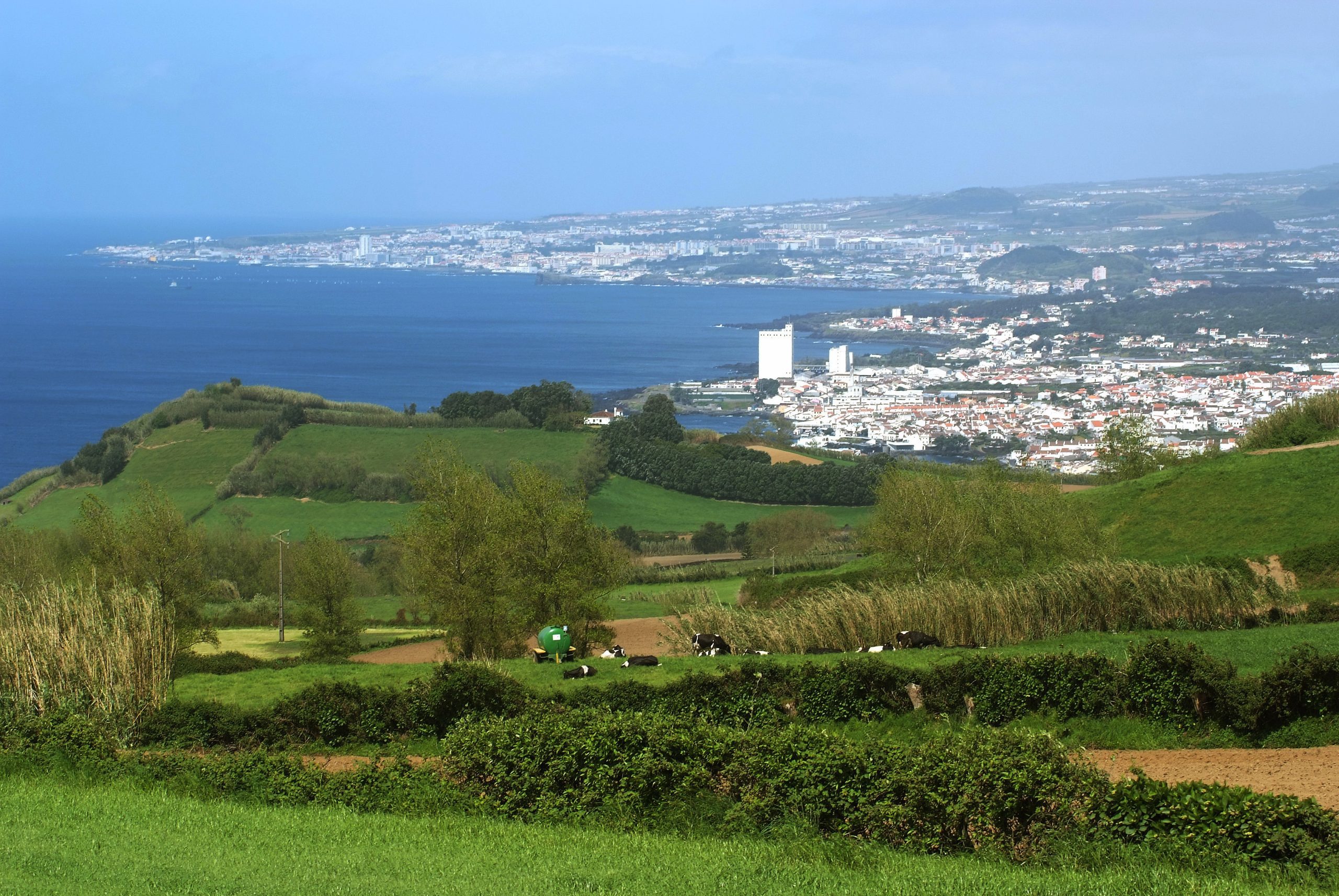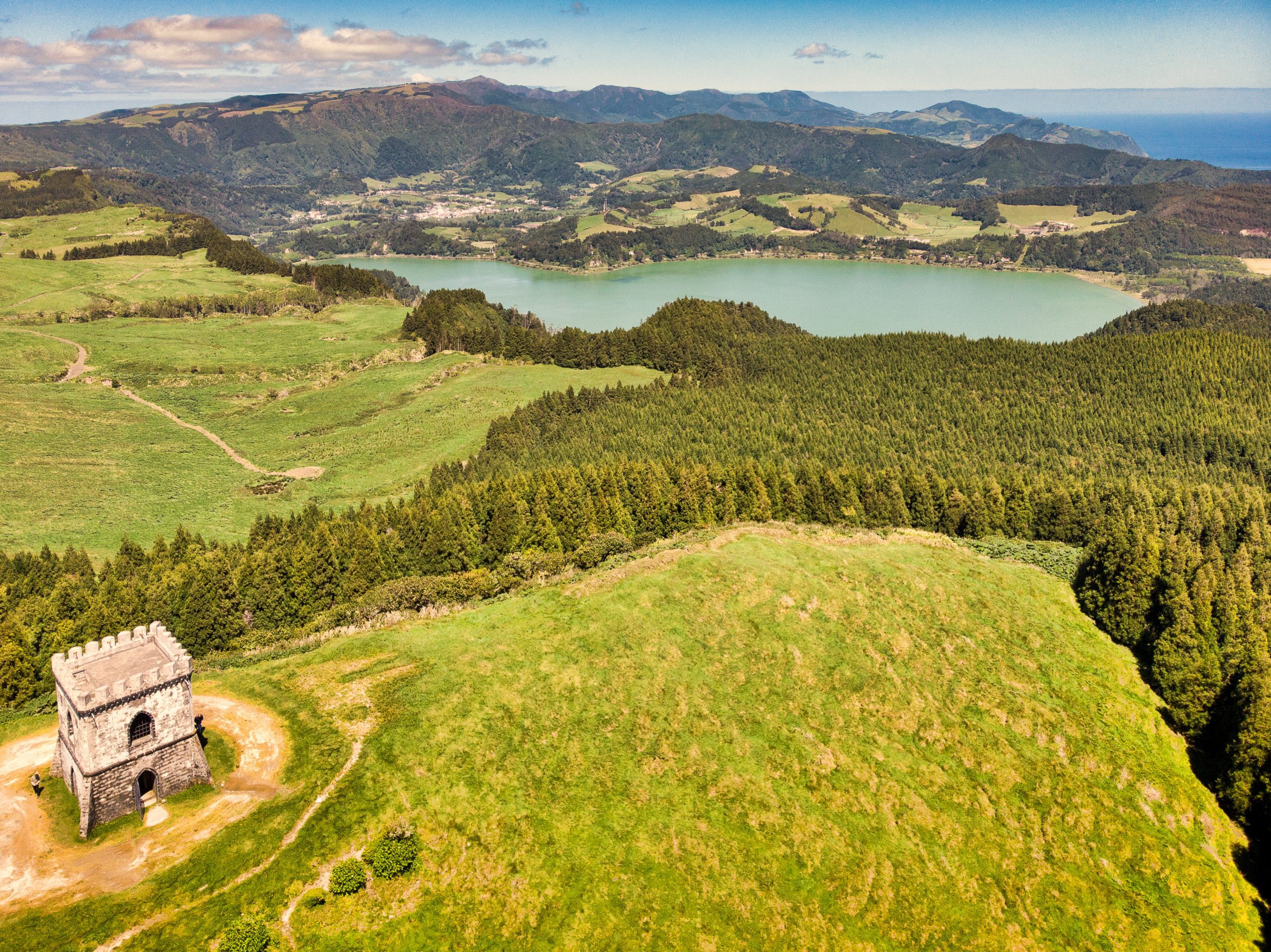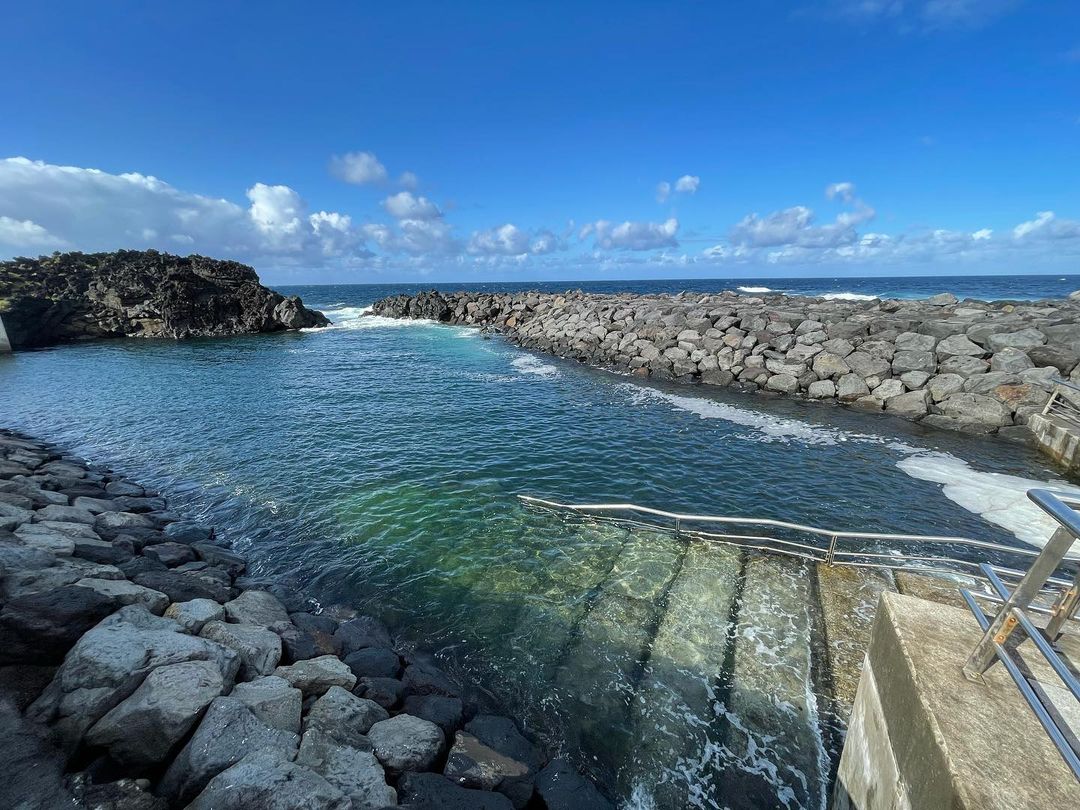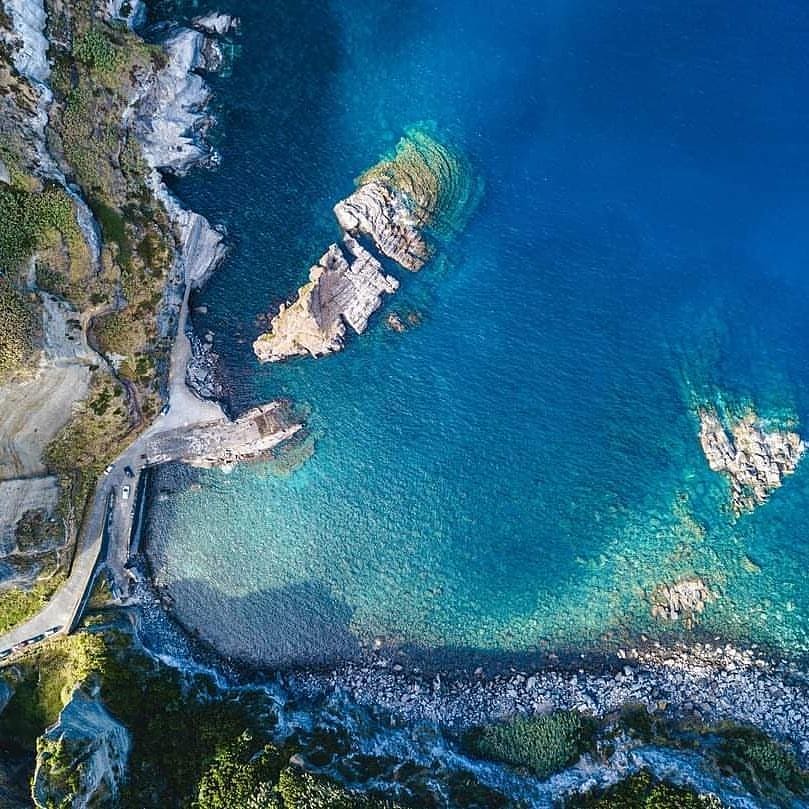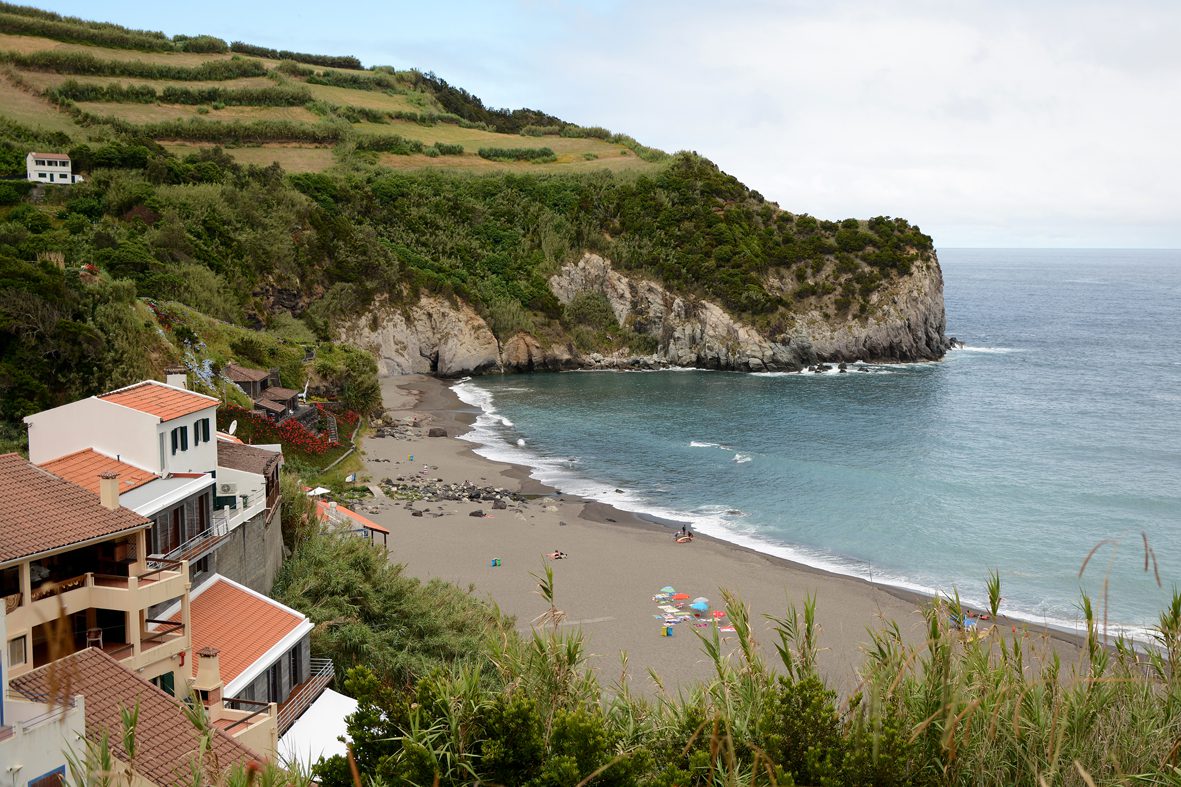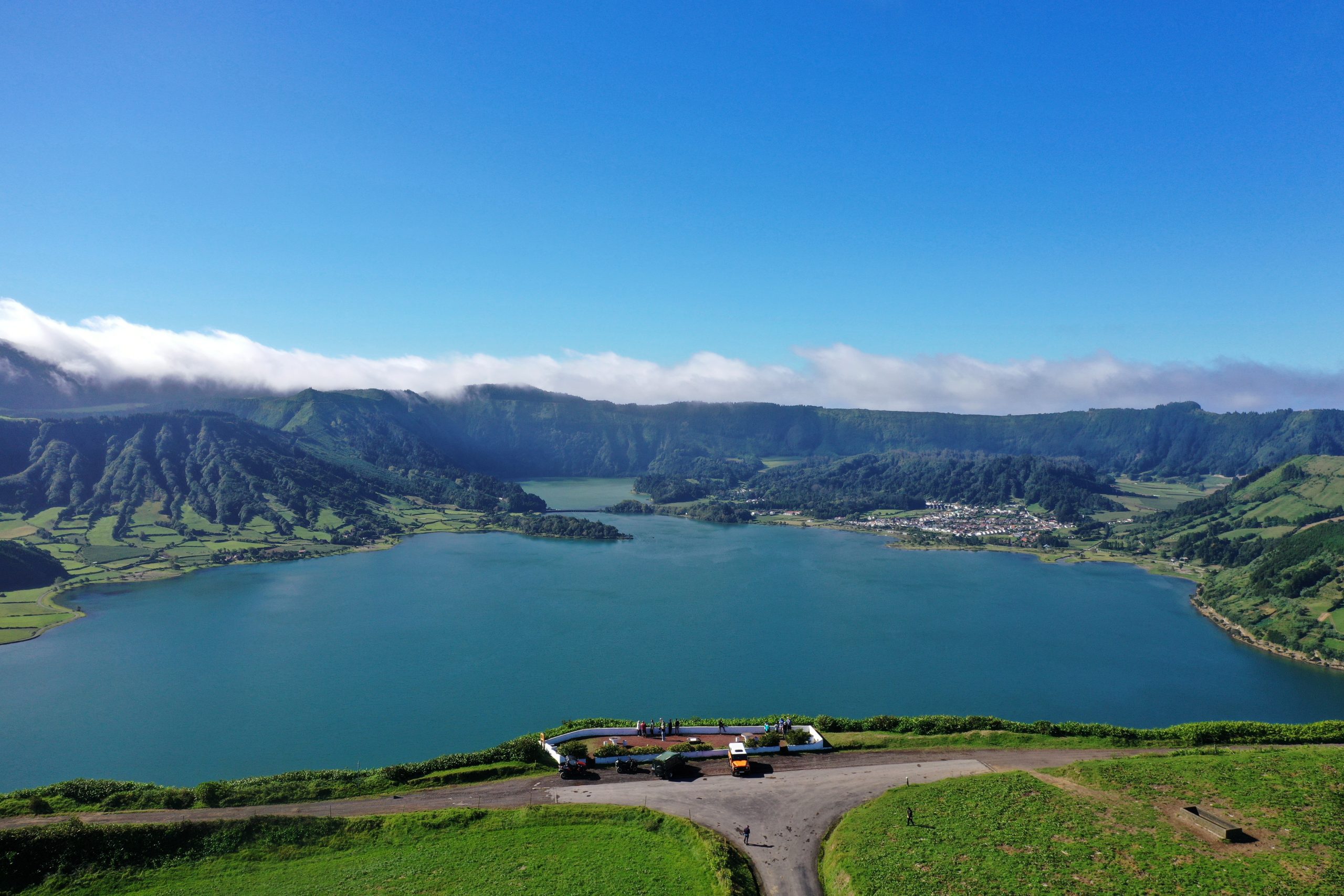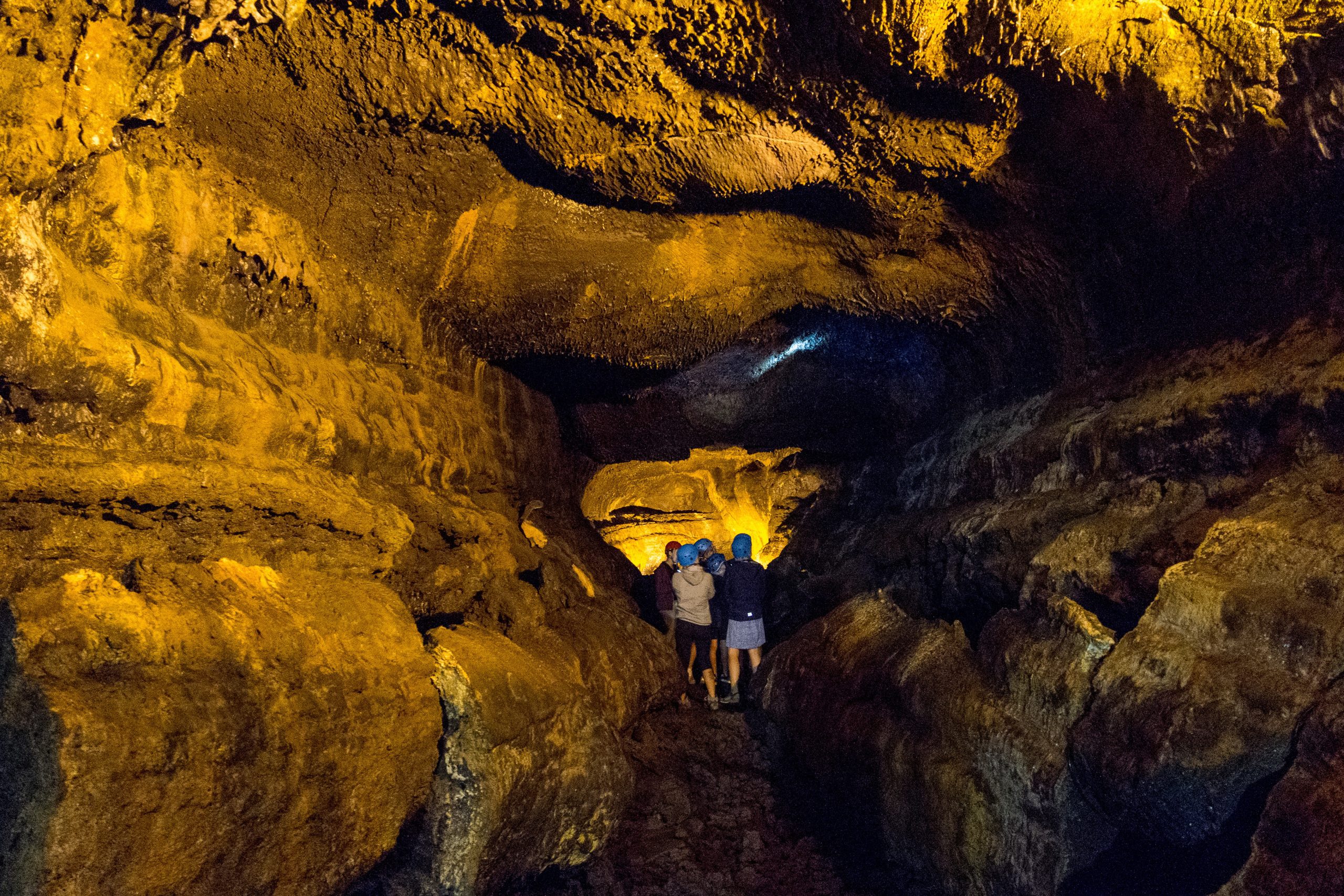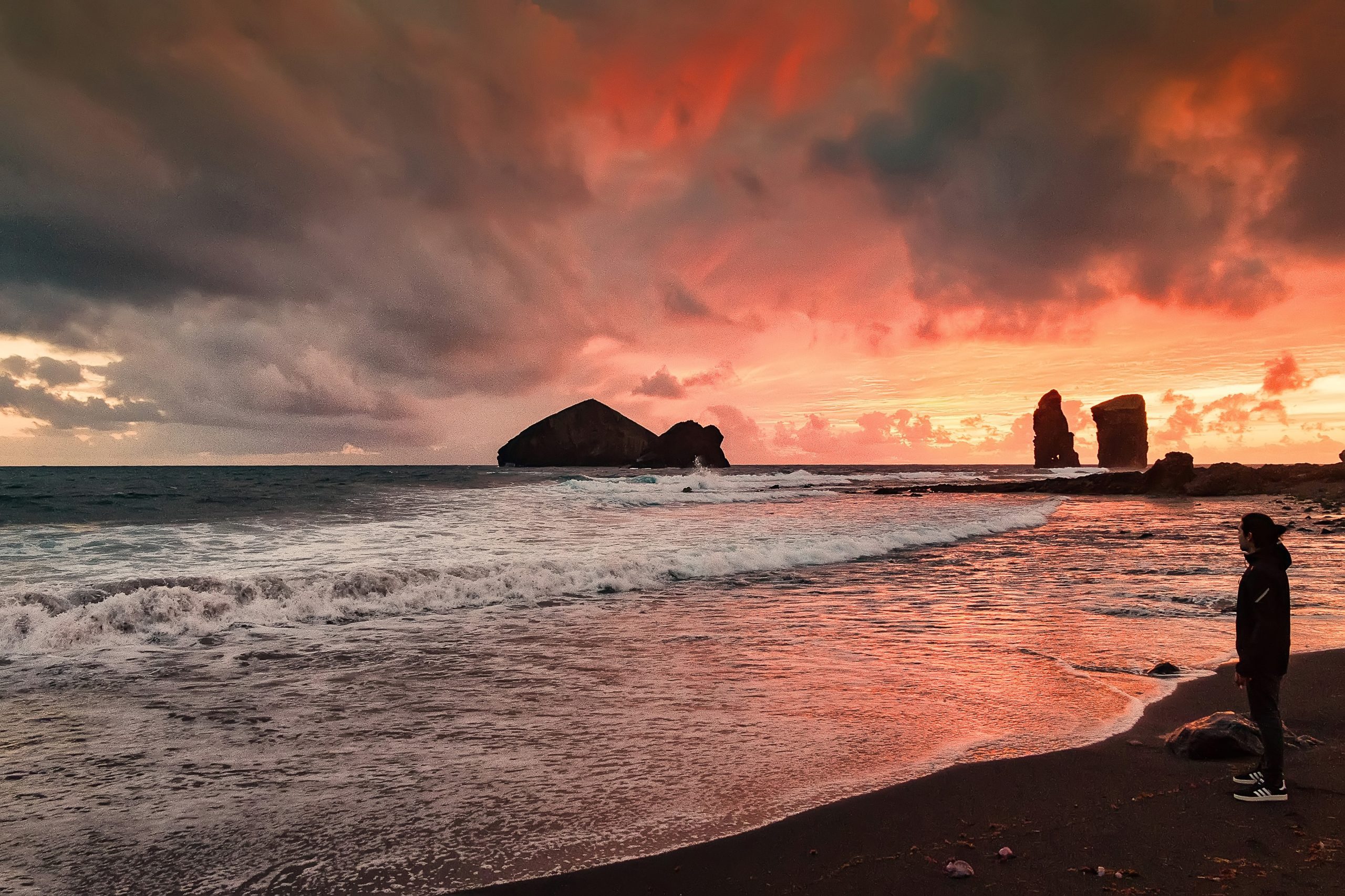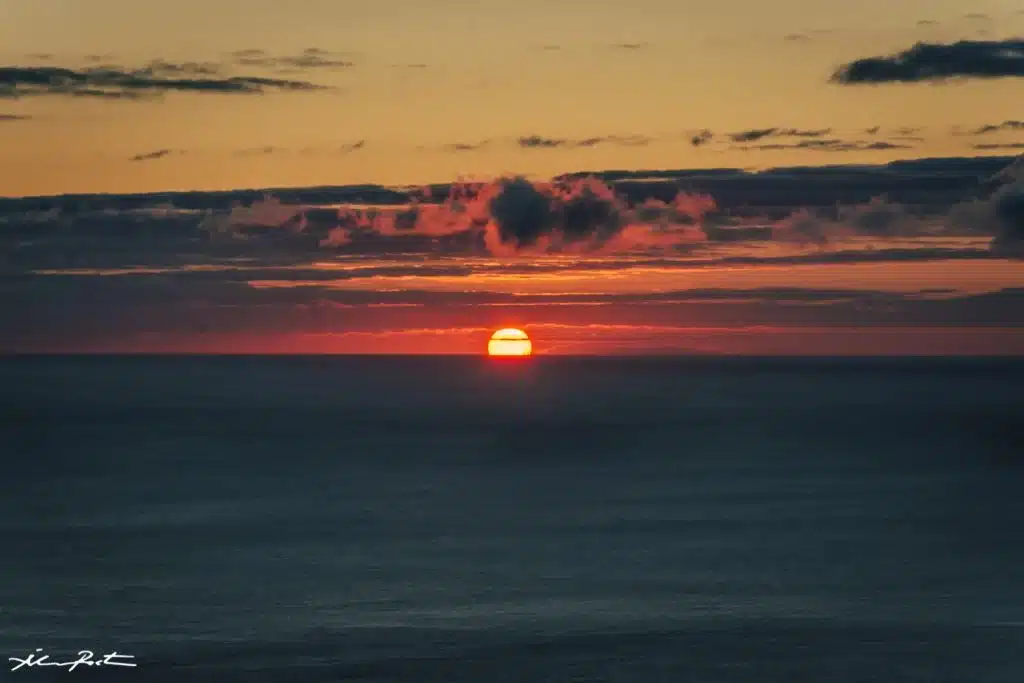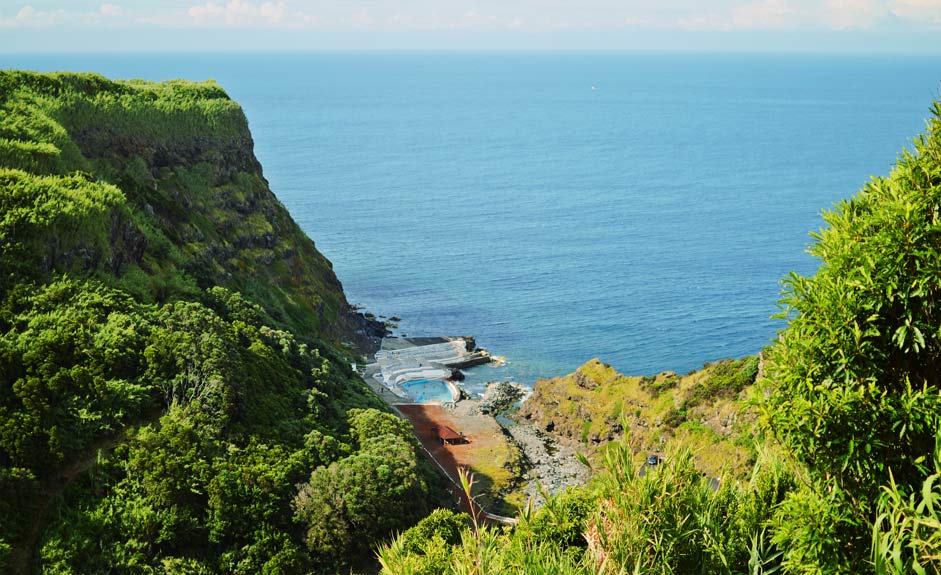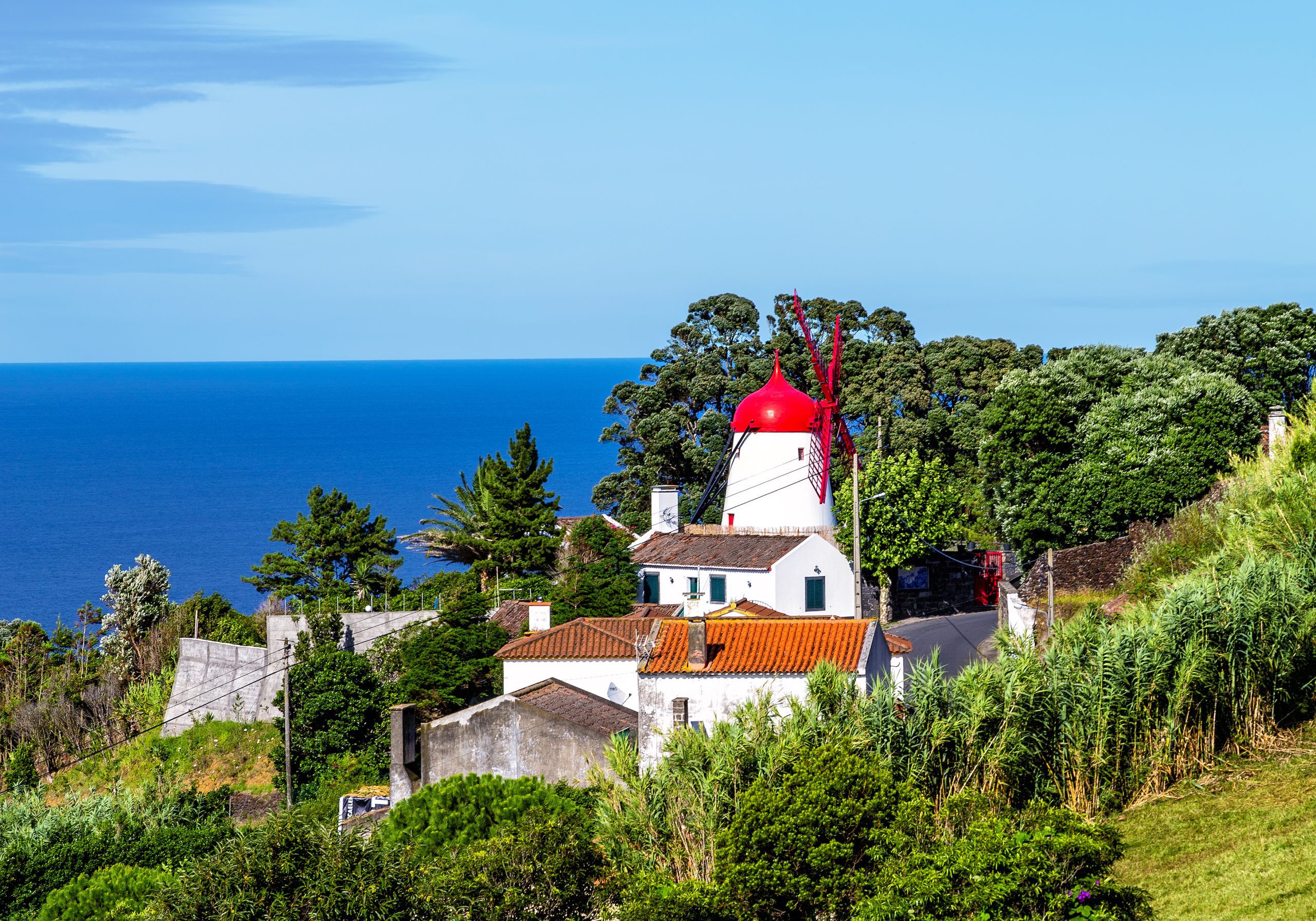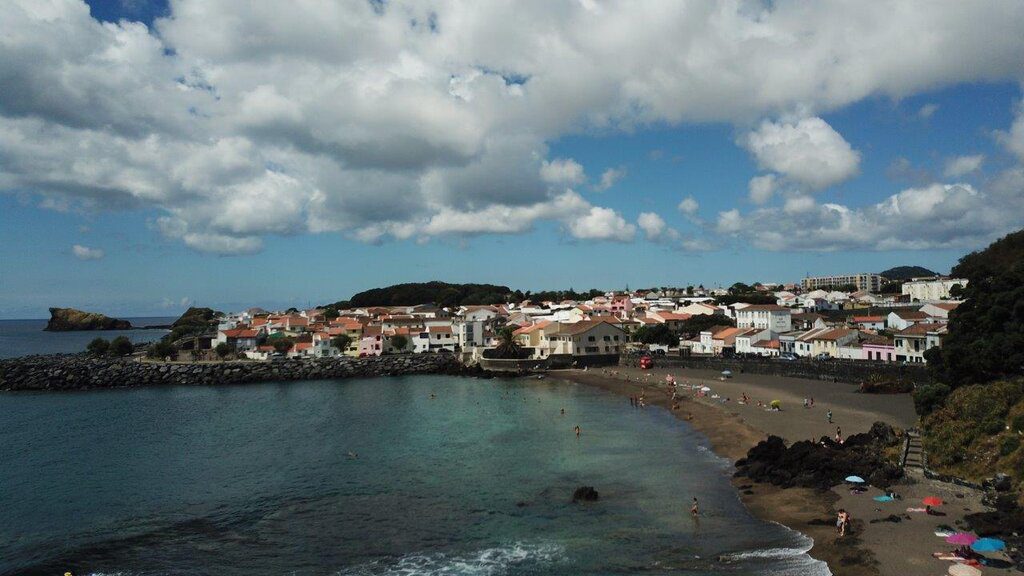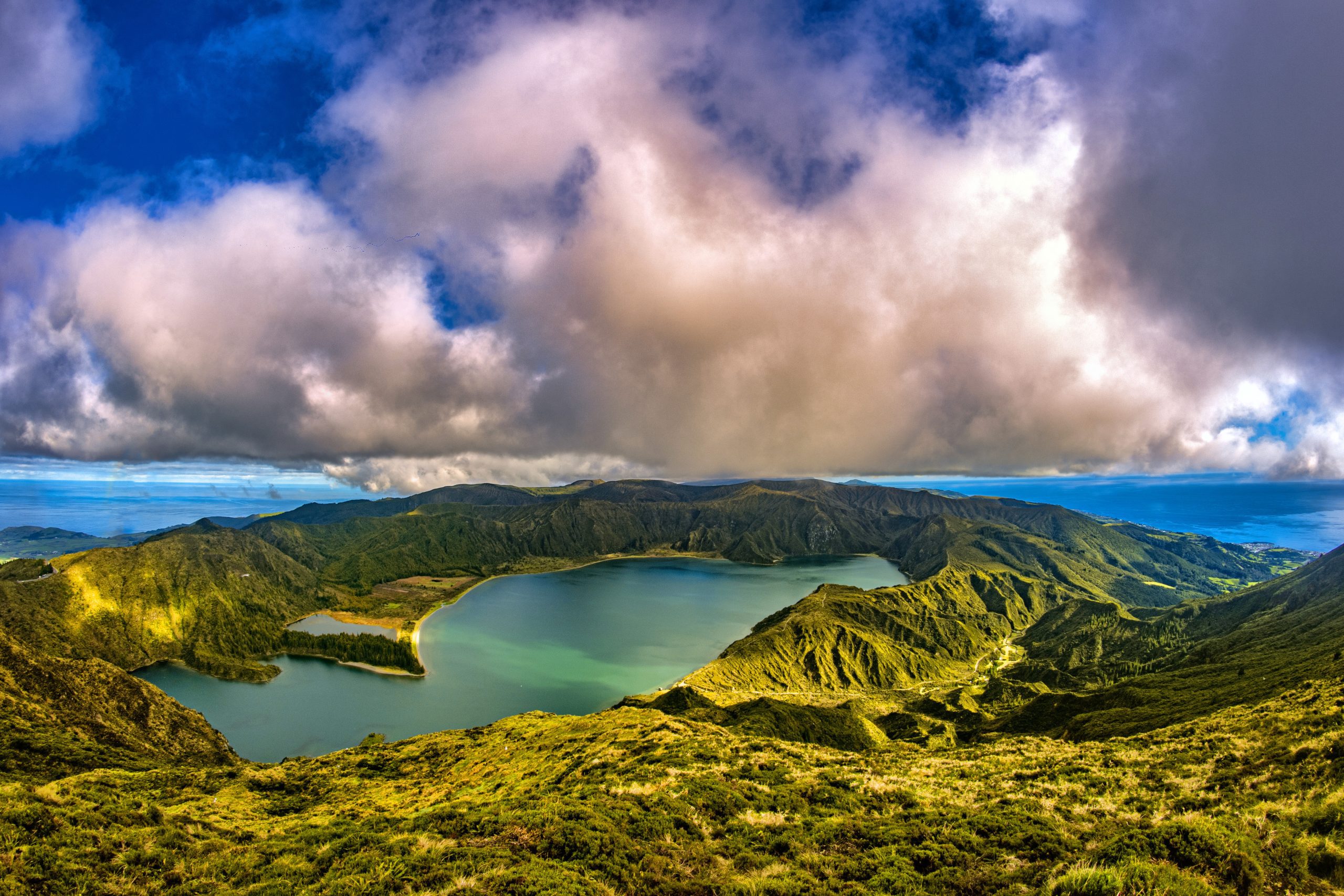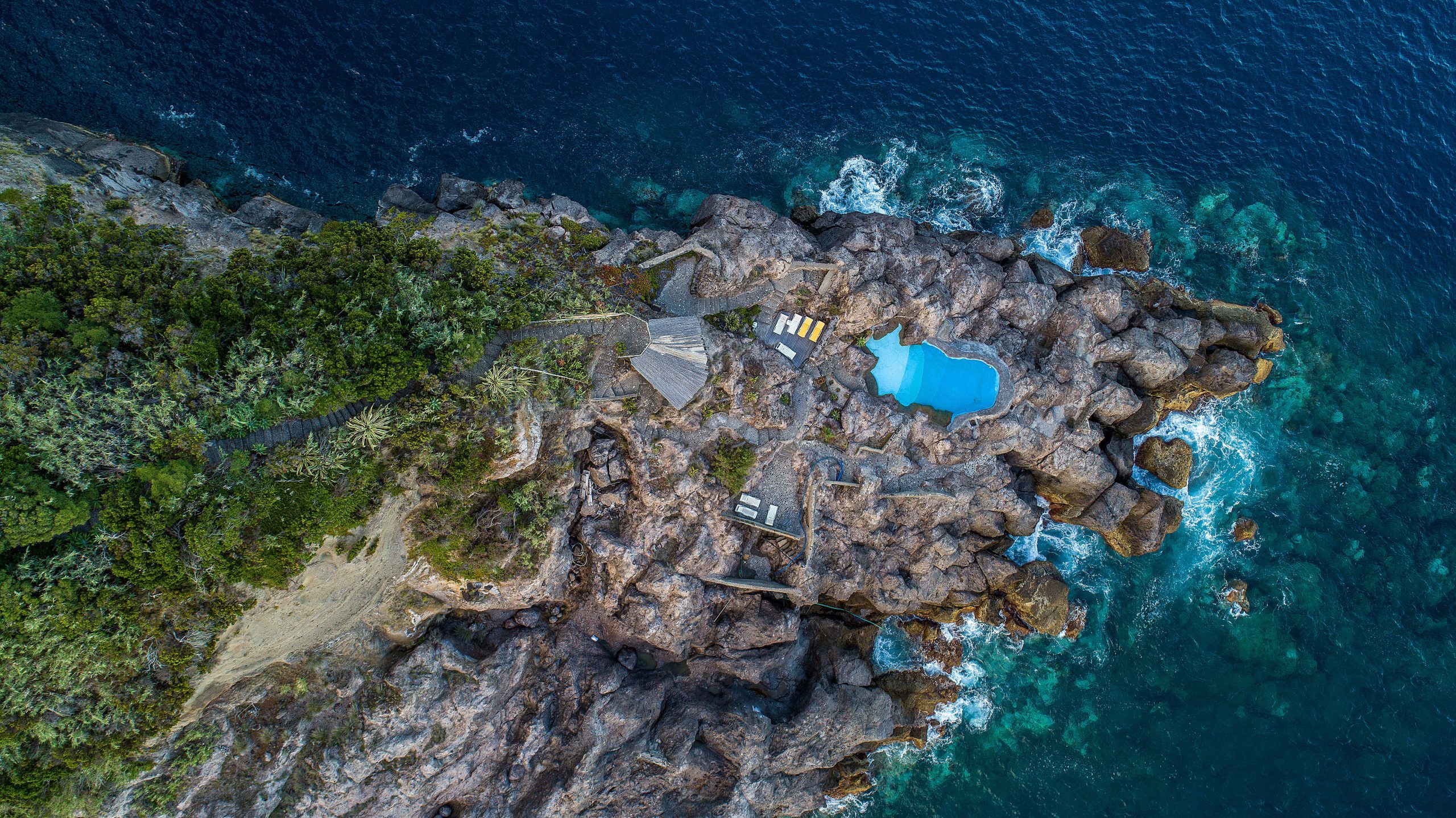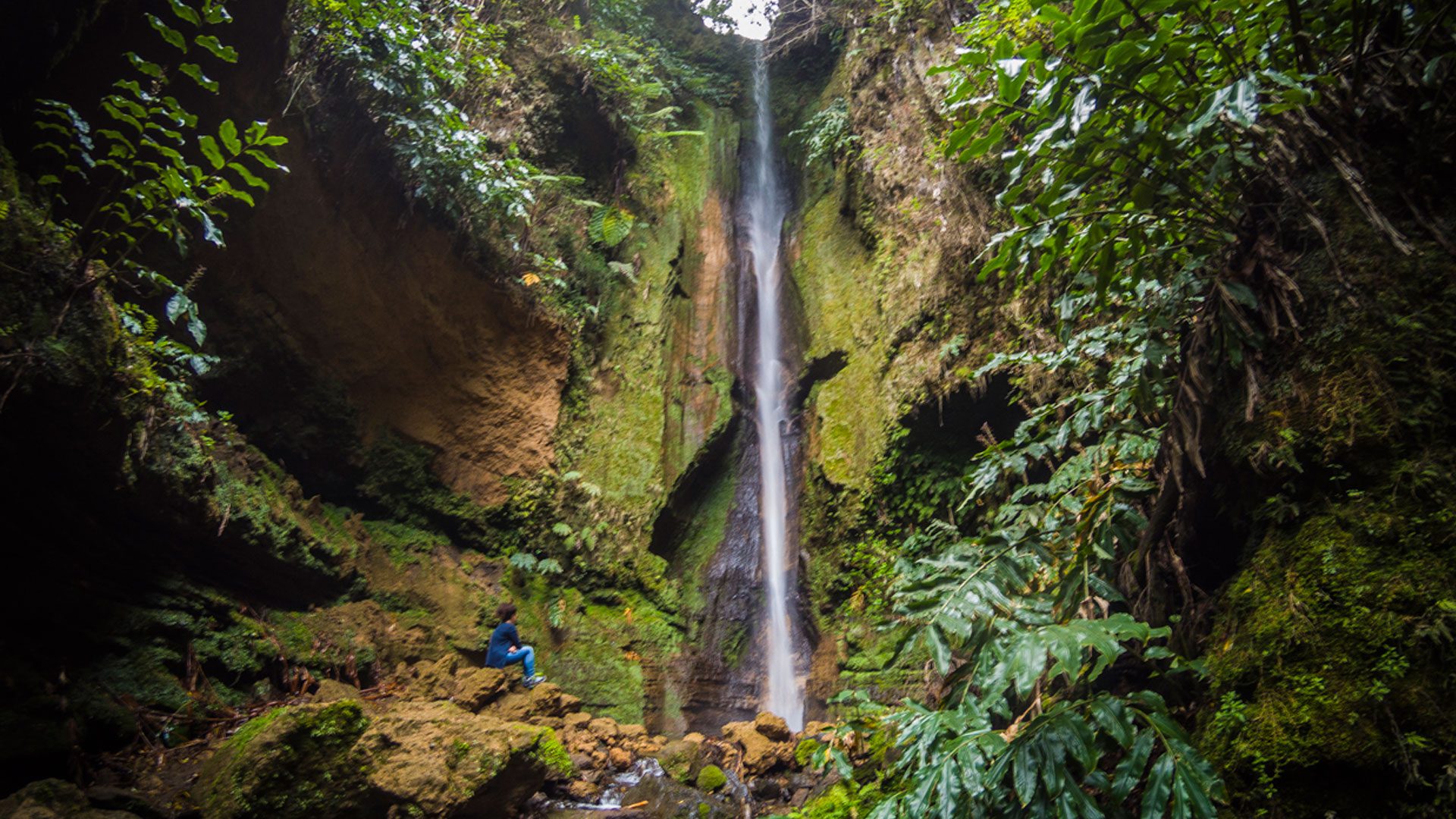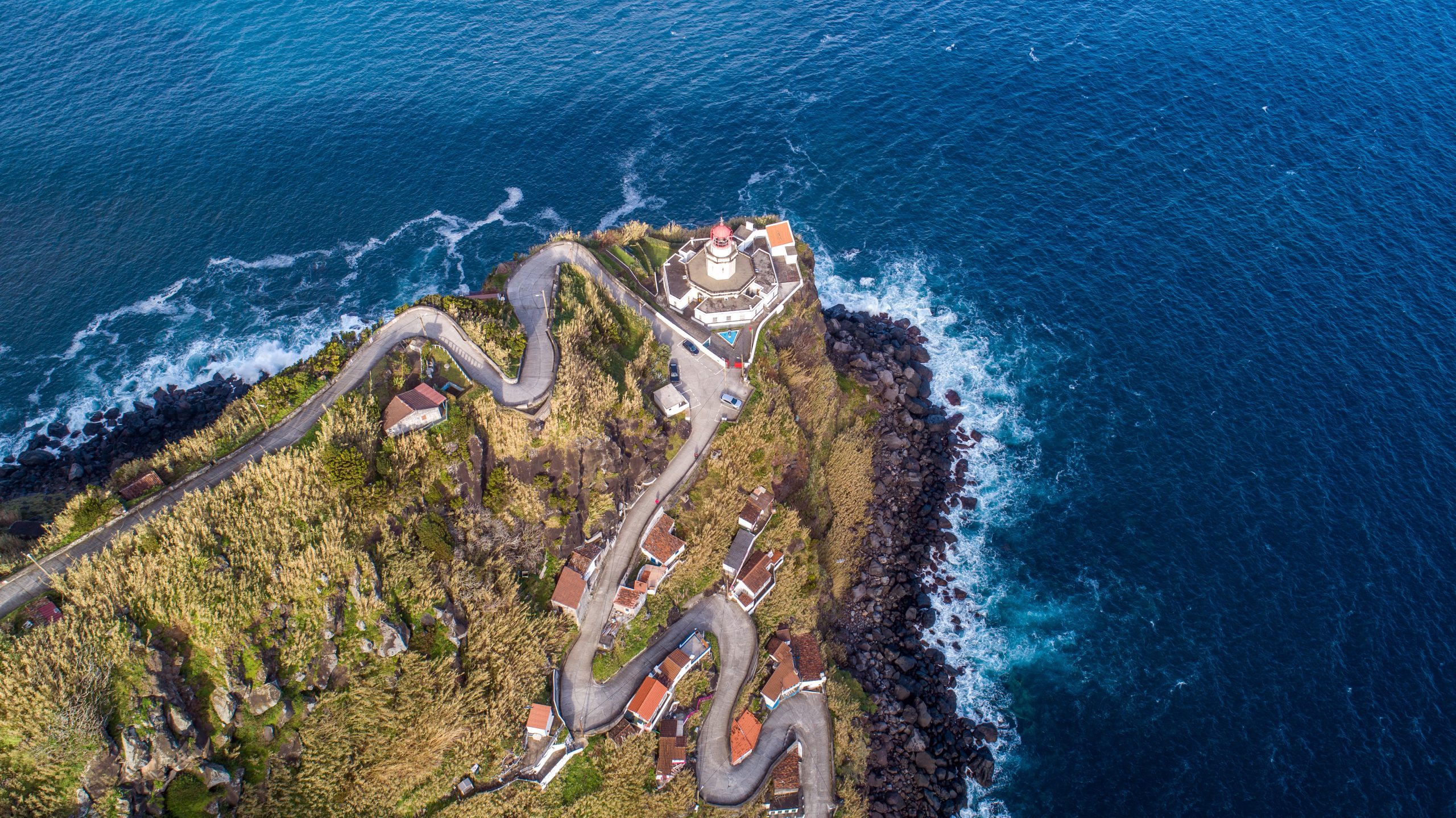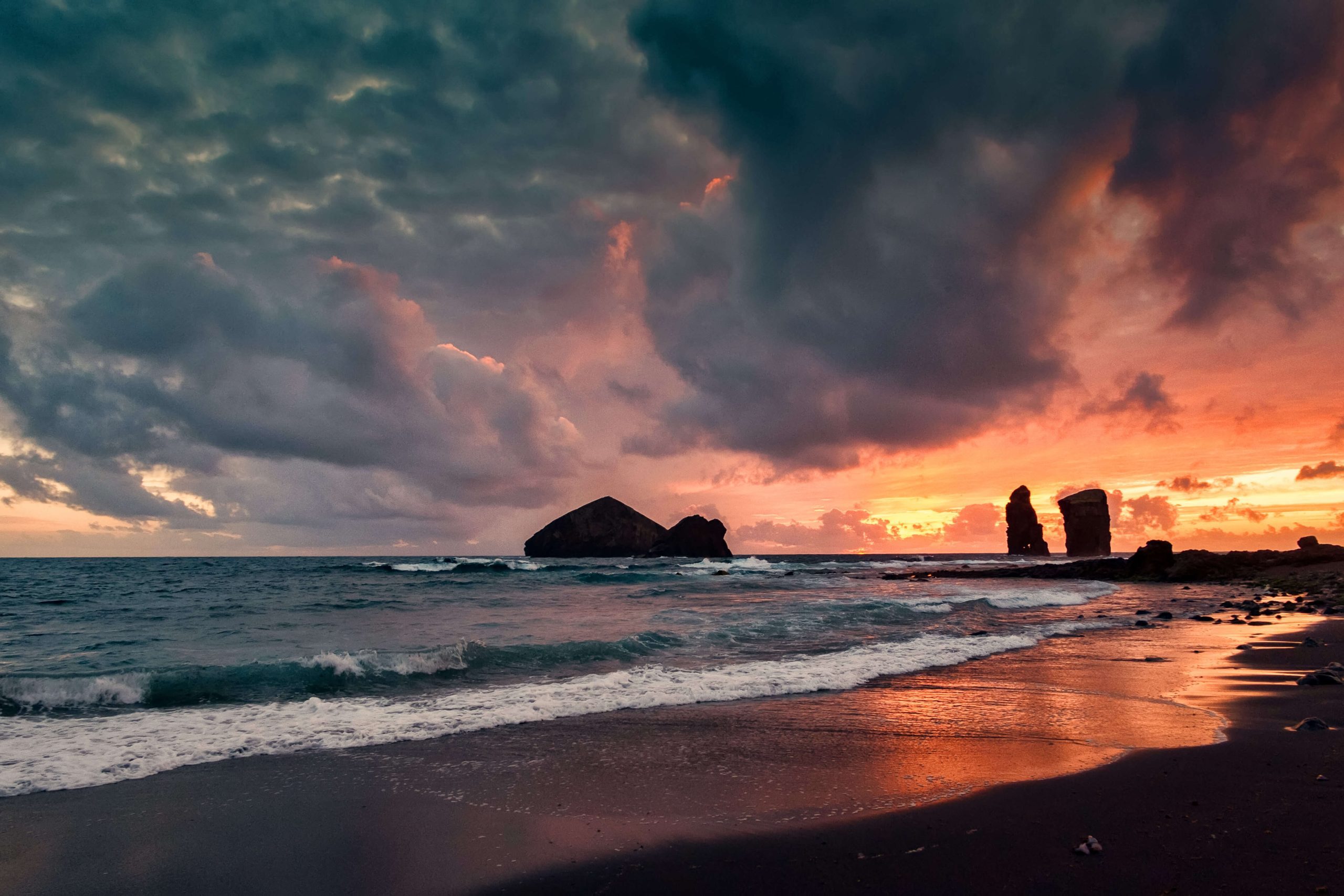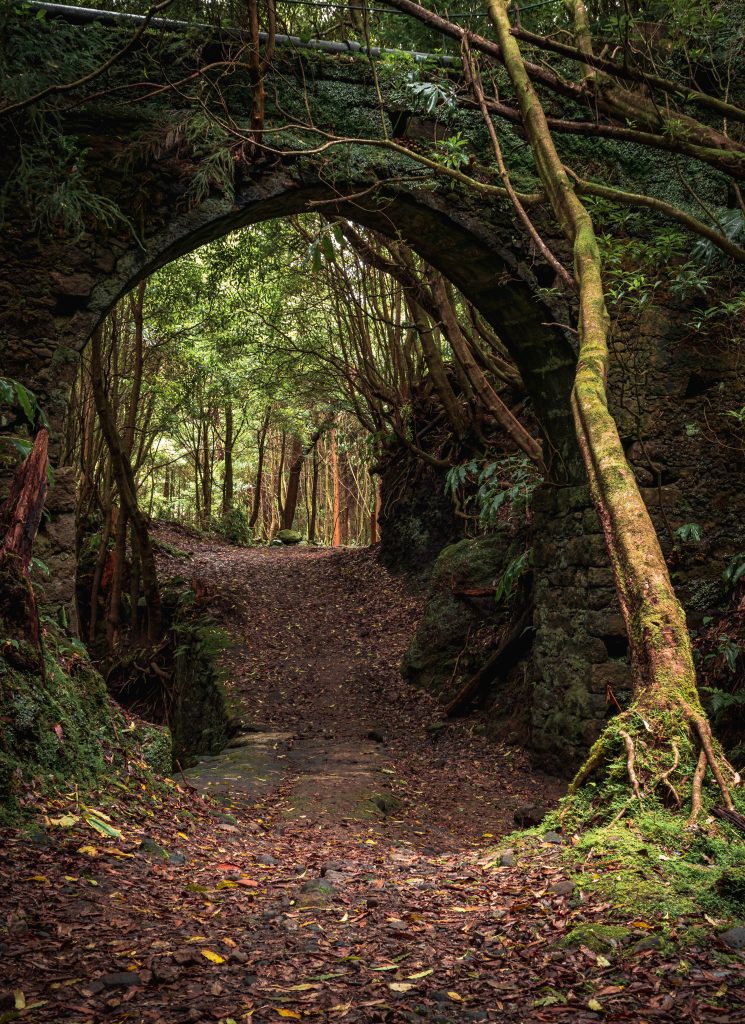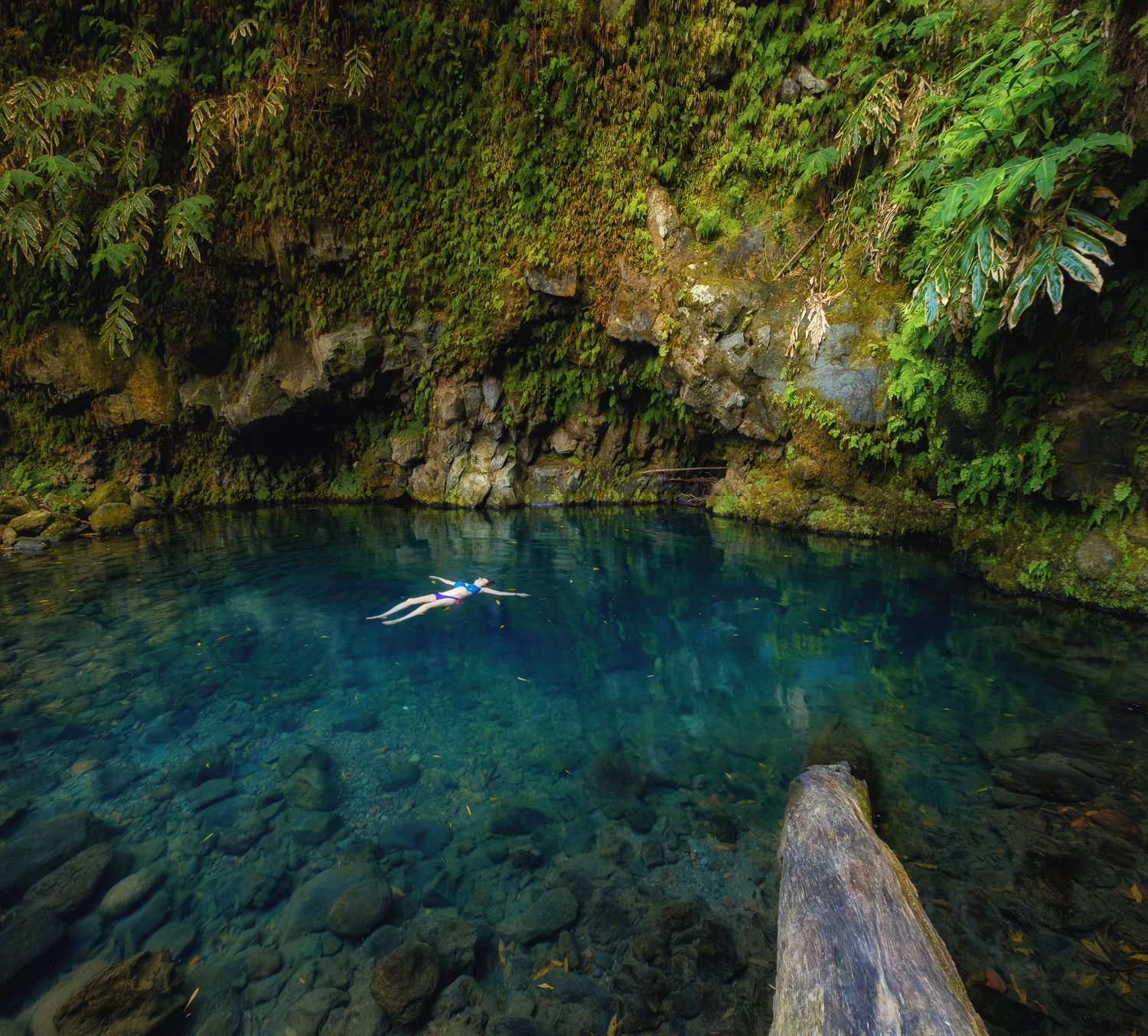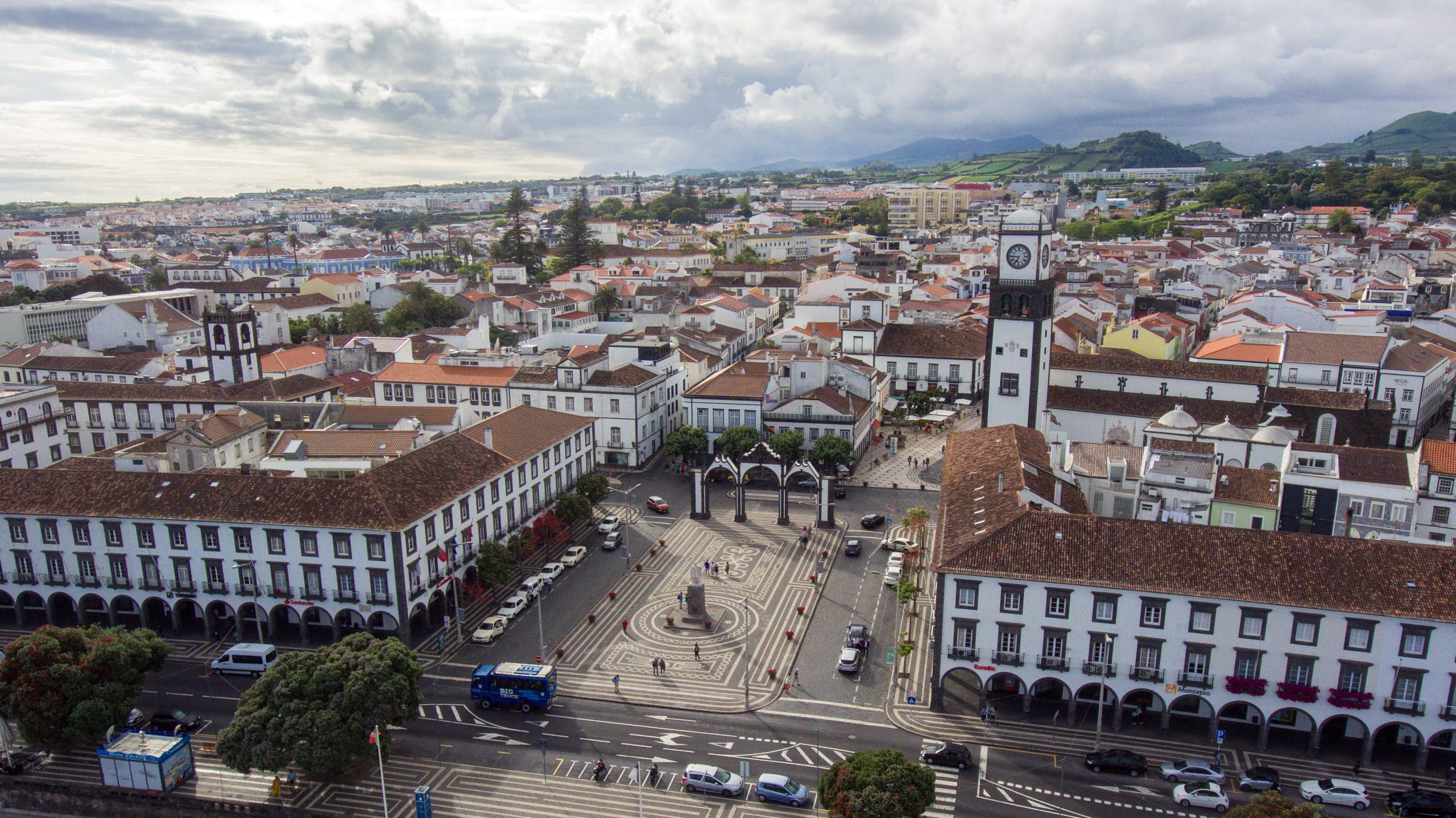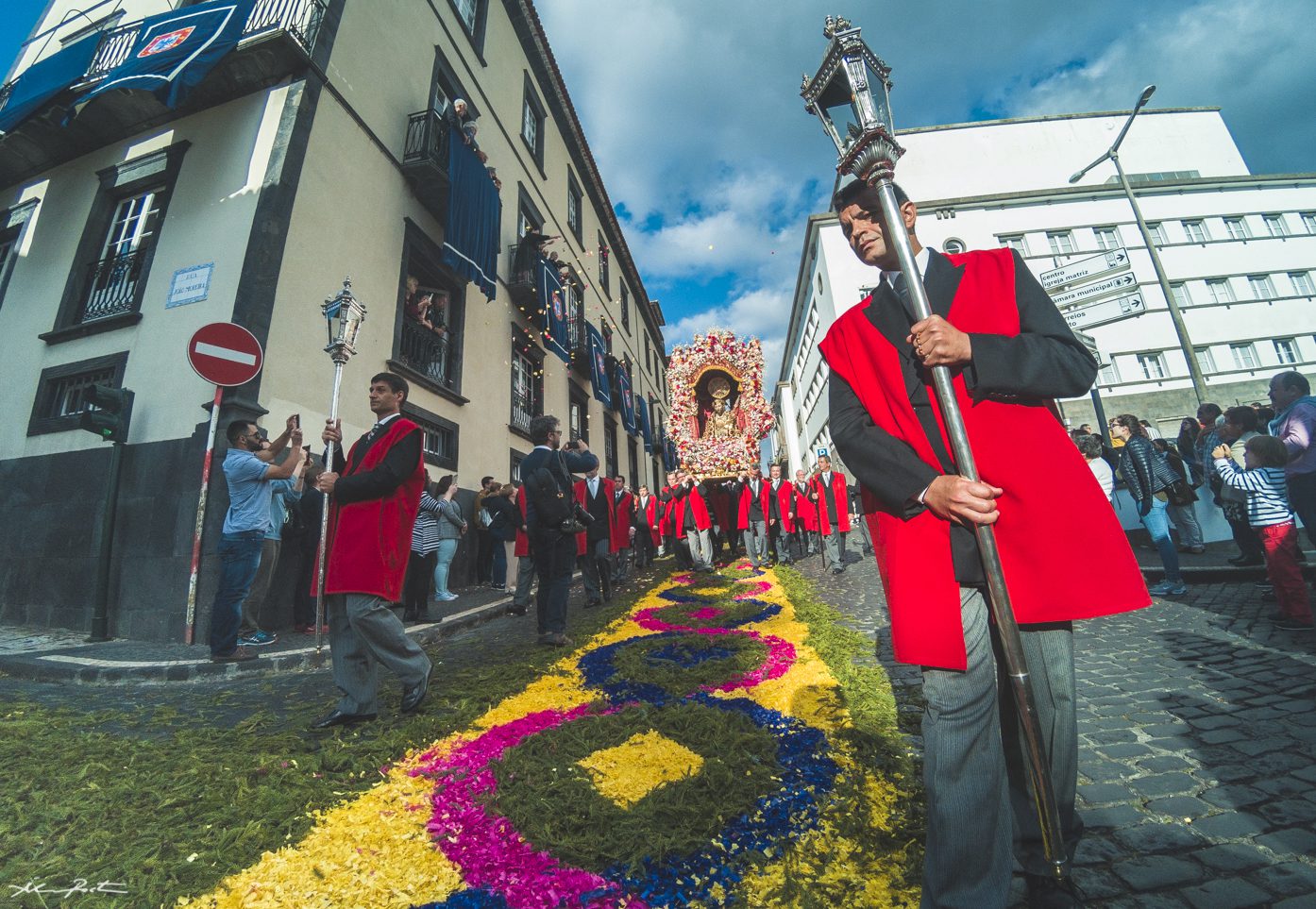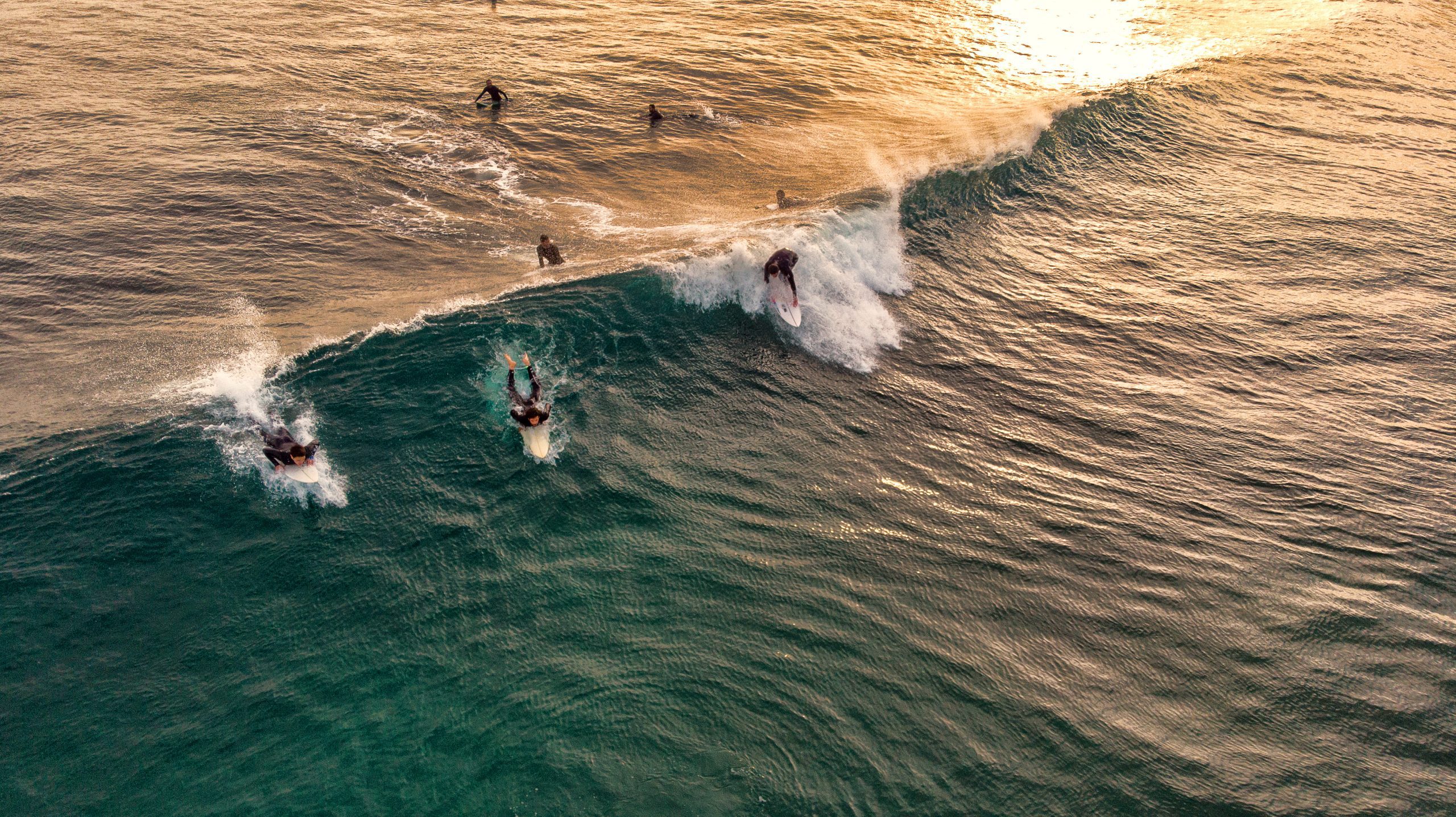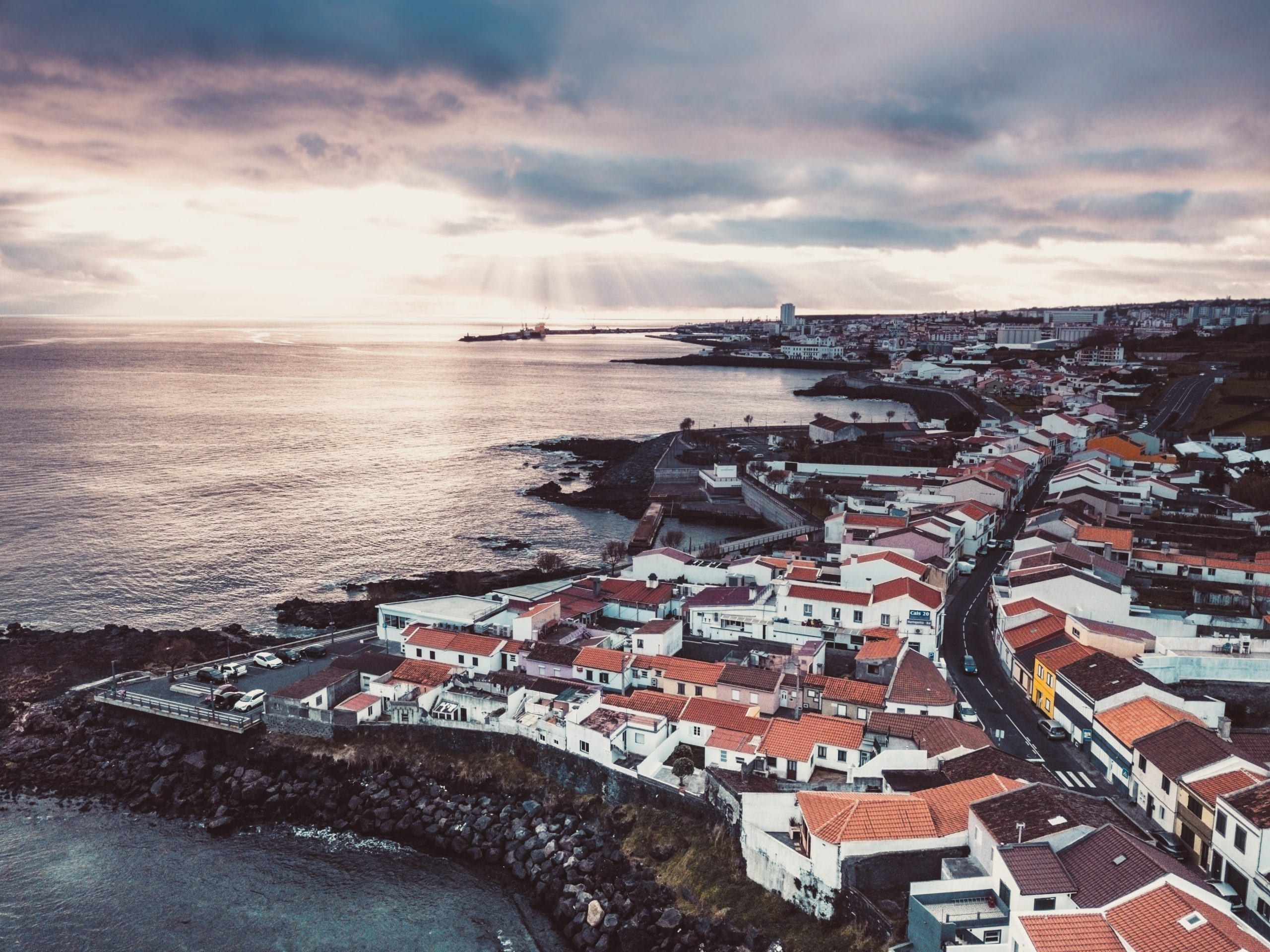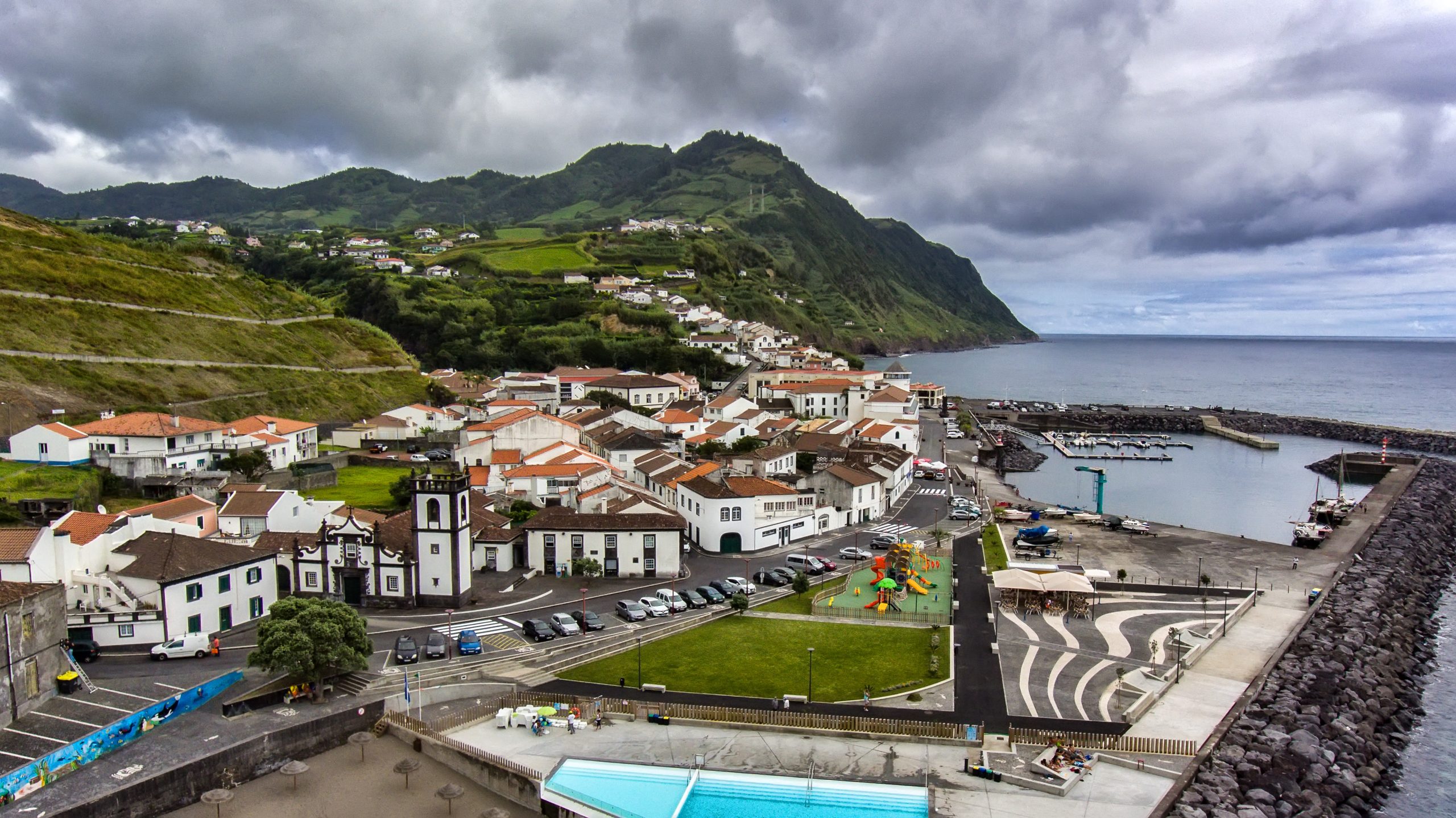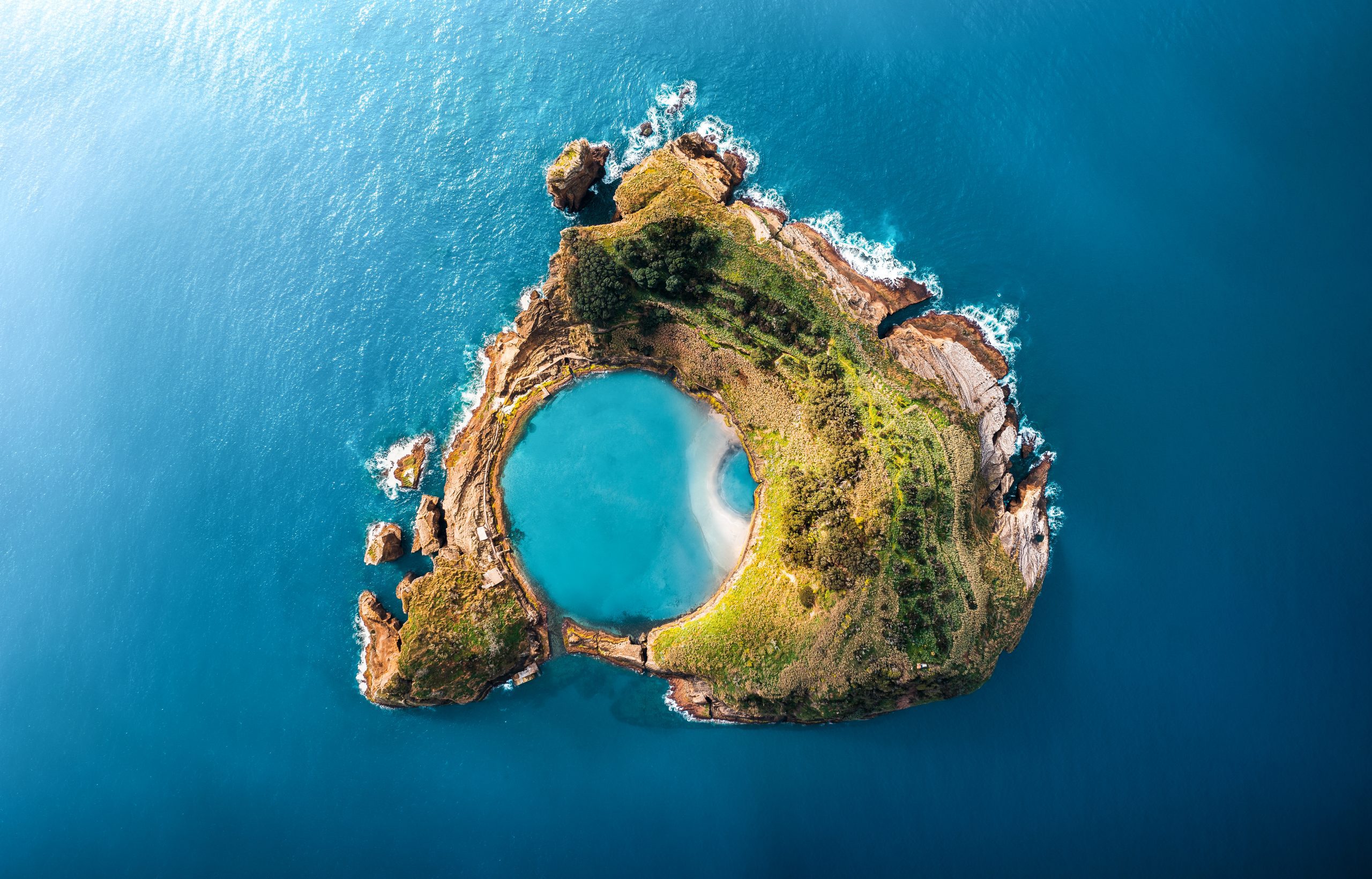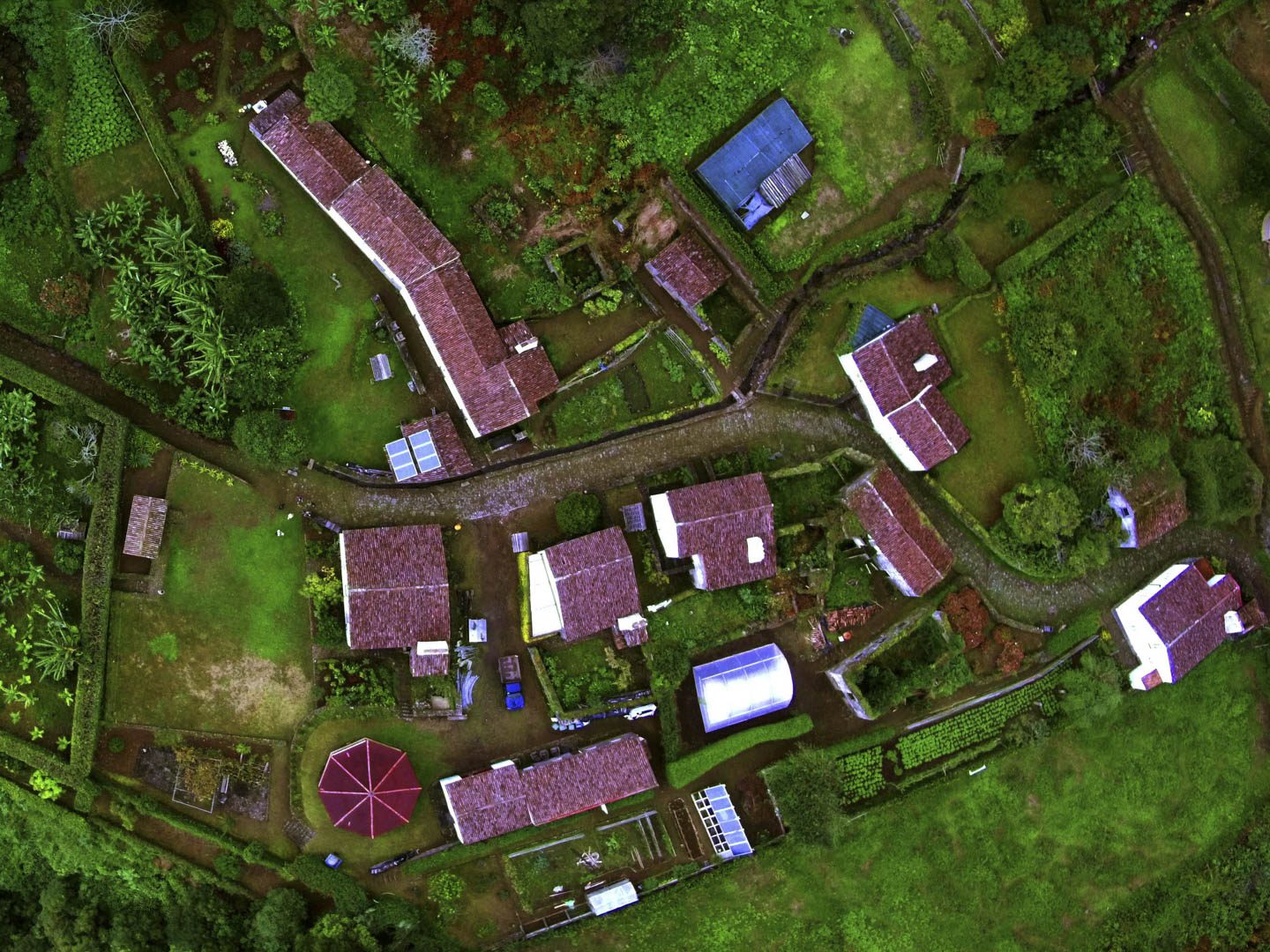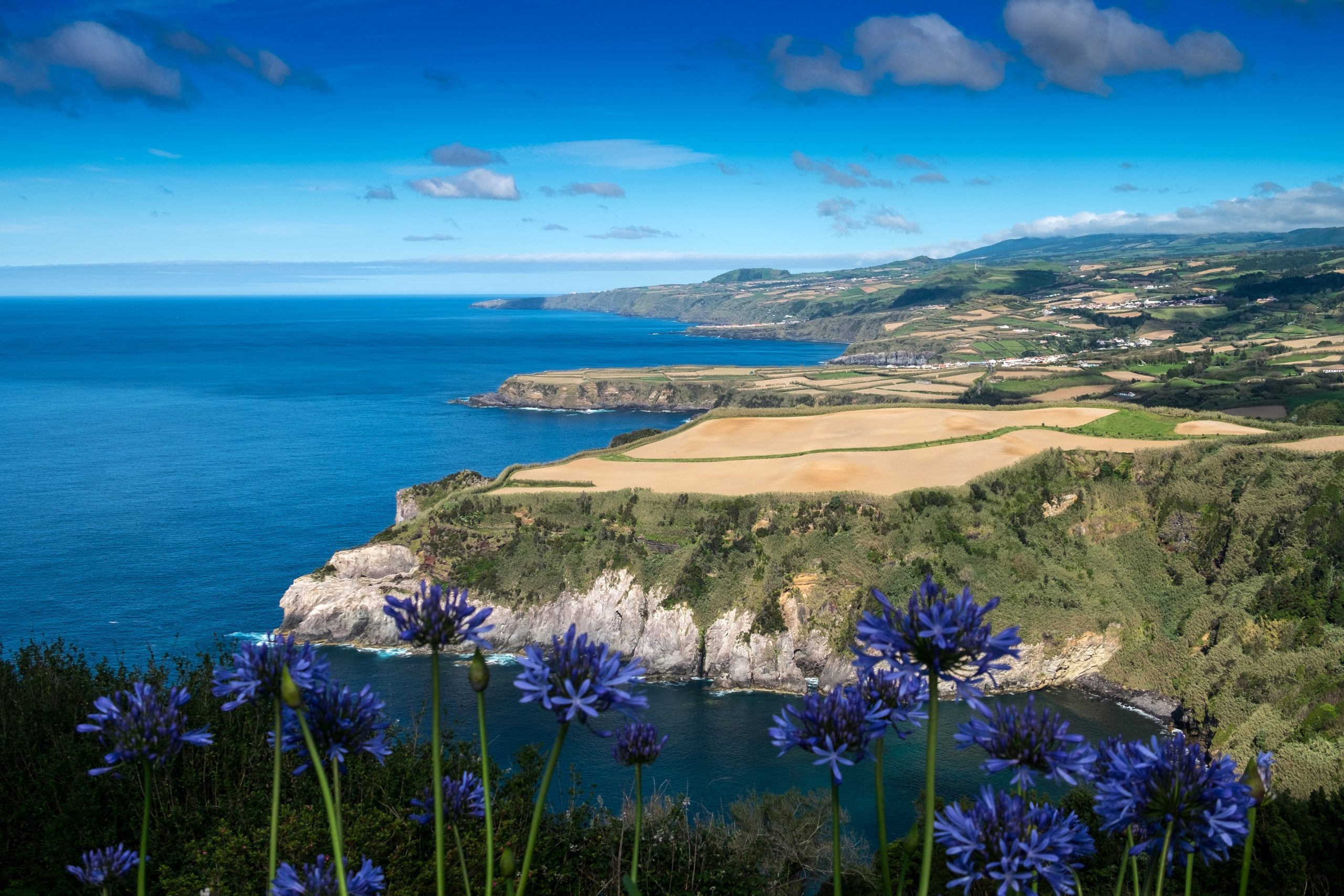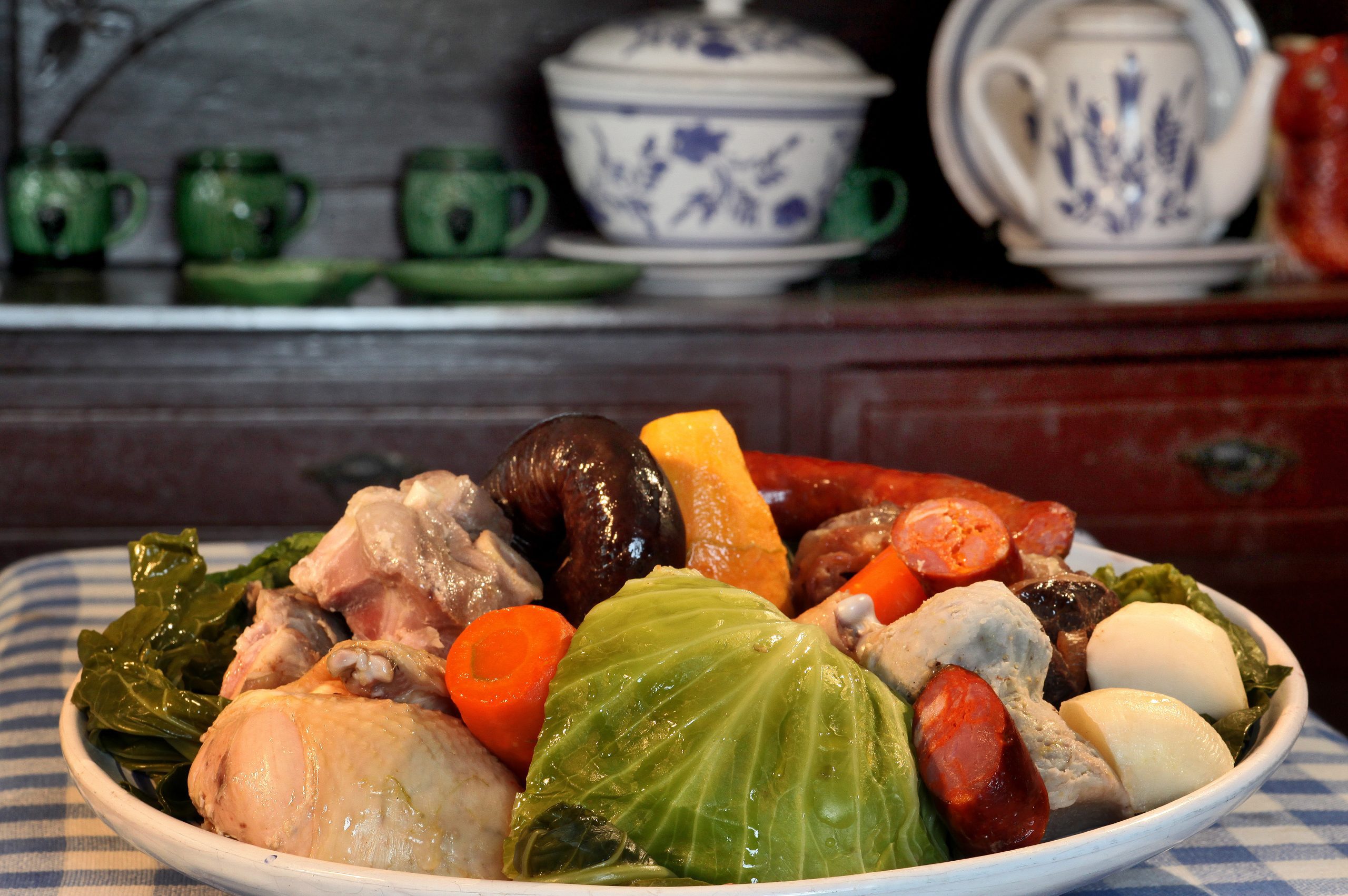Walking in the biggest city of the Azores’ archipelago — Ponta Delgada — you might stumble across Jardim Botânico José do Canto (José do Canto Botanical Garden). It is one of the most beautiful gardens you can find in São Miguel island.
This park, created in the 19th century by the wealthy and cultured nature lover José do Canto, is one of the lesser-known treasures of the Azores. It is the ideal spot for a moment in nature but easily accessible.
Jardim Botânico José do Canto is renowned for its diverse collection of trees, plants, and flowers from various regions of the world. It displays some rare and fascinating species. Along with the vegetation, you can visit a chapel and see the pond. Let’s talk about this wonderful place and its history in this article.
What is Jardim Botânico José do Canto
History & Geography

Botany had no secrets for José do Canto (1820-1898). He was a wealthy Azorean man with many contacts around the world with whom he enjoyed exchanging plants. He got some help from Alexandre Reith, his head gardener. Edmond Goeze (1838-1929), a German botanist who came to São Miguel on a University mission, praised Jardim Botânico José do Canto, saying that it is more prosperous than any of the gardens he formerly visited in all Europe, as this one had over 3,000 plant species.
In 1842, Mr. do Canto married Maria Guilhermina and obtained this land. In 1845, the project was born, importing plants and trees from all over the world, especially Paris and London, thanks to the owner’s contacts in the botanical world. Additionally, the plants, inside the garden, you can also see the Palace José do Canto. This is one of the last Palladian buildings of the 20th century on the green island.
In 2009, the family created the José do Canto non-profit foundation, which the regional government considers to be of public interest. Finally, the park officially opened to the public in 2014, with some recovery work until 2017 to preserve the endemic species of Macaronesia.
Did you know
Many of the plants José do Canto grew in his garden were introduced into the landscapes of Furnas and Lagoa do Congro.
Fauna & Flora

José do Canto Botanical Garden is part of the Botanic Gardens Conservation Secretariat by UNESCO and is even in the World Guide of Botanic Gardens. It is a significant regional and even national reference for gardens.
Some trees at Jardim Botânico José do Canto can impress visitors with their size. For instance, the Moreton Bay Figs (Ficus macrophylla) or the Bunya Pines (Araucaria bidwillii). There, you can find plants from all the continents.
The park also has several ponds and lakes, which are home to various aquatic plants and animals. And, of course, let’s not forget the many birds flying around the garden.
Culture & Festivities
The garden often hosts events open to the public for social, environmental, or educational purposes. These include exhibitions, forums, book presentations, and more. The park was the scene for a concert from the music festival of Tremor. It also already served as a great outdoor venue for the art festival Walk and Talk.
What to Do at Jardim Botânico José do Canto
Visit the Chapel of Sant’Ana

You can find many buildings at Jardim Botânico José do Canto, the oldest one being the Chapel of Sant’Ana. Visit this beautiful religious space visible from the outside of the park but only explorable inside when in the park through the side door. This chapel was founded in 1624 by António de Frias and his wife and is a perfect example of a typical church architecture from São Miguel island from this century.
Explore Flora from All Around the World

With a total area of 5.8 acres, Jardim Botânico José do Canto is a true nature lover’s paradise. Although it doesn’t display the whole original variety of plants from the creation century, you can still witness a lot. The trees you can admire today were brought centuries ago from the five continents, so enjoy a unique walk around the world without leaving Ponta Delgada.
See the Giant Trees

There are several species of gigantic trees that you can see at Jardim Botânico José do Canto. Still, indeed, the most impressive one to the eyes of many visitors is the Moreton Bay Fig (Ficus macrophylla). Its roots can even be taller than a person, and you can approach and touch them to feel Mother Nature’s power. You will feel tiny before these natural wonders…
Take Gorgeous Pictures with the Bamboos

In the garden, you will find a species of giant bamboos: Bambusa Bamboos. They are imposing to see and an excellent backdrop for pictures. This is not vegetation from the Azores; they imported it, just like most of the flora in the park.
Plan Your Visit to Jardim Botânico José do Canto

Best Time of the Day
The best time of day to visit José do Canto Park largely depends on what you want to see and experience. The park is open from 9 a.m. to 5 p.m. during the winter and from 7 p.m. to 7 p.m. during the summer. If you want the best lighting for your photos, you may want to plan your visit during the early morning or late afternoon when the light is softer.
The park can get packed, especially during the high season. If you prefer a quieter experience, it is also preferable to arrive early in the morning or later in the afternoon.
How to Get to Jardim Botânico José do Canto

Jardim Botânico José do Canto is located in Ponta Delgada on the island of São Miguel in the Azores. If you are staying in the city, the garden is nearby, and you can enjoy a walk through the typical streets of Ponta Delgada.
If you are staying outside Ponta Delgada, you can go to the garden by car or taxi. The address is Rua José do Canto, 26, 9500-448 Ponta Delgada. However, you will need to find parking spots around the area, as there is no parking inside the park.
What to Bring
To fully enjoy your visit to José do Canto Park, consider bringing a few things. We recommend bringing comfortable shoes. The park has several paths and trails, and you will likely walk around a lot. Moreover, a raincoat is a must-have at all times in the Azores due to the quickly changing weather.
Remember to protect yourself from the sun. Bring sunscreen, a hat, and sunglasses. Water and snacks are also good to have, as there are no cafés or restaurants within the park. Finally, bring your camera to capture the beautiful moments you will spend in the garden.
Where to Eat
If you need somewhere to eat near Jardim Botânico José do Canto, click here. In this link, you’ll find the 10 best restaurants on Tripadvisor.
Where to Stay
To make your life easier, we’ve filtered the search by:
Pro Tips

If you want to visit a botanical garden but don’t want to pay for the entrance, then you can see Antonio Borges Garden, which is also in Ponta Delgada. It has fewer species but is still beautiful and even features lava caves and a café.
Nearby Attractions
Go Underground at Gruta do Carvão

The Gruta do Carvão stands out for its volcanological origin, being one of the most essential lavic cavities in the speleological panorama of São Miguel. In May 2005, the Regional Government of the Azores classified it as a Natural Regional Monument. In 2007, the cave opened to local visitors (schools and groups of residents in May 2007) and tourists (to the public in August 2007).
Currently, a section with a single branch upstream of the cave can be visited at a distance of 200 meters or a maximum of 800 meters. However, this section can only be visited by appointment. The cave operates as a visitor reception center.
See the Pineapple Plantations

The introduction of Pineapple to the Azores during the 19th century may seem unexpected, but it soon became a symbolic fruit for the island of S. Miguel. Pineapple was brought in to fill the void left by the loss of orange cultivation due to a disease caused by the fungus “Phytophthora citrophthora”.
One of the most influential businessmen in the Azores, José Bensaude, initiated the first greenhouses for pineapple cultivation on S. Miguel Island. On November 12th, 1864, the first shipment of Azorean pineapples was exported to England.
Today, there are approximately 230 pineapple producers in the São Miguel islands, with an estimated annual production of 700 to 1000 tons. Visitors can explore numerous plantations to learn more about this tropical fruit and the various other products that can be derived from it. They can also indulge in tasting the delicious fruit. To visit:
- Plantação de Ananás dos Açores: Rua das Laranjeiras, 9500-317 Ponta Delgada;
- Ananás Arruda: Rua Dr. Augusto Arruda, 9500-454 – Fajã de Baixo;
- Ananás Santo Antônio: R. José Manuel Bernardo Cabral n1, 9500-450 Ponta Delgada;
- Centro Interpretação da Cultura do Ananás: Rua Direita 124, Fajã de Baixo, 9500-448 Ponta Delgada.
Shop Local at the Farmers’ Market

The market of Ponta Delgada, which you can still visit in its original location today, was inaugurated in 1847. Before its establishment, trade in Ponta Delgada took place in various locations but was primarily concentrated in the area south of the city’s main church, the Church of São Sebastião.
At the Mercado da Graça, numerous farmers sell their products, while others offer a wide variety of fruits and vegetables. This market is the ideal place to purchase local products, whether you intend to prepare a meal or bring some Azorean fruit along as you explore the island.
There are also designated areas for butchers and a fish market where you can observe various fish species caught in the deep Atlantic Ocean. Additionally, shops are selling Azorean cheese, wine, and crafts. The market is open every day except Sundays, and the best time to visit is in the morning when more stands are selling their products, allowing for a unique shopping experience among the locals.
→ Related article: Mercado da Graça
Visit the Museum Carlos Machado

Carlos Machado is one of the most important museums in the Azores. It is dedicated to preserving and promoting the region’s history, art, and natural heritage. The museum is located inside a beautiful building that was originally a convent. It now houses a range of exhibitions and collections that showcase the diversity and richness of Azorean culture.
Dr. Carlos Machado founded the Museum in 1876. Near Jardim Botânico José do Canto, the museum showcases collections related to zoology, botany, geology, and minerals. In 1930, the Convent of Santo André was acquired, allowing for the consolidation of all collections under one roof.
In 2006, the Sacred Art section located in the “Igreja do Colégio dos Jesuítas” was integrated with the museum. Subsequently, in 2010, the “Núcleo de Santa Barbara” was also added to the museum, which is focused on promoting culture and preserving memory.
Overall, the Carlos Machado Museum is a must-visit destination for anyone interested in the culture, history, and natural heritage of the Azores. Whether you are a history lover, an art lover, or simply someone who is eager to learn more about this unique and beautiful region, the museum has something to offer for everyone.
Check all our articles about each one of the most relevant points of interest in Ponta Delgada: Gruta do Carvão | Ponta Delgada | Jardim António Borges | Jardim Botânico José do Canto | Pinhal da Paz | Portas da Cidade | Milícias & Pópulo Beaches | Praia de São Roque | Pico Vermelho Windmill | Rocha da Relva | Mercado da Graça | Miradouro Vigia da Baleia
Complementary Information
Best Season to Visit the Azores
The Azores Archipelago boasts a unique climate that shapes its lush landscapes, making it a splendid year-round destination. With mild temperatures and minimal fluctuations, each season offers something unique. Spring averages 16 °C, summer reaches 21 °C, autumn cools to 18 °C, and winter remains mild at 14 °C.
→ For a detailed breakdown of the weather by month, check the following links 🌤️☔️: January | February | March | April | May | June | July | August | September | October | November | December
How to Get to the Azores
The Azorean Archipelago is easily accessible through numerous flight routes. Lisbon and Porto are the main entry points to the continent, with direct flights available to São Miguel (PDL), Terceira (TER), Faial (HOR), Pico (PIX), and Santa Maria (SMA). To find the best flight, use search engines like eDreams or Skyscanner. These platforms let you compare prices and schedules from multiple airlines in one convenient location.
For more details on how to get to the Azores, take a look at our complete guide. But what if you want to explore beyond your arrival island? We’ve got you covered!
- Azores airports 🛬
- Flights between islands ✈️
- Ferries between islands ⛴️
- Which island to choose? 🏝️
- What airlines fly to the Azores? 🛩️
→ Once you’ve found the perfect route, book your tickets and get ready to experience one of the world’s most stunning island groups!
Travel Essentials
Essential Information for your Azores trip: Azorean Language & Phrases 🗣️ | Currency & Banks 💵 | Credit Cards & Traveler’s Cheques 🏧 | Driving in the Azores 🚗 | Electricity 🔌 | Experiences & Tours 🗺️ | Health & Safety 🩺 | Internet & Wi-Fi Access 🛜 | Phones & Mobile Service 📞 | Post Offices & Buying Stamps ✉️ | Public Holidays 🏖️ | Shopping 🛒 | Time & Daylight 🕒 | Whale Watching Guide 🐳 | Best Island to Visit 🏞️
Useful Tools & Apps
The weather in the Azores can be variable, so it’s helpful to use some apps before visiting the islands. Spotazores provides live camera feeds from the main tourist attractions, allowing you to check the weather and plan your visit. For accurate weather predictions, use Windy or Windguru — they provide the most reliable predictions.
Video
Conclusion
Jardim Botânico José do Canto is worth a visit when traveling to São Miguel, mainly if you want to focus on the city of Ponta Delgada but still want some nature around you. The rich diversity of plants at the botanical garden makes José do Canto Park a beautiful setting for a green escape in the biggest city of the archipelago.
Authors’ Note
I am pleased to inform you that all the recommendations in this article are based on my personal experience and observations. As the author, I have personally visited each attraction mentioned, ensuring that every suggestion is grounded in first-hand knowledge and genuine enthusiasm.
FAQs
Built between 1858 and 1861 by António Borges da Câmara Medeiros, a local merchant and politician, the garden reflects the 19th-century romantic spirit.
The garden is located in Ponta Delgada, near the historic center, on Avenida Antero de Quental — São José.
Jardim António Borges is known for its lush vegetation, with endemic and fascinating plants, caves, tunnels made of red lava stone, and lakes.
Apart from being an urban green space, the garden serves as a place for leisure, environmental education, and biodiversity preservation, contributing to the city’s quality of life.

